




Managing Editor
Jason D Pavorattikaran
Editor
John Antony Director (Finance)
Ceena
Associate Editor
Carl Jaison
Senior Editorial Coordinator
Jacob Deva
Senior Correspondent
Bina Menon
Creative Visualizer
Bijohns Varghese
Photographer
Anish Aloysious Office Assistant
Alby CG Correspondents
Bombay: Rashmi Prakash
Delhi: Anurag Dixit Director (Technical)
John Antony
Publisher
Jason D Pavorattikaran
Editorial & Business Office
Cochin: 36/1924 E, Kaloor-Kadavanthra Road, Near IGNOU, Kaloor, Cochin-17. Ph:0484- 2345876, 2534377, 2340080 Mob. 09947141362
Delhi: H.No: P-108, Uppal Southend, Sector 48, Sohna Road, Gurgaon, Haryana – 122018 Ph: 9891771857|099471 41362
Mumbai: 202, Woodland Heights Building, St. Martins Road, Bandra West, Mumbai400 050 Mob: 919947141362
Bangalore: House No: 493, Block 3 3rd Main, HBR Layout, Bangalore-4209731984836, Email:skmagazine@gmail.com www.seasonalmagazine.com
UK Office: “CRONAN”, Boundaries Road Feltham, Middlesex, UK TW13 5DR Ph: 020 8890 0045, Mob: 00447947181950 Email: petecarlsons@gmail.com
Reg No: KERENG/2002/6803
Printed & Published by Jaison D on behalf of PeteCarlson Solutions Pvt. Ltd. at Cochin. Printed at Rathna Offset Printers, Chennai-14. All Rights Reserved by PeteCarlson Solutions Pvt. Ltd. No part of this publication may be reproduced by any means, including electronic, without the prior written permission of the publisher.


Not too long back, a trillion Indian rupees was a big amount difficult to imagine. And a trillion US dollars was unthinkably massive. Then came the global economic crisis of 2009, which governments managed by printing truckloads of dollars, pounds, yens & rupees. And right when governments were finally thinking of restricting money supply to saner levels, came the unprecedented Covid crisis. And the world governments responded again with a totally loose money supply.

But if anyone thought the massive new money supply would reduce inequities between the rich and the poor, nobody could have been more wrong. It not only resulted in the rich becoming richer, the debts and GDPs of heavyweights like US, China, India and others going to multi-trillion levels, but it also resulted in the world witnessing its first 1 trillion dollar market cap company - Apple Inc. And many said Apple is an exception not the norm.

Wrong again. Other trillion dollar companies followed soonMicrosoft, Nvidia, Amazon & Google (Alphabet Inc.). But this is all history now. This week, Google’s parent firm created history by becoming the fourth ever company to surpass the 3 trillion dollar mark. Even this is going obsolete soon, as Nvidia is set to become the globe’s first 5 trillion dollar firm, once a realm only achieved by countries like the US & China. India is expected to reach the $5 trillion GDP mark by 2027 or 2028.
Forget countries and
companies, one person recently demanded a $1 trillion dollar salary for his leadership prowess. He is already the world’s richest guy by a huge margin, and that too for a few years now, but Elon Musk is not satisfied. His pet peeve is that his flagship, the electric automaker Tesla is huge at a $1.5 trillion market cap, but nowhere near the digital tech majors. His other ace, SpaceX, too is massive at $400 billion and the world’s most valuable startup, but he is not listing it as he wants to pursue his moonshots like colonizing mars without investors breathing down his neck.

But there is a huge difference between the performance and valuations of digital tech titans and Tesla. Google is trading at a TTM P/E of just 27, both Apple & Microsoft at 37, and only Nvidia is at a slightly expensive P/E of 57. In contrast, Tesla’s TTM P/E is 260, which is said to be a reflection of its immense future promise! It is another story that this promise has been dented seriously by Trump axing the huge subsidies so far enjoyed by Tesla, and with the Chinese EV giant BYD overtaking it in global EV sales.


All this was said, however, to shine some much needed light on certain Indian companies trying to hyper inflate their IPO valuations. Recently, Lenskart concluded its IPO at an unbelievable Tesla-like P/E of 235. An even more indigestible valuation is coming next week when fintech firm Pine
IPO at an unbelievable Tesla-like P/E of 235. An even more indigestible valuation is coming next week when fintech firm Pine Labs goes for its IPO at a never before seen P/E of 1200 times its annualized Q1FY26 earnings! While Prime Minister Narendra Modi and Commerce Minister Piyush Goyal and their team are working hard for a trade deal with the US and other major nations, these kinds of issues should not escape the attention of its regulators.
India seemingly faces stiff trade barriers from the United States, but in reality, these challenges are not as worrying as they might seem. India’s exports to the US, just about $78 billion a year, are tiny compared to its huge $4 trillion GDP - less than 2 percent. This means that even if US policies make selling to America harder, India’s economy won’t be badly hurt, since it mostly depends on its own people and growing trade with other countries.
The US often blames India for putting high tariffs or taxes on things like cars and electronics. For example, India has very high duties - sometimes up to 100 percent - on imported cars. But even if India cut these tariffs, American cars would still struggle to sell in India because they are far more expensive than cars from India, China, Korea, or even Japan. Indian customers want value for money, and local or Asian brands already meet these expectations at much lower prices. Removing tariffs would not suddenly open the floodgates for expensive US brands.
Trade talks now are caught in a web of international politics, especially because of the Russia-Ukraine war. Some in the US claim
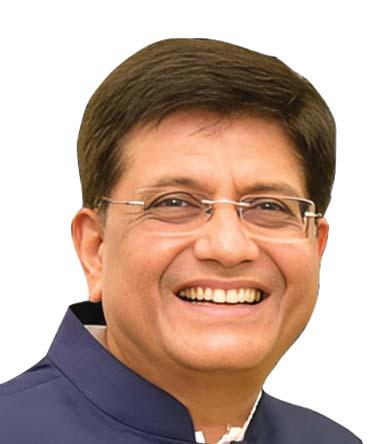
India’s oil purchases from Russia help fund the Russian war effort. But in truth, it is the US that has benefited hugely from the RussiaUkraine conflict, selling over $68 billion worth of weapons to Ukraine since the war began. American companies, especially arms manufacturers, have made big profits while the war continues. Accusing India is more about politics than fact.
US decisions aren’t just about policy, they are influenced by business interests. Former President Biden’s government strongly backed Ukraine, partly because of his family’s connections to businesses there, and this has been well reported in the American press. The current President Trump is more selective, while arms sales continue, deeper US support for Ukraine has faded. Reports link some of Trump family’s business interests in Moscow, which could explain America’s cooler approach to supporting Ukraine these days.
India has options. A zero-tariff trade deal with the US, where both sides drop taxes on many or even most products, could actually help India more, and not hurt it. With Indian exports like textiles, chemicals, IT services, and medicines, India could get more access to American buyers. Since US goods are expensive and not highly competitive in India, the risk of India’s market being swamped by US goods is low. Instead, Indian exporters could grow, learning from global standards and succeeding abroad.
But security remains a worry. The US keeps making overtures to Pakistan’s top military, especially welcoming their army chief with honors. This signals that Washington may still view Pakistan as a valuable partner, despite its poor track record on regional peace. This is quite ironic too, given the military animosity the US has with China, and how close China and Pakistan are. Trump family’s business interests in Pakistan have also come under scrutiny recently. India must speak up in diplomacy, making it clear that stability in South Asia is non-negotiable.
There have been more pressure tactics. US officials recently raised the H1B visa fees, needed by Indian tech talent hoping to work in America, by almost 40 times. This is meant to push India diplomatically. But it could backfire, with the US tech industry relying on Indian engineers, and hurting them will cause problems for American firms,
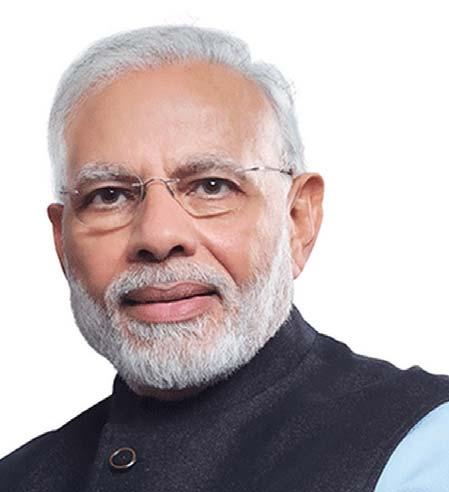
especially when local talent is in short supply.
India should not get distracted with all these. Instead, it should focus on building better ties with many countries, not just America. India is strengthening relations with the EU, UAE, ASEAN, and Latin American countries, opening up more trade channels.
India can also act quickly when needed. When US tariffs started rising, the Indian government recently responded by slashing GST rates on popular items just before the festive season, giving families more spending power and businesses a boost. Creative steps like tax cuts are a response to tough times and show India’s ability to adapt and thrive.
India’s biggest strength is indeed its booming home market. There are over 300 million middle-class consumers in India, and retail sales during Diwali 2024 alone had hit Rs 2 lakh crore - a sign of powerful domestic demand. By supporting small businesses, startups, and local supply chains, India can weather global storms. In the past year, Indian startups attracted $15 billion in new investment, proving India’s growing confidence.
In the end, the US trade barriers are not an existential crisis for India. Since Indian exports to the US are very small compared to India’s total economic size, and because US goods are not a big threat in the Indian market even without tariffs, India can confidently pursue fairer trade deals. By resisting political pressure, calling out misdirection, and pursuing reforms at home, India can turn challenges into stepping stones toward greater growth and global leadership.
John Antony
The International School Bangalore (TISB) has produced 32 toppers in IB Diploma (IBDP), who all won the perfect 45 score. TISB students have also attracted scholarships worth $27.4 million in the last 2 years, to MIT, Harvard, Stanford, Oxford, Cambridge, Yale, Wharton, Brown, John Hopkins & more. TISB is the brainchild of visionary educationalist Dr. KP Gopalkrishna, and is led by its dynamic Vice Chairperson & Director Dr. Bindu Hari and its inspiring Principal Mrs. Kate Reynolds.

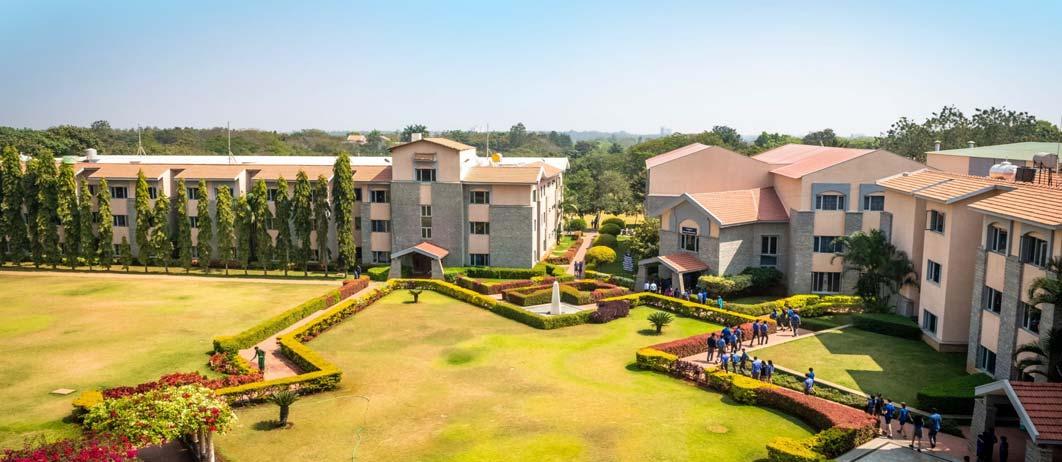

In the heart of Mysuru, JSS Academy of Higher Education and Research (JSS AHER) continues to scale new heights as a leader in healthcare education, research, and community service. In 2025, the institution strengthened its national and global standing by climbing to 21st in the NIRF Universities category and 38th overall, while its constituent colleges secured leading ranks in medicine, dental sciences, and pharmacy. On the world stage, JSS AHER also earned the 56th..
Sathyabama Institute of Science and Technology (SIST) in Chennai, renowned for academic achievements and industry partnerships, is rapidly moving toward regional prominence under the leadership of Chancellor Dr. Mariazeena Johnson. Its celebrated convocation ceremonies and impressive placement rates have earned widespread admiration among students, parents, and recruiters. Yet, like all ambitious institutions, Sathyabama’s journey is..

In an age when manufacturing headlines are dominated by global supply-chain shocks and geopolitical jockeying, few Indian engineering stories feel as confidently future-facing as Dynamatic Technologies. Once a niche hydraulics..
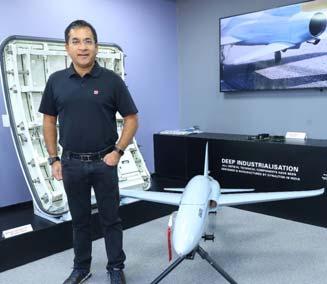
When Siddaramaiah returned to the chief minister’s chair in May 2023, he did so with an agenda so very characteristic of him, like his commitment to welfareled governance, a tongue sharpened by decades of state politics, and a promise to restore what his party described as social justice at scale. Two years into this tenure, the government’s narrative has been shaped by a flurry of high-visibility welfare measures, targeted investments, and an insistence on delivering benefits directly to citizens, which are moves that have already..
Science Says Stop Asking ‘Will This Make Me Happy?’ and Start Asking Yourself This Instead. Predicting whether the outcome of a decision will make you happy is often impossible. Predicting a decision’s impact on you is not.
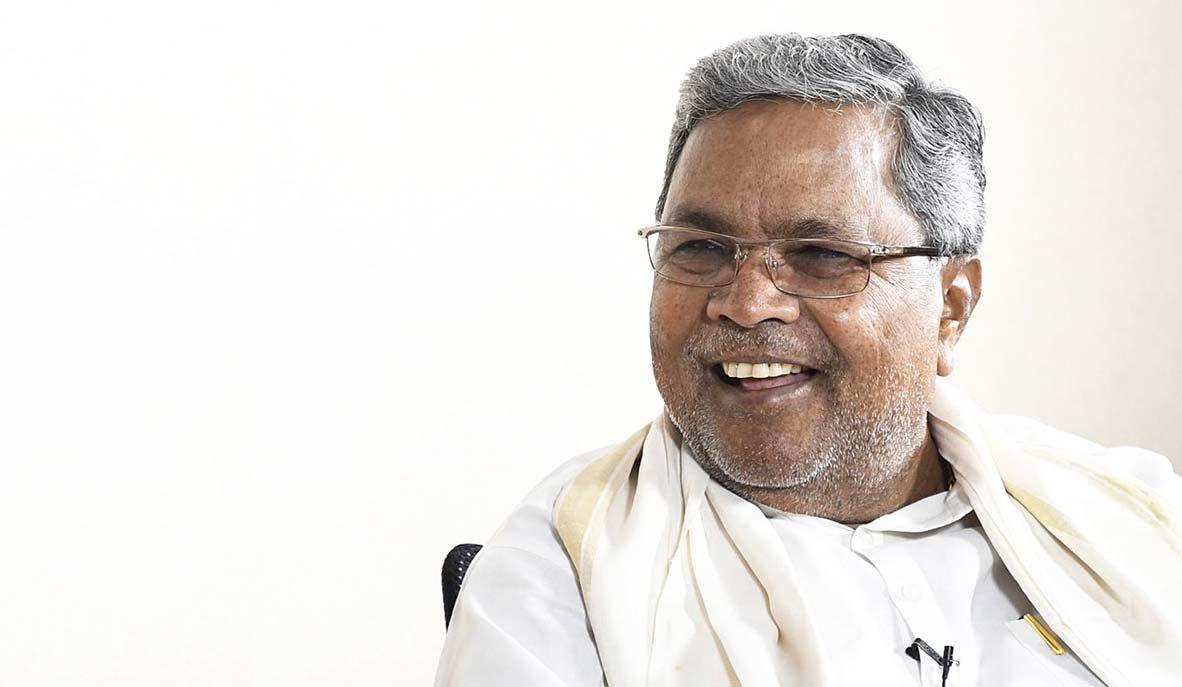


India Inc.’s Q1 FY26 scorecard is only mixed at best, but some companies stand out for facing down adversity. In this exclusive compilation, we dissect results from several such overcomers - from the surging profits of banks and industry mainstays to the resilient comebacks in..
A veritable avalanche of influencers, news headlines, and well-meaning friends and family offer conflicting advice on wellness. But quick fixes and fads may do little for our health, and some even prove harmful. Instead, try to work these healthy habits into your...
With courage, passion, and confidence, a person can achieve anything. IAS officer Varun Baranwal is a living example of this. Hailing from the small town of Boisar in Maharashtra, Baranwal once ran a puncture shop to earn a living for himself and his...
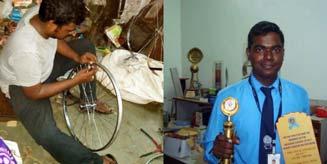
This science-backed approach will cure your procrastination with practical todos...


Google LLC’s DeepMind research unit today announced a major update to a couple of its artificial intelligence models, which are designed to make robots more intelligent. With the update, intelligent robots can now perform more complex, multistep tasks and even search the web for information to aid in their endeavors...

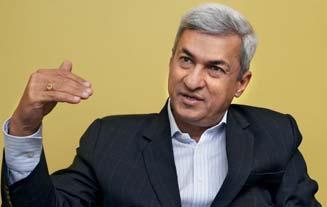
Amid a dynamic year for the Indian banking sector, Jana Small Finance Bank continues to embody a narrative of optimistic progress against significant headwinds, powered by its visionary leadership and a steadfast emphasis on inclusive growth. The Bengaluru headquartered bank, was not too long back the nation’s largest microfinance institution, but has now evolved into a leading player in the small banking space. Under the guidance of Founder & Director Ramesh Ramanathan, and MD & CEO Ajay Kanwal, Jana SFB’s current strategic intent is transformative, to become a universal bank...
With revenues around Rs 7,000 crore and profit around Rs 1,500 crore, Micro Labs is among the largest privately held Indian pharma firms. Under the visionary leadership of CMD Dilip Surana and Director Anand Surana, the Dolo-650 maker is extending this flagship brand to OTC wellness, even while taking over promising pharma firms overseas..
CHECKING
RATIOS BEFORE CHOOSING A MUTUAL FUND IS CRITICAL
Experts caution that this fees can have a significant impact on long-term returns, especially when compounded over decades...

50 GLORIOUS YEARS WITH A SPECIAL ‘MY STAMP’ ISSUED BY INDIA POST
Bengaluru: Puravankara Limited (NSE: PURVA | BSE: 532891), one of India’s most admired and trusted real estate developers, today commemorated its 50year milestone with the release of a customised ‘My Stamp’ by...

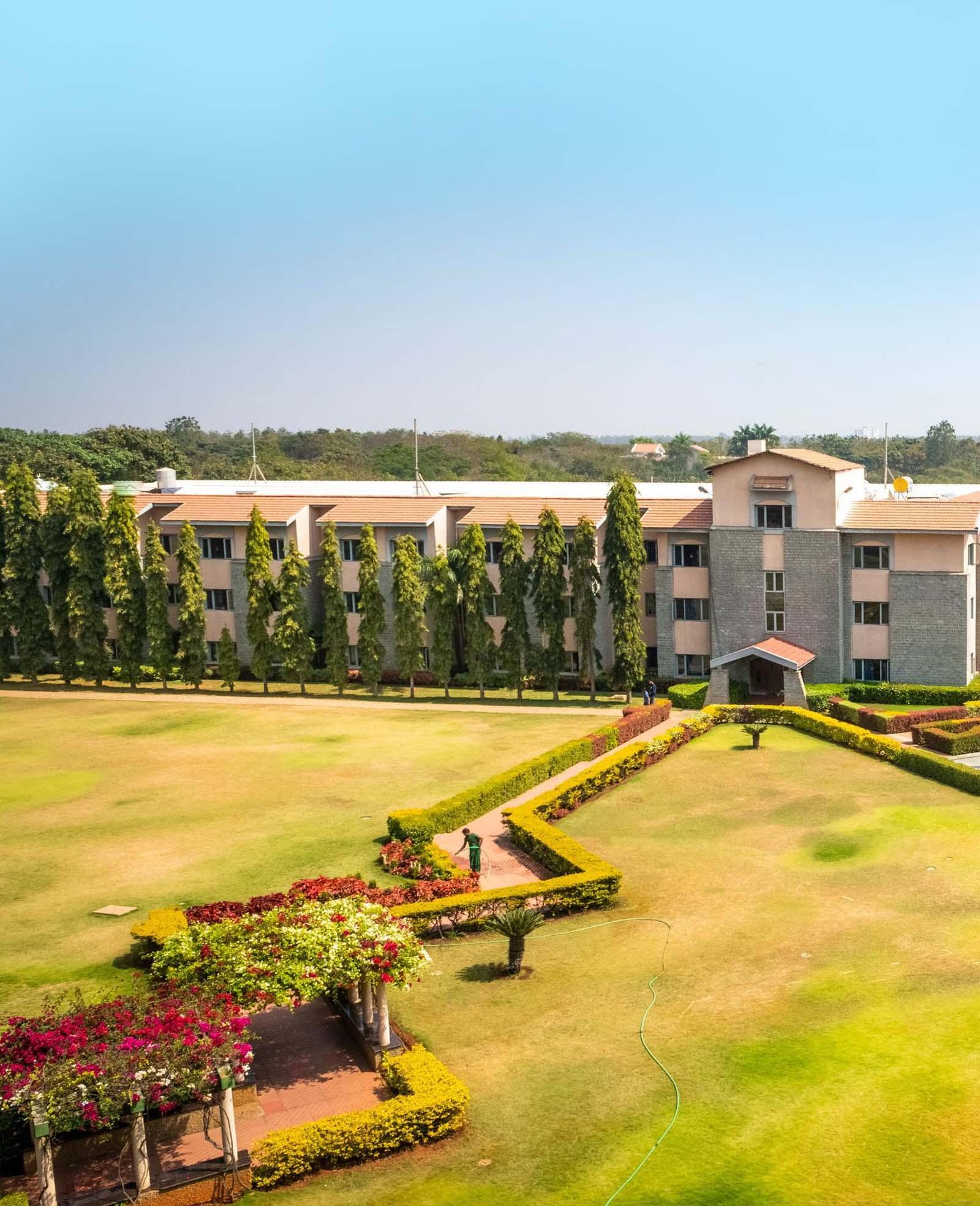
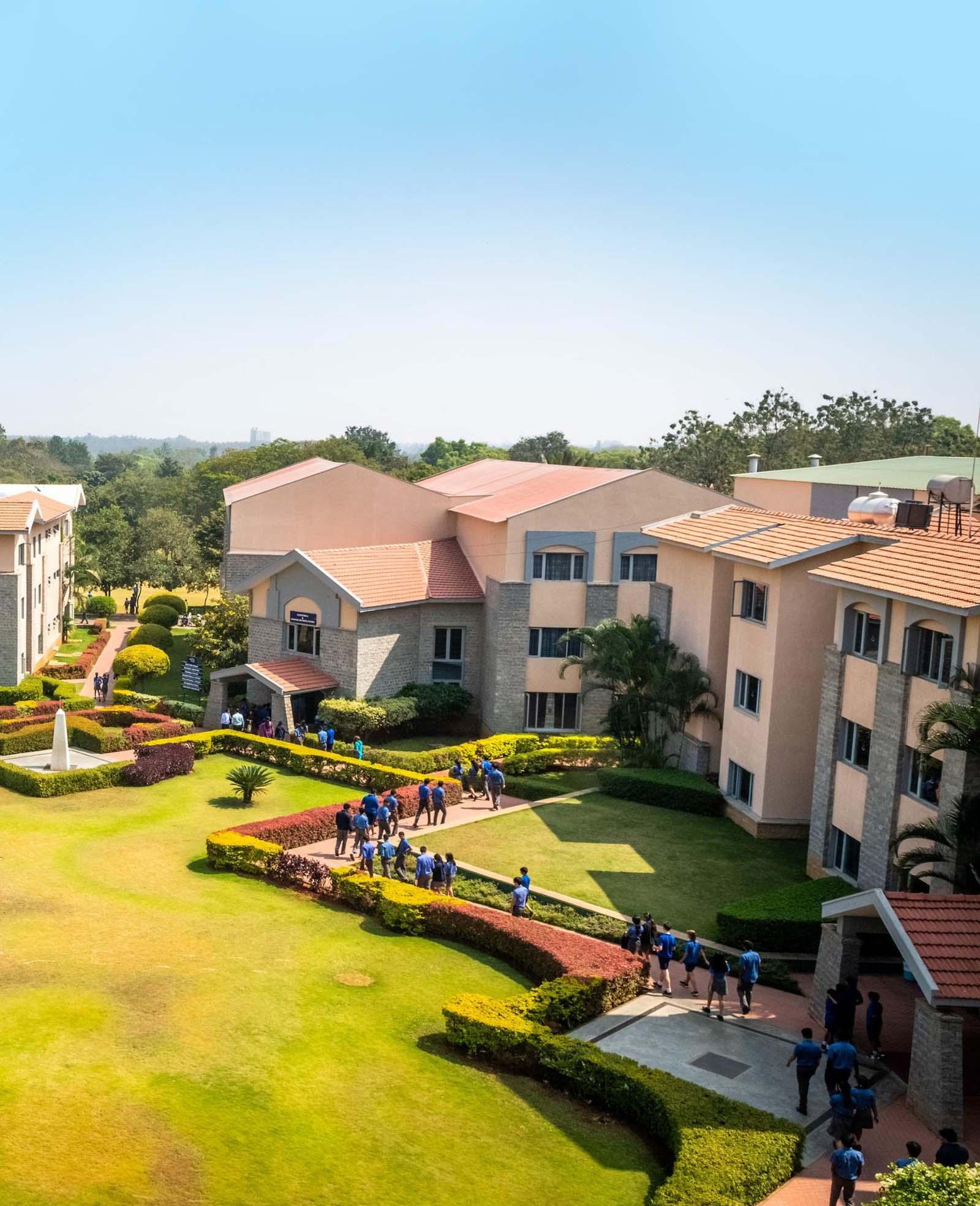
The International School Bangalore (TISB) has produced 32 toppers in IB Diploma (IBDP), who all won the perfect 45 score. TISB students have also attracted scholarships worth $27.4 million in the last 2 years, to MIT, Harvard, Stanford, Oxford, Cambridge, Yale, Wharton, Brown, John Hopkins & more. TISB is the brainchild of visionary educationalist Dr. KP Gopalkrishna, and is led by its dynamic Vice Chairperson & Director Dr. Bindu Hari and its inspiring Principal Mrs. Kate Reynolds.
At the heart of TISB’s success lies a culture that believes in nurturing curiosity as much as achievement. Every classroom, corridor, and conversation on this sprawling 140-acre campus in Bengaluru resonates with an academic vibrancy that goes far beyond textbooks and test scores. The International School Bangalore (TISB) has evolved into an educational ecosystem where rigor meets creativity, where structure meets exploration, and where students learn to think, lead, and serve the world with compassion and confidence.
Founded in 2000 by Dr. KP Gopalkrishna, TISB represents the culmination of a vision to provide Indian students an education on par with the world’s finest. Dr. Gopalkrishna, who also founded the National Public School (NPS) group, brought to TISB the same philosophy of disciplined excellence but reimagined it through an international lens. His goal was clear, to make Indian education globally competitive while preserving the cultural depth that defines it.
This vision was taken to new heights by his daughter, Dr. Bindu Hari, the Vice Chairperson and Director of TISB. A thought leader in global education, she has transformed the school into one of Asia’s leading IB campuses through her emphasis on holistic learning, emotional intelligence, and leadership development. Under her direction, TISB became synonymous not just with academic distinction but with an environment that celebrates innovation and individuality.
Principal Mrs. Kate Reynolds, who joined with a wealth of international experience, brings to TISB a deeply student-centered approach. Her leadership is marked by a balance of academic discipline and human warmth, a blend that has made the school a second home for students from over 40 nationalities. Together, Dr. Bindu Hari and Mrs. Reynolds form a leadership
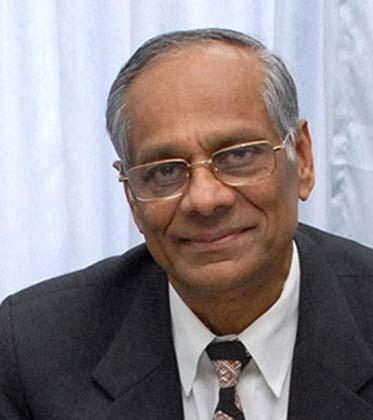
duo that has redefined what international schooling in India can be: world-class yet rooted, competitive yet compassionate.
TISB’s reputation as India’s most sought-after IB Diploma campus rests on its consistent record of excellence in the International Baccalaureate Diploma Programme (IBDP). The school’s 32 perfect scorers - each achieving the maximum 45 points - are ample proof to both intellectual depth and pedagogical mastery. Yet, what makes TISB’s IBDP truly exceptional is not merely the scores but the journey students undertake to reach them.
The IB philosophy aligns perfectly with TISB’s academic ethos. Inquiry, reflection, and global-mindedness are at the core of every subject. Teachers act as mentors and facilitators rather than mere instructors, guiding students to analyze, question, and apply knowledge in real-world contexts. Extended Essays, Theory of Knowledge sessions, and CAS (Creativity, Activity, Service) projects are not treated as requirements to fulfill, but as opportunities to grow, lead, and contribute.

The result is an academic experience that produces thinkers rather than rote learners. TISB graduates leave campus not

just with world-class university offers, but with the intellectual confidence to thrive in dynamic, competitive environments.
TISB’s sprawling campus, nestled amidst greenery in Bengaluru’s Whitefield area, offers far more than classrooms and laboratories. The school believes that true education happens everywhere: on the sports field, in the music room, during debate sessions, and even over shared meals in the dining hall.
Sports play a central role in student life, from cricket, football, tennis, swimming, athletics, and basketball. The school’s athletes regularly participate and win in inter-school and international tournaments, demonstrating the same pursuit of excellence that defines its academic achievements.
Equally vibrant is TISB’s performing arts scene. Theatre productions, orchestral performances, and art exhibitions are woven into the school calendar, helping students discover creative outlets that complement their intellectual pursuits. The TISB Model United Nations (TISBMUN), one of India’s most respected student-led conferences, brings together young diplomats from across the region, providing a forum for debate, diplomacy, and global citizenship.
Service learning too forms an integral pillar of student development. From rural literacy initiatives to environmental drives and fundraising for global causes, TISB’s CAS projects have earned admiration for their authenticity and impact. Here, service is not charity, rather it is citizenship in action. Students are encouraged to see themselves as changemakers,
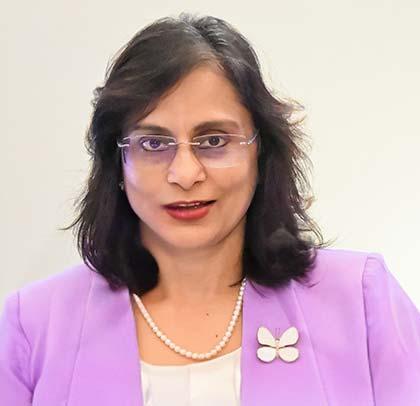
capable of shaping a fairer, more sustainable world.
What distinguishes TISB further is its track record in international university placements. Over the past two years, its students have earned scholarships worth $27.4 million, a reflection of both their academic calibre and the school’s robust college counselling system. Whether it is the Ivy League in the United States, the Russell Group in the United Kingdom, or leading institutions in Singapore, Canada, and Europe, TISB alumni have gained acceptance at some of the most prestigious universities worldwide.
Behind this success is a carefully structured College Counselling Department that begins working with students from Grade 10 onwards. Counselors collaborate closely with faculty, students, and parents to identify each learner’s unique strengths and aspirations. Workshops, mentoring sessions, and university fairs are held regularly, ensuring that students make informed choices that align with their long-term goals.
Moreover, TISB’s emphasis on research, leadership, and extracurricular depth makes its graduates stand out in global applicant pools. Global universities recognize the school’s ability to nurture well-rounded, resilient, and ethical individuals, which are traits increasingly valued in the 21st century.
TISB’s approach to technology is both forward-looking and grounded in purpose. Classrooms are equipped with state-of-the-art digital tools that promote interactive and collaborative learning. Coding, robotics, and AI-based projects are introduced from
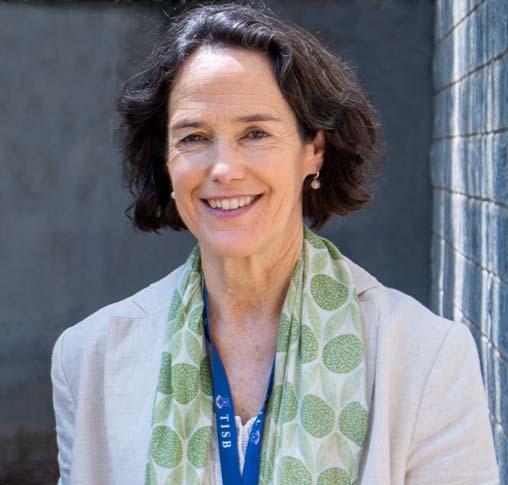

early grades, not as standalone subjects but as integral parts of problem-solving and creativity.
The Innovation Lab, one of the campus’s most dynamic spaces, serves as a hub for design thinking and experimentation. Students conceptualize prototypes, collaborate on STEM challenges, and participate in global innovation competitions. The school’s focus on sustainability has also led to several green initiatives, from energy-efficient infrastructure to student-led recycling programs, encouraging learners to balance progress with responsibility.
TISB’s integration of digital fluency with ethical awareness ensures that students grow up not as passive users of technology, but as innovators who understand its power to transform societies.
Every great institution is defined by its teachers, and TISB’s faculty stands as one of its greatest strengths. Drawn from across the globe, its educators bring a blend of international best practices and local cultural understanding. They undergo continuous professional development through IB training workshops, research collaborations, and internal mentoring systems that keep them at the forefront of educational excellence.
The teacher-student relationship at TISB is deeply personalized. With small class sizes and an open-door policy, faculty members often double as mentors, academic advisors, and life coaches. This close interaction builds a culture of mutual respect and lifelong learning, which are qualities that extend far beyond the classroom.
For many students, TISB is not just a school, it’s a second home. The boarding houses, designed to international standards, offer a warm and secure environment where students from diverse backgrounds live, learn, and grow together. The pastoral care system ensures that every student feels supported emotionally and socially.
The sense of community fostered within the boarding program is among TISB’s most cherished aspects. From cultural nights and inter-house competitions to weekend excursions and reflection sessions, the experience shapes independence, empathy, and adaptability. It is here that friendships are forged and leadership is learned in its most organic form.
Even as it ranks among the world’s most respected international schools, TISB has never lost sight of its Indian roots. The school celebrates national festivals with as much fervor as international ones, blending global
exposure with cultural pride. The values of respect, humility, and service are not taught through lectures but lived through daily practice.
This balance between globalism and groundedness has become the school’s defining identity. Students learn to be cosmopolitan without losing connection to their heritage, which is an increasingly rare and precious trait in today’s interconnected yet divided world.
TISB also thrives on strong community engagement. Parents are viewed as partners in the educational process, regularly engaging in dialogue with teachers and administrators. The school’s alumni network, now spanning continents, remains deeply connected through mentorship programs, talks, and networking events.
Many alumni return to campus as guest speakers, guiding current students on university life and career choices. Their achievements, in fields ranging from finance and technology to the arts and social entrepreneurship, stand as living proof of the school’s lasting impact.
What ultimately makes TISB the most coveted IB campus in India is not just its rankings, results, or reputation. It is the spirit that binds everyone within its gates, the quiet confidence of its students, the dedication of its
faculty, and the vision of its leaders. It is a spirit defined by balance: excellence with empathy, ambition with integrity, and intellect with imagination.
As education worldwide undergoes seismic shifts, TISB continues to evolve without losing its essence. Its leaders remain committed to nurturing not just scholars but responsible citizens, individuals who will shape the future with intelligence and compassion.
Looking forward, TISB’s ambitions remain as inspiring as its legacy. The school continues to invest in researchbased learning, digital innovation, and global partnerships. Plans for expanded STEM facilities, deeper sustainability programs, and enhanced leadership curricula are already underway.
Yet, amid all growth and innovation, one truth remains constant: TISB’s commitment to transforming lives through education. In a world that often confuses achievement with meaning, TISB stands apart as a beacon that reminds us that true education is not about winning the race, it’s about learning how to run it with purpose, which is a lesson directly from the vision and leadership of its Founder Dr. KP Gopalkrishna.
As the sun sets over its serene campus each day, one can sense the quiet hum of learning that never stops, a hum that echoes through time, shaping generations of thinkers, dreamers, and doers. And that, perhaps, is why The International School Bangalore continues to be the most coveted IB Diploma campus in India.

WHEN SIDDARAMAIAH RETURNED TO THE CHIEF MINISTER’S CHAIR IN MAY 2023, HE DID SO WITH AN AGENDA SO VERY CHARACTERISTIC OF HIM, LIKE HIS COMMITMENT TO WELFARE-LED GOVERNANCE, A TONGUE SHARPENED BY DECADES OF STATE POLITICS, AND A PROMISE TO RESTORE WHAT HIS PARTY DESCRIBED AS SOCIAL JUSTICE AT SCALE. TWO YEARS INTO THIS TENURE, THE GOVERNMENT’S NARRATIVE HAS BEEN SHAPED BY A FLURRY OF HIGH-VISIBILITY WELFARE MEASURES, TARGETED INVESTMENTS, AND AN INSISTENCE ON DELIVERING BENEFITS DIRECTLY TO CITIZENS, WHICH ARE MOVES THAT HAVE ALREADY RESHAPED EVERYDAY LIFE FOR LARGE SECTIONS OF KARNATAKA’S POPULATION. FROM FREE BUS RIDES FOR WOMEN TO EXPANDED CREDIT AND RELIEF FOR FARMERS, THE ADMINISTRATION HAS SOUGHT TO DEMONSTRATE THAT GOVERNANCE CAN BE BOTH REDISTRIBUTIVE AND ADMINISTRATIVELY BOLD.
nder the dynamic leadership of CM Siddaramaiah, the 28th edition of the Bengaluru Tech Summit (BTS) is poised to set a new benchmark in tech-conferencing. Slated for 18-20 November 2025 at the Bangalore International Exhibition Centre (BIEC) on Tumkur Road, Bengaluru, the event is spearheaded by the Department of Electronics, Information Technology & Biotechnology, Government of Karnataka in collaboration with key industry bodies.
Innovation & Technology Society (KITS / K-TECH), Software Technology Parks of India (STPI), and the Vision Groups for IT & Electronics, Biotech & Start-ups. Corporate sponsors bolster the summit with noted names such as Infosys and Biocon supporting the event. This year’s theme ‘Futurise’ will bring together start-ups, investors and global tech leaders for three days of exhibition, networking and cuttingedge dialogue.
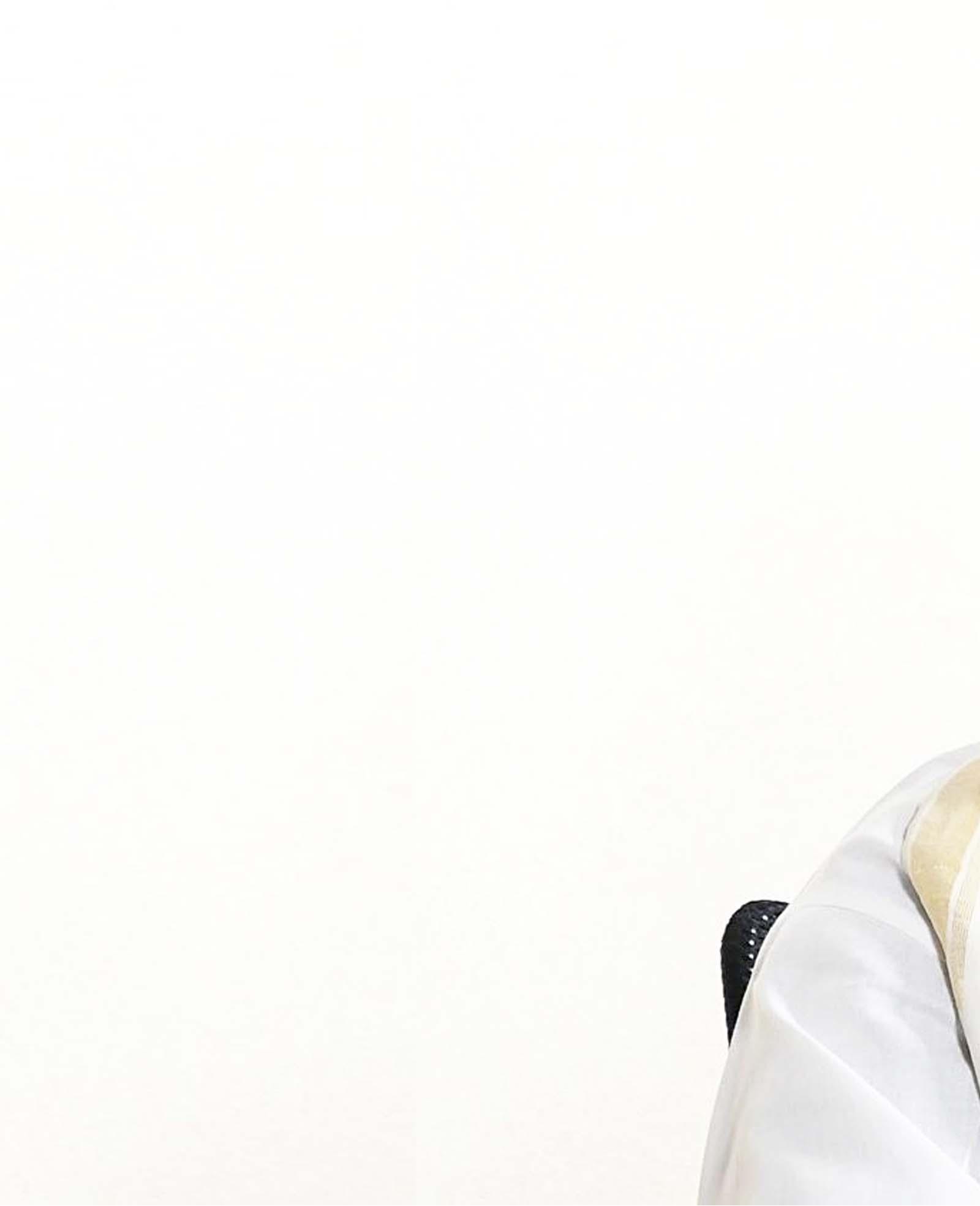
Organisers include Karnataka
Perhaps no scheme symbolises Chief Minister Siddaramaiah’s approach more clearly than the state’s free-bus
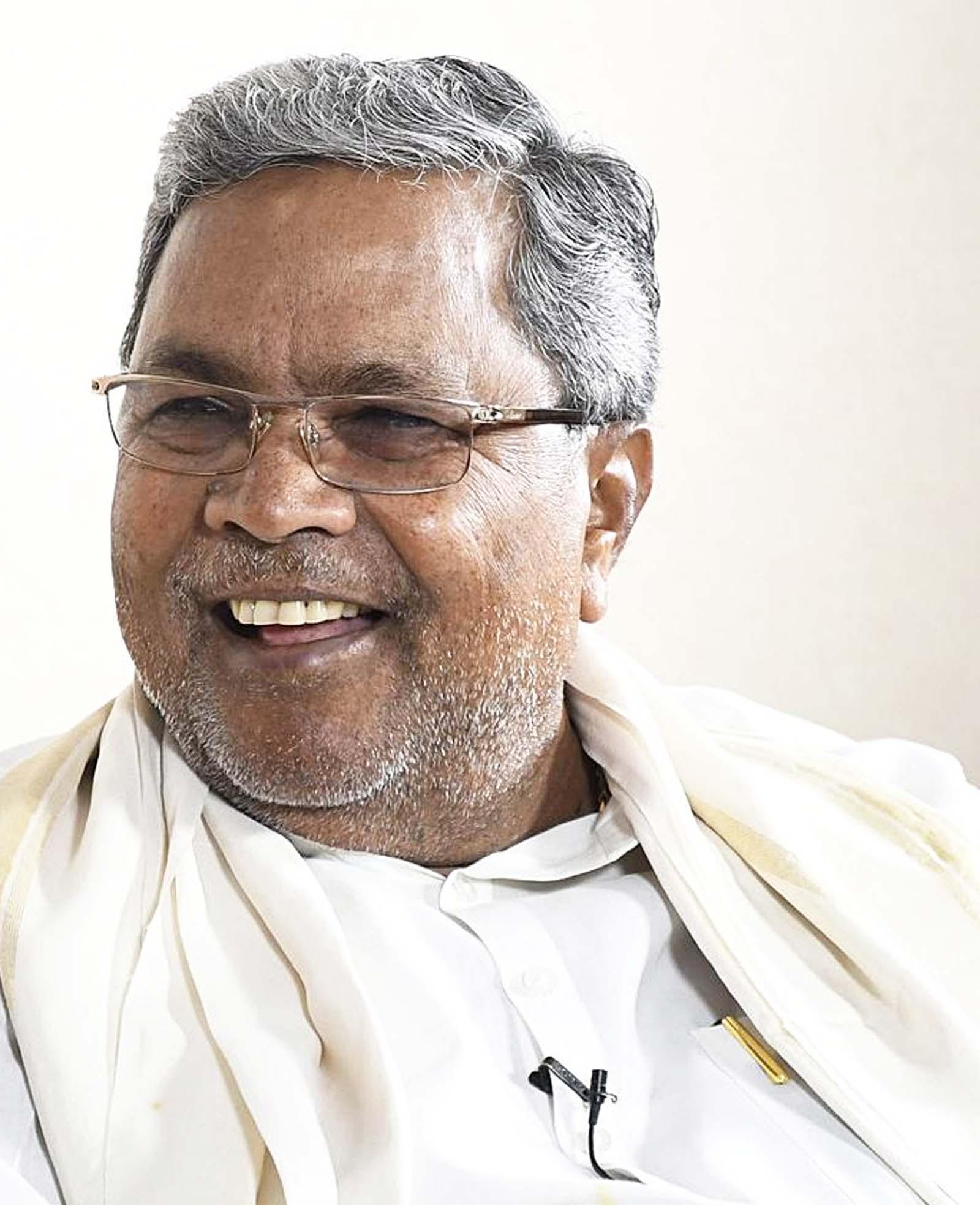
programme for women, widely known as Shakti. Launched early in the term, the policy removes fares for women travelling on nonpremium government buses across the state, and its uptake has been massive: millions of rides later, the programme has drawn national and even international attention as an unprecedented transit subsidy targeted by gender.
The scheme has become a daily reality for women who once budgeted travel carefully, and it has forced neighbouring states and transport planners to take note of the social and economic ripple effects of subsidized mobility. The Shakti initiative has even been cited recently as achieving recognition beyond India, a mark of how a single, well-administered public service can change routine life in visible ways.
Alongside visible schemes like Shakti, CM Siddaramaiah has advanced a cluster of guarantee programmes designed to deliver basic staples and services at scale. These include schemes that stabilise household budgets, like
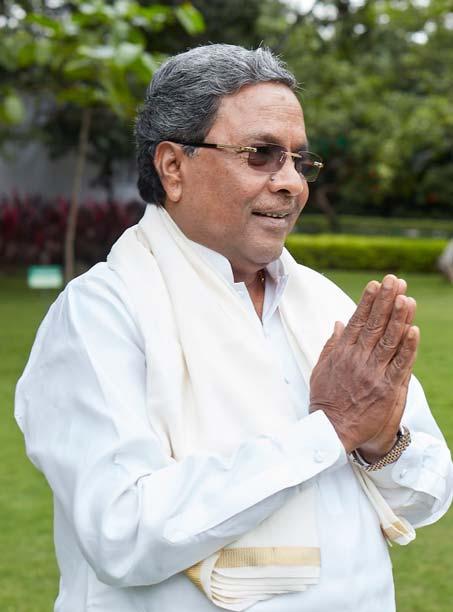
subsidised food allocations, electricity concessions for vulnerable households, and expanded direct benefit transfers for women, all of which are framed as parts of a broader safety net.
The state’s budgetary choices have reflected this orientation. Successive budgets under Siddaramaiah have included significant allocations for social spending, rural development and enhanced support for backward regions. These budget commitments are not mere political gimmicks; they have real fiscal consequences and reshape priorities across departments. The finance documents and budget speeches make it clear that the administration sees public spending as a primary lever to address inequality and regional imbalance.
Agriculture and rural credit have been central preoccupations for the government, because farmers are a vital constituency and because rural distress is a persistent political vulnerability. Under CM Siddaramaiah’s guidance, the state administration has taken multiple steps to ease farmers’ finances, which include increasing limits on interest-free and subsidised loans through cooperative channels, a promised relief on overdue interest in certain cooperative banks, and repeatedly
signalling readiness to consider loan waivers for small farmers.
These measures have been pitched as urgent responses to weather shocks, market volatility and the long tail of indebtedness that afflicts many farmers. Yet while the intent is to stabilise rural incomes, the execution and timeline for some of these promises have led to friction with farmer groups and critics who demand faster delivery and clearer eligibility criteria. So far, the government has balanced fiscal responsibility with political urgency, but going forward it will be a tricky act.
On the health front, more recent months have seen the state shift from broad promises to concrete action plans. The government approved an action plan titled ‘Mission Zero Preventable Maternal Deaths’, an initiative focused on reducing maternal mortality through upgrades to infrastructure, staff reorganisation at taluk hospitals and digital monitoring of childbirth. This intervention signals a maturing of the welfare agenda, in which after years of high-level declarations, departments are now beginning to sketch systemic fixes for measurable health outcomes, by strengthening supply chains, widening ICU capacity, and formalising referral systems so emergency obstetric care is closer to home for women in need. If implemented effectively, such a plan can change survival statistics long-term; however if it falters in execution, it will join a long list of wellintentioned policies that failed at the last mile.
Despite the big noise about failing infrastructure in Karnataka, especially Bengaluru, infrastructure and connectivity have not been neglected at all by the Siddaramaiah administration. The government has continued to invest aggressively in roads, irrigation and urban projects, often tying these to regional development priorities. Special grants for historically lagging regions - in an effort to rebalance growth within the statehave been highlighted as necessary corrective measures to uneven investment.
Where the administration has laid foundations or launched projects, the message has been about correcting
long-accumulated neglect and accelerating inclusive development. However, launching projects is the easier part; ensuring timely completion, controlling costs and ensuring minimal displacement is a sustained administrative test. In some districts of Karnataka, large allocations for projects have been publicly celebrated; while in others, derailed timetables and faulty contract management remain sources of delayed benefits.
Public sector institutions, too, have been a focus area for CM Siddaramaiah. The Karnataka State Road Transport Corporation, which operates the buses underpinning the Shakti scheme, has received attention not only for the social benefits it facilitates but also for efforts to professionalise operations and manage finances while handling a vastly greater ridership.
This ability to combine social policy with operational efficiency will be a template for how the state tries to scale other services too. Also, the government’s emphasis on empanelling private hospitals for emergency obstetric care suggests a pragmatic willingness to blend public and private capacity when public provisioning alone cannot meet demands quickly. These administrative adaptations hint at this government learning to convert political promises into workable delivery models.
Education and human capital have also featured in the administration’s agenda. While the state has flagged ambitions for school level reforms and higher education expansion, the debate over a new State Education Policy has been prolonged and remains a contested area. Clarity and consultation were slower than hoped, and cautious deliberation is necessary for a sound educational policy with generational consequences.
The longer timeline for education reform is a reminder that some challenges like curriculum revision, teacher training, and structural governance changes, demand patience and sustained focus beyond headline announcements. For a government that thrives on immediate welfare wins, education presents a different test for CM Siddaramaiah, as reforms here must be incremental, evidence-driven, and insulated from short electoral cycles.

No governance is complete without the underlying political momentum, and the Siddaramaiah government has been assertive in staking its identity in this regard. The Chief Minister has repeatedly highlighted themes of social justice, redistribution and affirmative action as more than campaign slogans, and as principles to guide ministerial priorities and contribute to the public good. Ceremonial events and public addresses have been used to underline continuity with his earlier reformist impulses and to signal direction to bureaucrats and voters alike.
Yet this political posturing has also invited pushback. Opposition parties and segments of civil society have accused the administration of prioritising populist headlines over structural reforms, and factional tensions within the ruling coalition have occasionally spilled into the open. Navigating intra-party dynamics and maintaining a steady administrative focus even while under political pressure remains a daily exercise in pragmatism for CM Siddaramaiah.
Perhaps the most salient measure of the government’s approach is its fiscal balancing act. The budgets tabled under Siddaramaiah have been bold in social outlay, but these come with trade-offs. Financing generous schemes without compromising debt sustainability is the perennial challenge of high welfare spending administrations like Siddaramaiah’s. The state’s decision to expand loan limits via cooperatives, waive certain bank interest burdens, and promise special grants to lagging regions
needs careful fiscal management, from broadening the tax base to cutting avoidable leakages.
An overreliance on borrowing or shortterm fiscal fixes could squeeze capital expenditure or require painful corrections later. So while citizens may welcome immediate relief, long-term prosperity will depend on whether the government can convert short-term consumption gains into sustainable growth and revenue mobilization.
Accountability and transparency have received a mixed report card under CM Siddaramaiah. On one hand, the administration has publicised many schemes and opened channels for grievance redressal; but on the other, independent assessments of outcomes are only beginning to appear. Welfare schemes produce lots of headline metrics, like numbers of beneficiaries or free rides availed, but fewer independent evaluations have so far tested whether these interventions sustain improvements in education, nutrition or incomes.
The maternal health plan is a hopeful exception because it sets measurable health targets; if monitored transparently, it could become a case study in evidence-led public healthcare policy. Otherwise, the state must guard against the temptation to confuse programme rollouts with its actual grassroots level impact. Third party impact assessments and audits will be essential to move from generosity to effectiveness.
Some of the human benefits of the government’s work so far have been concrete. For instance, women who save on commuting costs gain extra hours and disposable incomes; farmers spared interest burdens can replant or invest in farm inputs with less anxiety; families with subsidised staples feel a cushion against price shocks. These are the real, tangible benefits that underpin popular support. Yet these gains also come with new expectations, for delivery that is sustainably timely, for eligibility that is fair, and for entitlements that are not eroded by administrative bottlenecks. The government’s challenge is therefore two-fold, as it has to maintain the momentum of positive, visible wins, even while institutionalising processes so that those wins repeat or continue without constant political intervention. Still, several large challenges remain. Farm distress, despite policy gestures, continues to bite many households. Climate volatility and market failures require deeper structural reforms like better crop insurance, improved irrigation, stronger agricultural extension services etc, not just reactive or episodic financial relief. The state’s fiscal headroom can limit how comprehensively such reforms are rolled out, so innovations in public-private partnerships, market linkages, and value-chain
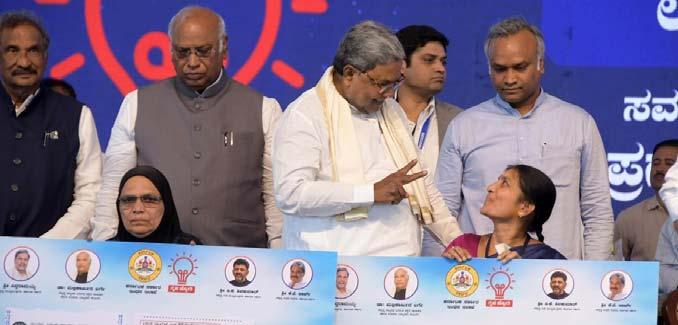
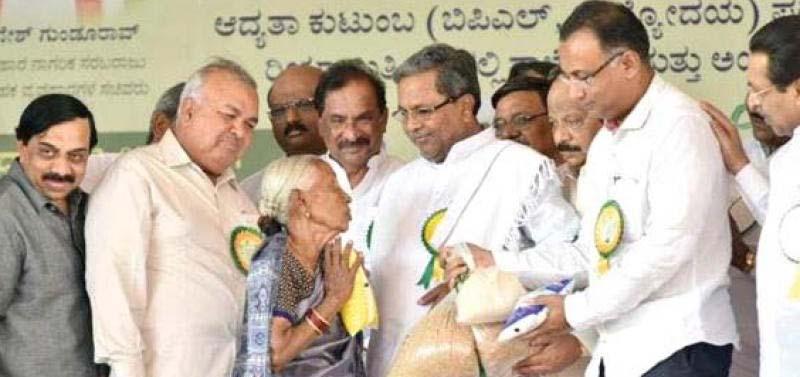
development must be accelerated. Similarly, education reform needs renewed impetus. Teacher recruitment and training, school infrastructure, and the quality of learning outcomes cannot be sidelined if the state wants to turn short-term welfare into long-term human capital gains. The government’s ability to design and fund large-scale reforms while retaining political popularity will be a defining feature of its legacy.
Governance challenges in a big state continue to be another persistent hurdle. Rolling out entitlements at scale exposes gaps in data, staffing and last-mile connectivity. Reorganising health staff so that each taluk hospital has the right specialist mix or ensuring KSRTC can handle an unprecedented surge in ridership demands not only policy but sustained managerial attention.
In some Karnataka districts, longstanding vacancies in public services have hampered delivery; even while the government has pledged to fill many posts. Recruitments, training and retention continue to be timeconsuming exercises without any major breakthrough. If the state can show concrete improvements here, the dividends will multiply. It will result in better-staffed hospitals, more responsive local governance and more effective schools that will compound the benefits of welfare schemes.
Fortunately and sometimes unfortunately, politics will also continue to shape outcomes. Electoral cycles exert pressure to produce visible, immediate results, and this can bias policy toward short-termism. The balancing act between urgent relief and patient reform is basically political in nature but also a technocratic challenge
that requires credible, non-partisan data collection; transparent fiscal accounting; and an open dialogue with civil society and experts.
The government’s willingness to involve private providers pragmatically, as in the maternal care empanelment, suggests that it understands the necessity of PPP or hybrid models. The next, harder step for Karnataka is to institutionalise these models so they survive political turnover and become part of a steady governance ecosystem.
Two years in, Siddaramaiah’s government has shown that a state can redefine the contours of public good by prioritising visible welfare and by nudging public institutions to deliver at scale. The social benefits have been unmistakable in many households, and the administration’s readiness to invest in welfare has won it applause. Yet the frictions remain, like fiscal constraints, implementation lags, pending structural reforms in education and agriculture, and the need for independent impact evaluations, reminding all that effective governance is less about single, headline-grabbing programmes than about building enduring systems.
If the Siddaramiah government’s recent trajectory offers lessons, the most important is that welfare focused redistribution must be accompanied by large scale institution-building. Making bus rides free for women is transformative, but ensuring that the transport corporation remains solvent and efficient is equally crucial. Promising loan relief helps distressed farmers, but modernising procurement, credit systems and market access will prevent chronic indebtedness.
Similarly, addressing maternal deaths through a dedicated action plan is laudable; but ensuring that the plan is executed across taluks and audited publicly will determine whether lives are actually saved. The next phase of governance will need to be as much about the complex execution as it is about the scale of ambition.
Siddaramaiah’s tenure to date reads as an assertive attempt to restore the social contract using the state’s fiscal and administrative instruments. There are all reasons to celebrate the accomplishments, particularly the policies that tangibly ease day-to-day burdens for women, farmers and lowincome households, while also urging caution about sustainability and depth. The coming months will be decisive for CM Siddaramaiah. They will test whether the government can convert short-term welfare gains into long-term structural transformation. Karnataka’s voters, meanwhile, will watch closely to see whether the promise of social justice translates into durable institutions that continue to serve every citizen, and not just in the glow of political announcements but in the quiet steadiness of a wellrun public system.
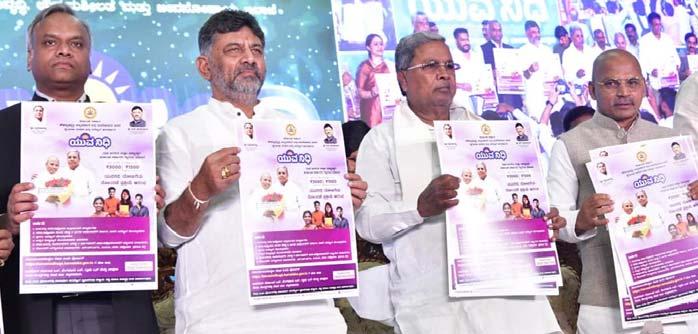
While obesity is a known risk factor for heart disease, a new study showed that the ratio of a person’s waist measurement compared to their height is more reliable than body mass index (BMI) at predicting the risk.
The finding, published in The Lancet Regional HealthAmericas, could reshape how clinicians and the public assess cardiovascular risk, especially for people who don’t meet the classic definition of obesity.
“Higher BMI, waist circumference, and waist-to-height ratio at baseline were all associated with higher risk of developing future cardiovascular disease - until we adjusted for other classic risk factors, such as age, sex, smoking, exercise, diabetes, hypertension, and cholesterol,” said lead author Thiago Bosco Mendes, from the University of Pittsburgh, US.
“When we did that, only waist-toheight ratio held as a predictor,” Mendes said.
“HIGHER BMI, WAIST CIRCUMFERENCE, AND WAIST-TOHEIGHT RATIO AT BASELINE WERE ALL ASSOCIATED WITH HIGHER RISK OF DEVELOPING FUTURE CARDIOVASCULAR DISEASE - UNTIL WE ADJUSTED FOR OTHER CLASSIC RISK FACTORS, SUCH AS AGE, SEX, SMOKING, EXERCISE, DIABETES, HYPERTENSION, AND CHOLESTEROL,”

Researchers analysed data from 2,721 adults who had no cardiovascular disease at baseline and were followed for more than five years.
Much of that predictive power is concentrated among individuals with a BMI under 30, which is below the classic threshold for obesity, who
may not realise they are at risk for cardiovascular disease.
BMI doesn’t account for fat distribution or distinguish between harmful, visceral fat and protective, subcutaneous fat.
By contrast, waist-to-height ratio (WHtR), calculated by dividing waist circumference by height, directly reflects central obesity, which is more closely linked to heart disease.
That means that people with a BMI lower than 30, but a WHtR over 0.5, may be at higher risk of future coronary artery calcification, a key marker of cardiovascular disease, even in the absence of other risk factors, the study showed.
“Using waist-to-height ratio as a cardiovascular screening tool could lead to earlier identification and intervention for at-risk patients who might otherwise be missed,” said senior author Marcio Bittencourt, Associate Professor of Medicine at Pitt.
“It’s a simple and powerful way to spot heart disease risk early, even if a patient’s weight, cholesterol, and blood pressure all seem normal,” Bittencourt added.
(Credit: IANS)
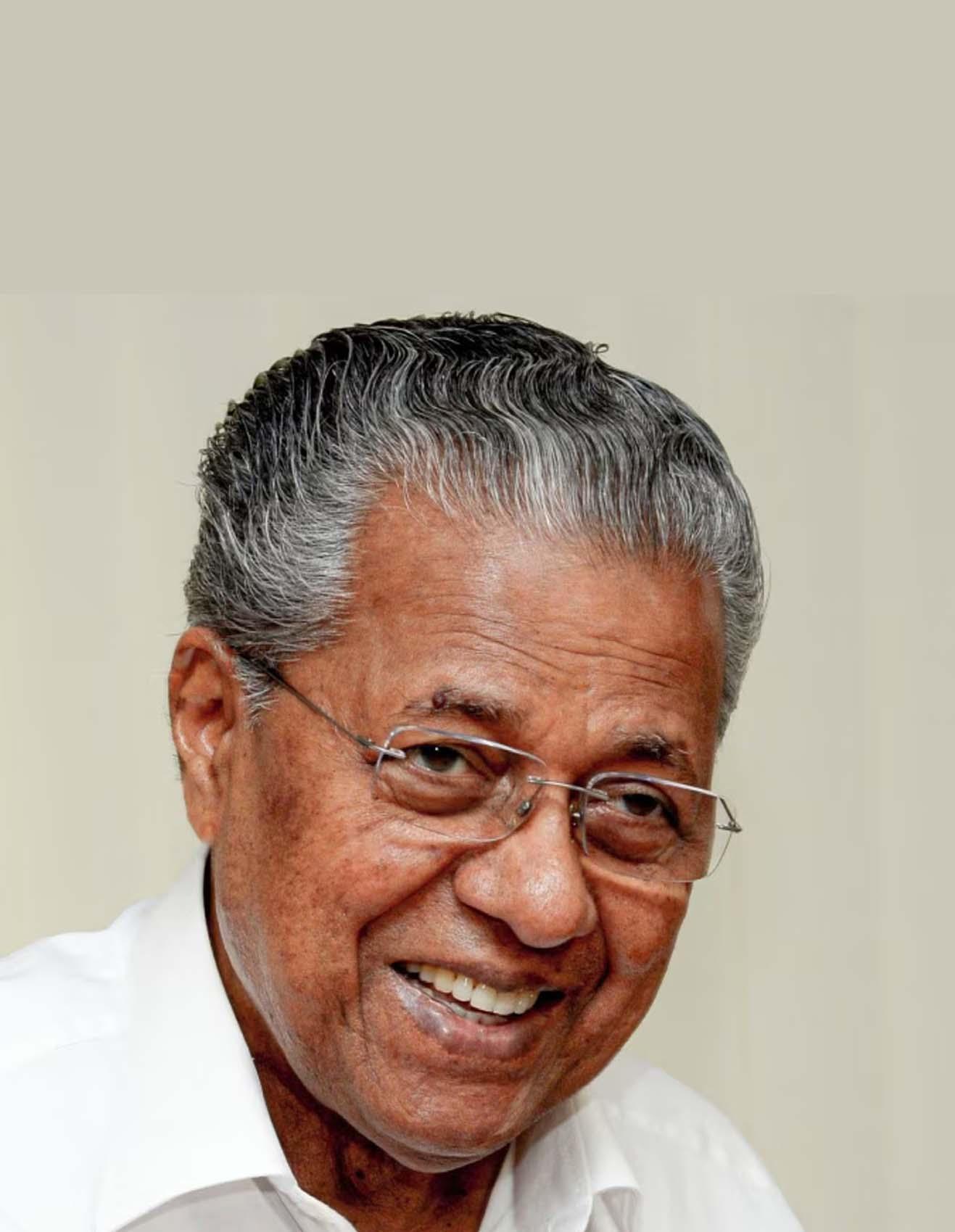
KERALA GOVERNMENT MOUNTS
MASSIVE CAMPAIGN TO WIN BACK PEOPLE’S CONFIDENCE
MASSIVE CAMPAIGN TO WIN BACK PEOPLE’S CONFIDENCE
With CAG continuing to flag KIIFB and KSSPL led projects that are building up a massive debt burden for the future, and hotly contested claims like extreme poverty eradication, Kerala Government is on a sticky wicket for now. But under CM Pinarayi Vijayan, the Government is not giving up without a fight, and has mounted a massive facts-based campaign.
With only 6 months left for the second term of Kerala’s LDF government led by Chief Minister Pinarayi Vijayan to end, the state finds itself facing a difficult scorecard - one where failures outweigh achievements at a rate that is painfully visible for all. While the government is still showing a strong face with the recent declaration of extreme poverty eradication, this claim has run into serious criticism with some of the traditionally leftwing social scientists themselves disputing the claim. Off-budget financing has emerged as one of Kerala’s most worrying fiscal trends, threatening the state’s long-term financial stability. Institutions like the Kerala Infrastructure Investment Fund Board (KIIFB) and Kerala Social Security Pension Ltd (KSSPL) were originally conceived to fund infrastructure and welfare projects without burdening the annual
budget. Despite the Kerala Government’s claims of massive investments through KIIFB - Rs 21,624 crore for roads and bridges, Rs 16,527 crore for industrial parks, and thousands of crores for health, power, and water projects - the ground reality tells a different story. Many road and bridge projects remain incomplete or poorly executed, with cost overruns and delays draining public funds. Industrial parks have struggled to attract serious investors, leaving expensive infrastructure underutilized. Health and Ayush initiatives have delivered little visible impact in primary care, even as hospitals battle shortages. NHAI land acquisitions have sparked disputes and compensation controversies, slowing national highway expansion, not to mention the most dramatic road collapse due to faulty land acquisition and construction. Water
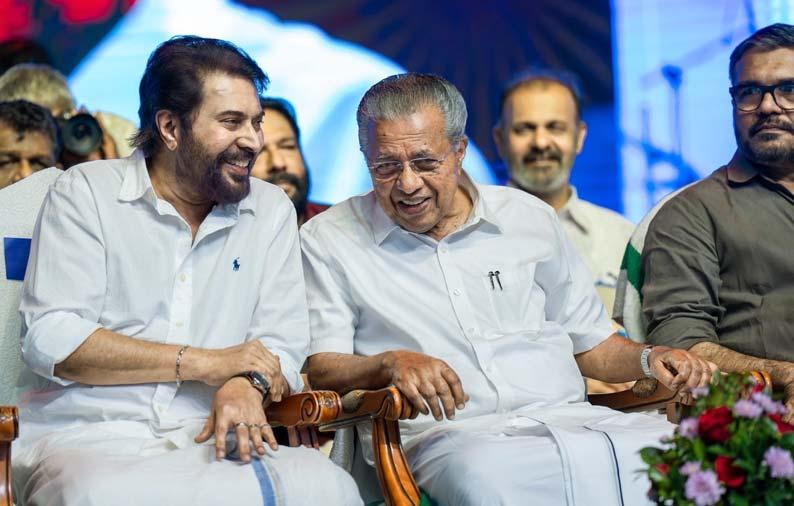
supply and power distribution projects, meanwhile, have failed to ensure consistent coverage or reduce outages. Together, these shortfalls expose how headline grabbing figures mask inefficiency, lack of accountability, and mounting debtraising concerns that KIIFB’s ambitious spending spree has yielded more paper progress than real, lasting development for Kerala. As flagged repeatedly by CAG, these off-budget borrowings have now grown into a hidden mountain of debt that bypasses traditional fiscal scrutiny. By pushing repayments and liabilities into the future, such mechanisms create an illusion of fiscal discipline today while mortgaging tomorrow’s revenues. The mounting debt obligations of KIIFB and KSSPL, often backed by state guarantees, risk eroding Kerala’s borrowing capacity and credit credibility. As interest and repayment costs accumulate, they will increasingly eat into funds meant for development and welfare. Without transparent accounting and restraint, Kerala’s next generation may inherit a financial structure already buckling under visible debts. But the Kerala Government is countering all of CAG’s allegations, point by point, in a new campaign. With CAG too conceding some improvements in their latest report, only time will tell who is telling the more complete truth. The administration’s early wins in peoplecentric governance, digital innovation, and welfare expansion now faces turbulence from controversies over nepotism, administrative opacity, and economic stagnation. For Kerala, the road ahead is clearly uneven, but not without the potential to reclaim its pioneering promise of inclusive progress, if it takes several sound steps to reclaim the confidence of Keralites.
When you skip sleep, your brain becomes desperate for maintenance.
n my last day at work a few years back, they gave me a going-away party, and it turned into something more like a roast. One of the top leaders told a story I’d sort of hoped he’d forgotten.
The context was when my wife and I were brand new parents and we were struggling through extreme sleep deprivation. After one especially rough night, I came into work for a key meeting.
Our boss told the story in a way that had everyone laughing: How I called our CEO by the wrong name three times. How I botched simple math and insisted I’d gotten it right. How I nearly fell asleep at the conference table.
The punchline: “Then Murphy said, ‘Sorry. I slept only 45 minutes last night and it turns out that’s not enough.’ And then he stood up and walked out the door.”
Maybe you’ve been there. Someone’s talking directly to you, maybe even asking you a question, and your mind just disappears.
Now, a new neuroscience study from MIT suggests a fascinating explanation. In short, when your attention vanishes after a sleepless night, your brain is literally flushing itself clean.
Writing in the journal Nature Neuroscience, MIT researchers found that during those frustrating moments when you can’t pay attention, waves of cerebrospinal fluid are washing through your brain - the exact same cleansing process that normally happens while you’re sound asleep.
The MIT team, led by Laura Lewis, an associate professor with a PhD in neuroscience, recruited 26 volunteers who were each tested twice: once after a full night of sleep, and once after staying up all night in the lab under constant supervision.
During both sessions, participants performed simple attention tasks

while researchers monitored their brain activity, heart rate, breathing, pupil size, and, crucially, the flow of cerebrospinal fluid in their brains.
The sleep-deprived participants performed significantly worse, missing more cues and responding more slowly. But the striking finding was what happened during those attention lapses.
At the exact moment when focus disappeared, cerebrospinal fluid (CSF) would surge out of the brain. Then, when attention returned, the fluid would flow back in.
“If you don’t sleep, the CSF waves start to intrude into wakefulness where normally you wouldn’t see
them,” Lewis said in a statement. “However, they come with an attentional tradeoff, where attention fails during the moments that you have this wave of fluid flow.”
Each attention lapse was also accompanied by a whole cascade of bodily changes: Pupils constricted (starting about 12 seconds before the fluid wave). Heart rate dropped.
Breathing slowed. Brain wave patterns shifted.
Then, after the lapse, everything reversed: pupils dilated, heart rate increased, and breathing sped back up.
“It suggests that there’s a tight coordination of these systems, where when your attention fails, you might

feel it perceptually and psychologically, but it’s also reflecting an event that’s happening throughout the brain and body,” Lewis explained.
So the overall mechanism is this: Your brain accumulates waste products throughout the day that need to be cleared out. Normally, this happens during sleep, when those rhythmic waves of cerebrospinal fluid (CSF) wash through, removing toxins and restoring balance. But when you skip sleep, your brain becomes so desperate for this maintenance that it starts forcing these cleaning cycles during waking hours - even though it means your attention has to shut down temporarily.
“One way to think about those events is because your brain is so in need of sleep, it tries its best to enter into a sleep-like state to restore some cognitive functions,” said Zinong Yang, an MIT visiting graduate student and the lead author of the paper.
We like to think we’re in controlthat willpower, caffeine, and determination can overcome a missed night of sleep. However, this research suggests otherwise. When your brain needs to clean itself, it’s going to find a way to do it, whether you’re ready for it or not.
Thus, attention lapses aren’t a sign of weakness or lack of focus. They’re your brain literally hijacking your consciousness to perform essential maintenance.
So, the next time you’re sitting in that meeting, struggling to concentrate after a rough night, at least you’ll know what’s actually happening: Your brain is taking matters into its own hands, doing the housekeeping you denied it the night before.
The only real solution? Get enough sleep.
(Credit: Bill Murphy Jr for Inc.)
PEOPLE ARE OBSESSED WITH DIETING AND BODY SIZE. THAT MAY BE DUE TO THE FACT THAT 40.3% OF ADULTS HAVE OBESITY TODAY, ACCORDING TO SOME ESTIMATES.
The weight loss industry likely contributes to these twin obsessions, as the global weight loss and diet management market size was worth about $143 billion in 2022, and is projected to soar to roughly $299 billion by 2030. And with more than 15 million Americans now losing weight with GLP-1 drugs that were originally created to treat type 2 diabetes, there is even more emphasis on weight.
Yet if the goal is improving your health and longevity, experts say your attention should be on fitness, not the numbers on the scale or the image you see in the mirror.
“We know so many ways to make people healthier other than weight loss,” said Dr. Lisa Erlanger, clinical professor of family medicine at the University of Washington in Seattle. Erlanger is also president of the Association for Weight and Size Inclusive Medicine. “Just increasing your steps or increasing your muscle strength, when done long-term, can reduce your chances of cancer, depression and diabetes, in addition to your risk of cardiovascular disease and all-cause mortality.”
Boosting your physical activity to improve your cardiorespiratory fitness and health - and not dieting - is

definitely the better option, according to one 2024 meta-analysis. That research found people typically can’t keep off the weight over the long term, so the improved health outcomes associated with weight reduction are lost.
Researchers can’t definitively explain why so many people are overweight today, too, so reducing your caloric intake may not even work. You can also make some positive dietary changes, such as upping your intake
of fruits and veggies, that will benefit your health even if the number on the scale doesn’t budge.
The current obesity epidemic began around 1980, according to Glenn Gaesser, a professor of exercise physiology at Arizona State University in Phoenix and coauthor of the 2024 meta-analysis mentioned above. Some research suggests our beefier bodies are due to larger portion sizes, too much sugar, too little activity and, more recently,
ultraprocessed foods. But it’s a lot more complex than that.
“Our environment has changed with regards to our exposure to chemicals, like plastics, pesticides and herbicides,” Gaesser said. “A lot of these ‘forever’ chemicals have an effect on our endocrine system that can affect our energy balance.” Human-made “forever” chemicals - called PFAS, or perfluoroalkyl and polyfluoroalkyl substances - don’t fully break down in the environment.
Viral infections may also be a factor, according to Gaesser. Human adenovirus 36, for example, has been associated with obesity in numerous studies. Adenoviruses are common and typically cause mild symptoms such as a fever, sore throat and pink eye (conjunctivitis).
“It’s a lot bigger picture than people would like to believe,” Gaesser said. “Obesity is not just the difference between energy in and energy out.”
Dieting is also largely unhelpful, Erlanger noted.
“One thing that raises body sizes without a doubt are attempts to lose weight,” Erlanger said.
Estimates vary, but it’s believed that more than 80% of people who lose a substantial amount of weight regain it within five years.
That’s because bodies have a generally set weight range and shape, based on factors such as genes and ethnicity, both Erlanger and Gaesser noted. Humans are also biologically programmed to survive periods of starvation and stress, Erlanger said. When you eat less than your body needs to maintain its weight and various functions, your metabolism decreases to ward off starvation. Your

brain becomes more anxious, too, so you sleep less soundly and begin to crave more caloric foods.
“All of the things we blame fat people for - being lazy, preferring junk food - that is what their body is telling
BOOSTING YOUR PHYSICAL ACTIVITY TO IMPROVE YOUR CARDIORESPIRATORY FITNESS AND HEALTH - AND NOT DIETING - IS DEFINITELY THE BETTER OPTION, ACCORDING TO ONE 2024 META-ANALYSIS. THAT RESEARCH FOUND PEOPLE TYPICALLY CAN’T KEEP OFF THE WEIGHT OVER THE LONG TERM, SO THE IMPROVED HEALTH OUTCOMES ASSOCIATED WITH WEIGHT REDUCTION ARE LOST.
them to do,” Erlanger said. “They’re not falling off the wagon. Their body is just trying to survive.”
Thanks to the emphasis on thinness in society, people who lose weight and then gain it back will often try another diet, and then another, continuously adding and shedding pounds. But such weight cycling - sometimes referred to as yo-yo dieting - is devastating, Erlanger said, both psychologically and physiologically.
Numerous studies link weight cycling with dozens of adverse health outcomes, including cardiovascular disease, vascular dysfunction, bone fractures, diabetes and an increased risk of certain cancers, according to Gaesser.
To best care for your body, concentrate more on motion rather than the contents of your dinner plate. Go for a bike ride or hike. Dance. Garden. Always first consult with your physician and stop immediately if you experience pain.
“The research is definitive - if you want to improve your health you shouldn’t diet, you should go for a walk,” Erlanger said. “But more people want to be smaller, not healthier.”
Yet your health always should be your main concern. So before latching onto the latest diet fad, take a deep breath and head outside instead. Your body, and mind, will thank you.
“Exercise is phenomenally effective in improving your health,” Gaesser said. “Every cell in your body is positively affected by exercise. You can be fit and healthy, even if your weight is not considered optimal.”
(Credit: Melanie Radzicki McManus for CNN)
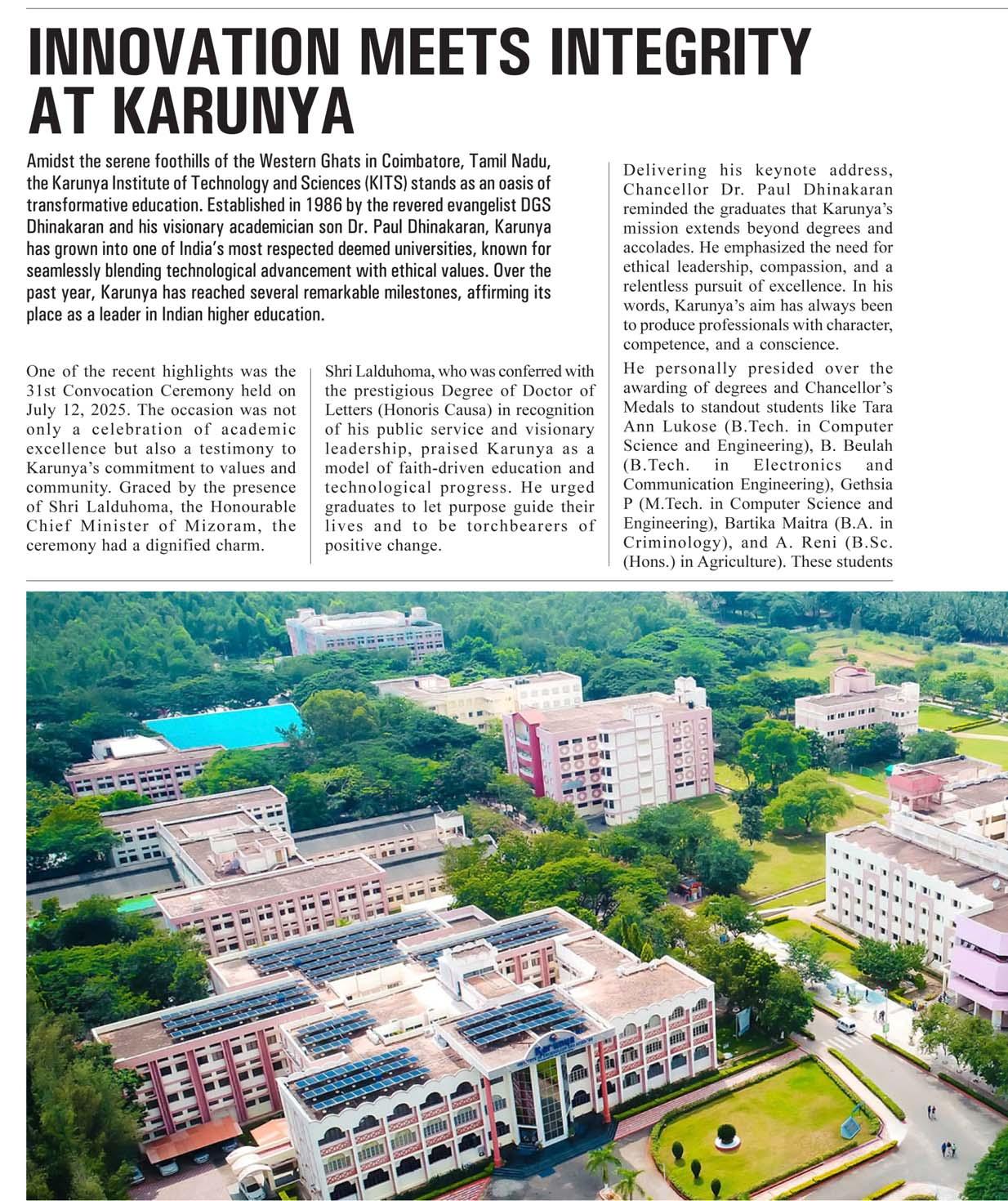
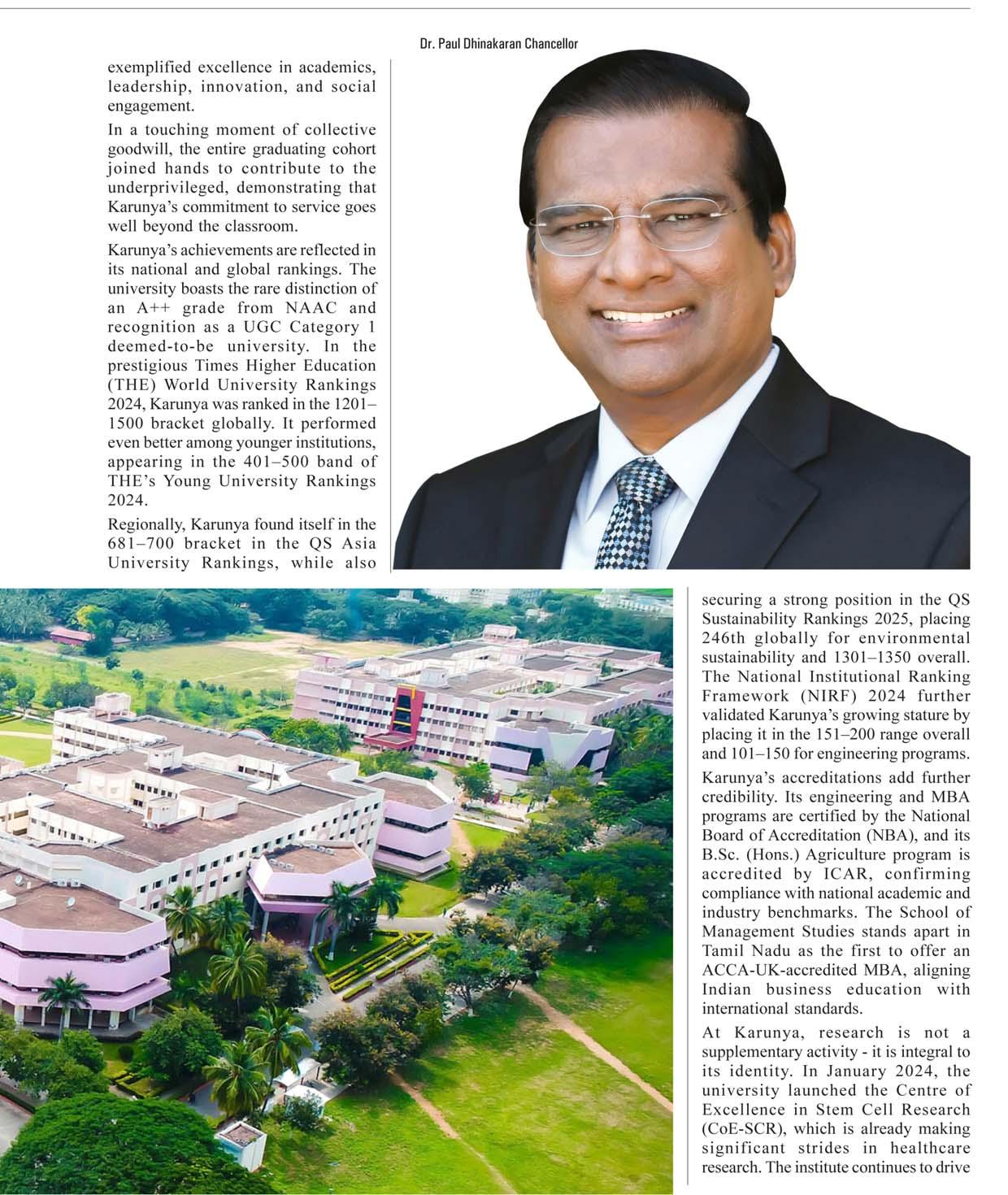

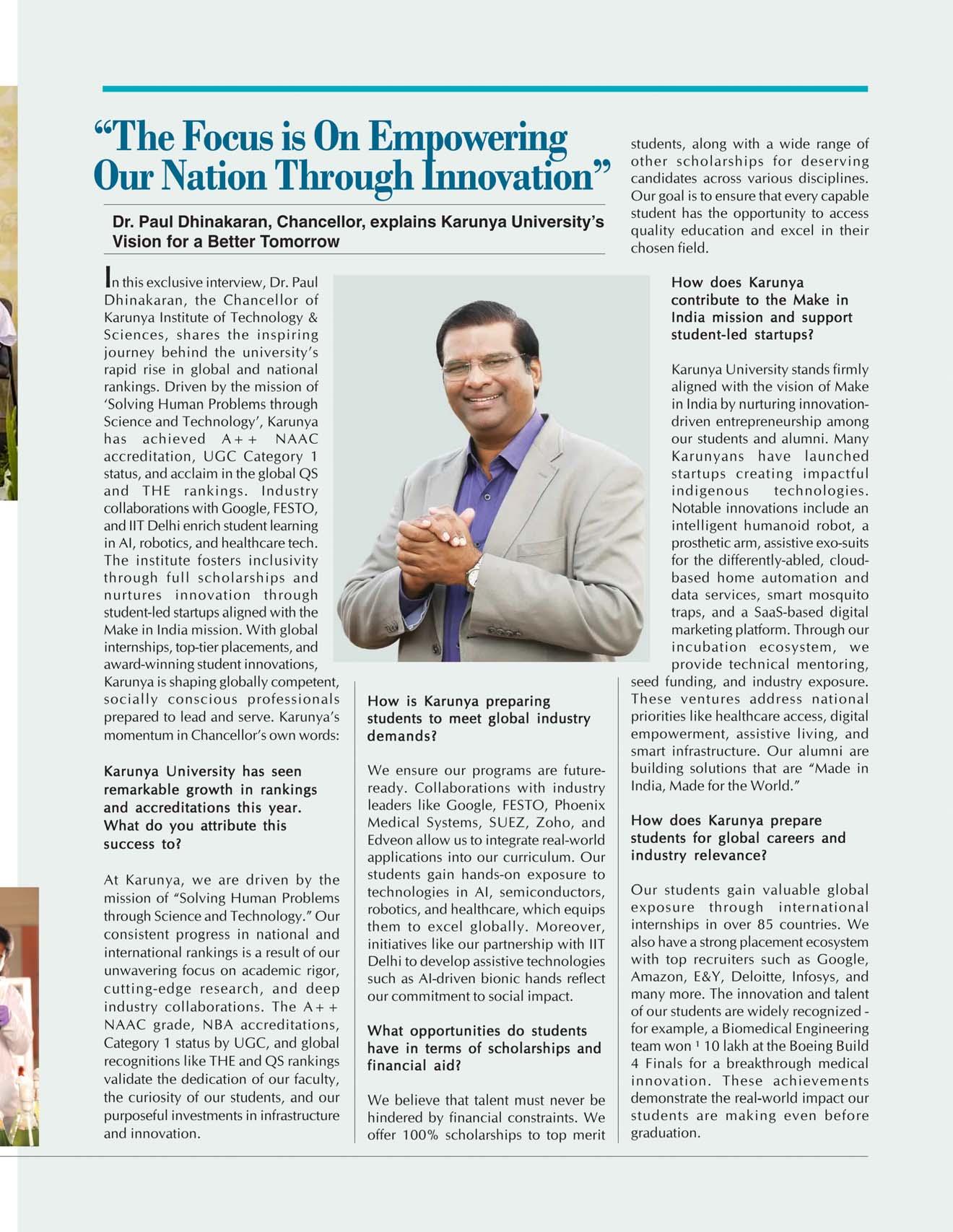
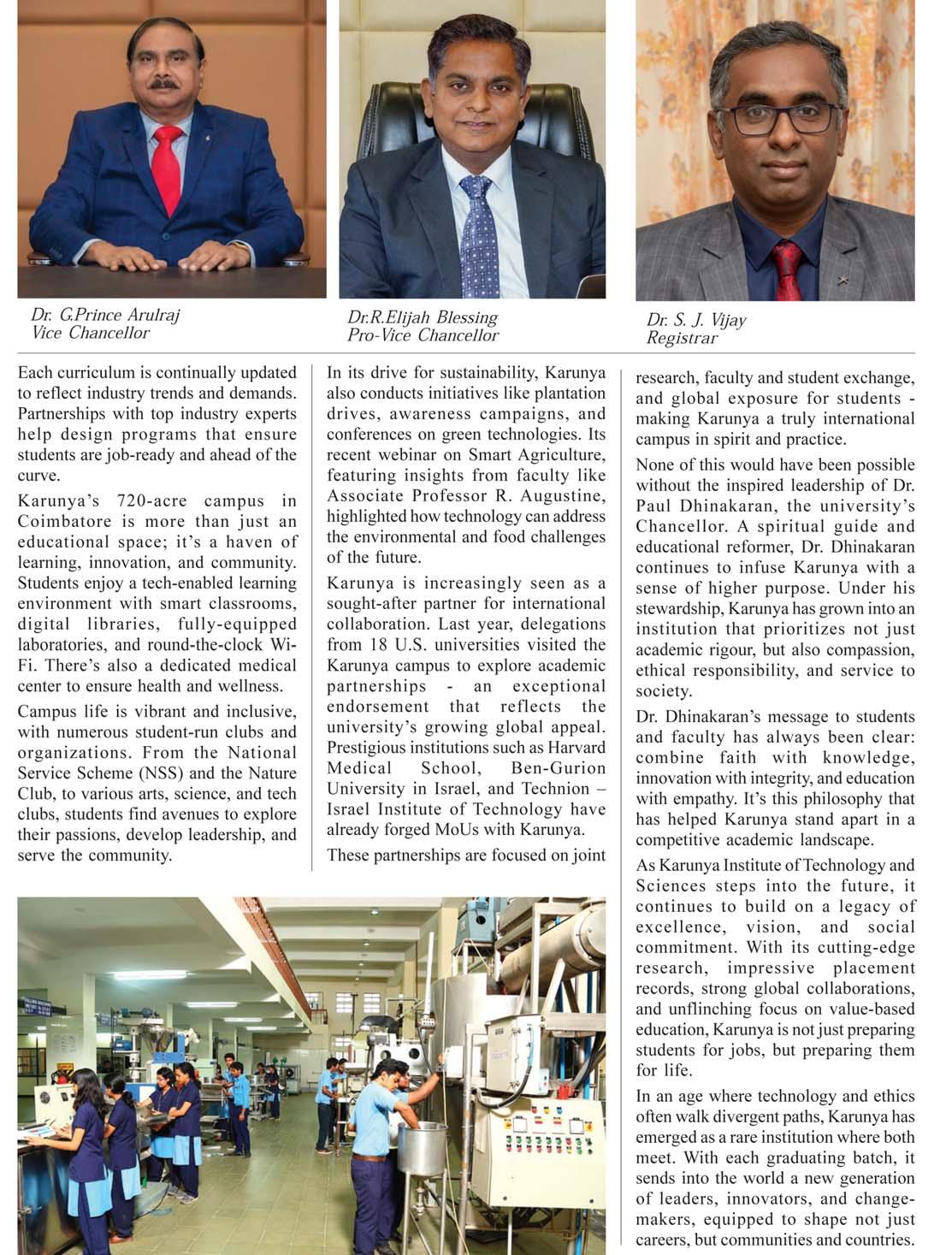
WHETHER YOU’RE SLEEPING, SCROLLING, OR STARING INTO SPACE, IT CAN BE TOUGH TO SWITCH GEARS AND ACTUALLY BE PRODUCTIVE. THE THOUGHT OF GETTING STARTED IS EXCRUCIATING, ESPECIALLY WHEN YOU HAVE A LENGTHY TO-DO LIST THAT SEEMS INSURMOUNTABLE.
hen you’re feeling stuck and unmotivated - or just extra comfy - the “five minute rule” is a big help. Instead of feeling like you have to do it all or worrying about how you’ll get everything done, tell yourself that you’ll get up and work for five short minutes. That’s it.
According to Dr. Jenny Shields, a licensed psychologist based in Texas, this hack is perfect for those “I can’t even open my laptop” moments where you feel frozen and overwhelmed. The hope is that once you get over the initial mental hurdle of beginning a task, you’ll get on a roll, feel more productive, and sail to the finish line.
The trick stems from other time-boxing strategies like the Pomodoro Technique, which is all about working in 25-minute sprints, followed by quick breaks so you feel focused, versus overwhelmed. “The five-minute rule applies that same behavioral science to the moment that many struggle with the most: getting started,” she tells. Here’s what to know.
The five minute rule can apply to pretty much any task you’ve been dreading or putting off. Think unpacking a suitcase, cleaning the kitchen, studying, tackling a work project, or even going for a walk. If you’re struggling to start, tell yourself that you’ll just do it for five minutesnothing more, nothing less.
As soon as the five minutes are up, you’re allowed to stop. But with this hack, you might just find it easy to keep going after you’ve already begun. According to Shields, that’s because the five minute hack removes the mental block that keeps
you stuck on the couch. “When something feels overwhelming, your nervous system flags it as a threat, which is why you end up scrolling instead of starting,” she says. “Shrinking a task to five minutes tells your brain, ‘Oh, that’s doable.’” Just like that, you’re typing an email or unloading the dishwasher.
“Once you start, your brain releases dopamine and norepinephrine - the same chemical that fuels focus and drive,” Shields says. “That small burst of activation helps you move from avoidance to momentum, which is why the first five minutes can so often become 50 without forcing it.”
This hack is perfect if you’re tired or burnt out, a long-time procrastinator or perfectionist who struggles to get startedand it also comes in handy when you’re just being lazy. According to Shields, it’s a

helpful technique if you have ADHD, too, which can make it tough to switch gears.
The next time you’re scrolling when you should be productive, take a deep breath, put down your phone, and see how it feels to work for five minutes. If you’ve been meaning to check emails, crack open your laptop. If you really need to clean your living room, fold a few blankets and bring coffee mugs to the sink.
Tell yourself you’ll only work for five minutes, and give yourself permission to stop once those five minutes are up. That way, the hack will actually be effective. As Shields says, “The trick only works if your brain believes the deal.”
If you want, you can even set a timer for five minutes - and chances are you’ll be surprised when the time flies by. “Remember, action precedes motivation,” she says. “It’s the movement that creates momentum.”
The five-minute rule works because it gives your brain a safe way to begin,” she says. “It’s like dipping a toe into a cold pool - once you’re in, it’s rarely as bad as you imagined.” That said, if you still feel tired after the five minutes are up, she recommends taking a quick break if you can.
For extra inspo, pair your start with something nice, like a fave playlist, a fresh cup of coffee, or a quick stretch. According to Shields, it’ll help your brain start to associate your to-do list with ease and efficiency, rather than effort and anxiety.
(Credit: Dr. Jenny Shields, Psychologist, and Carolyn Steber, Writer, for Bustle)
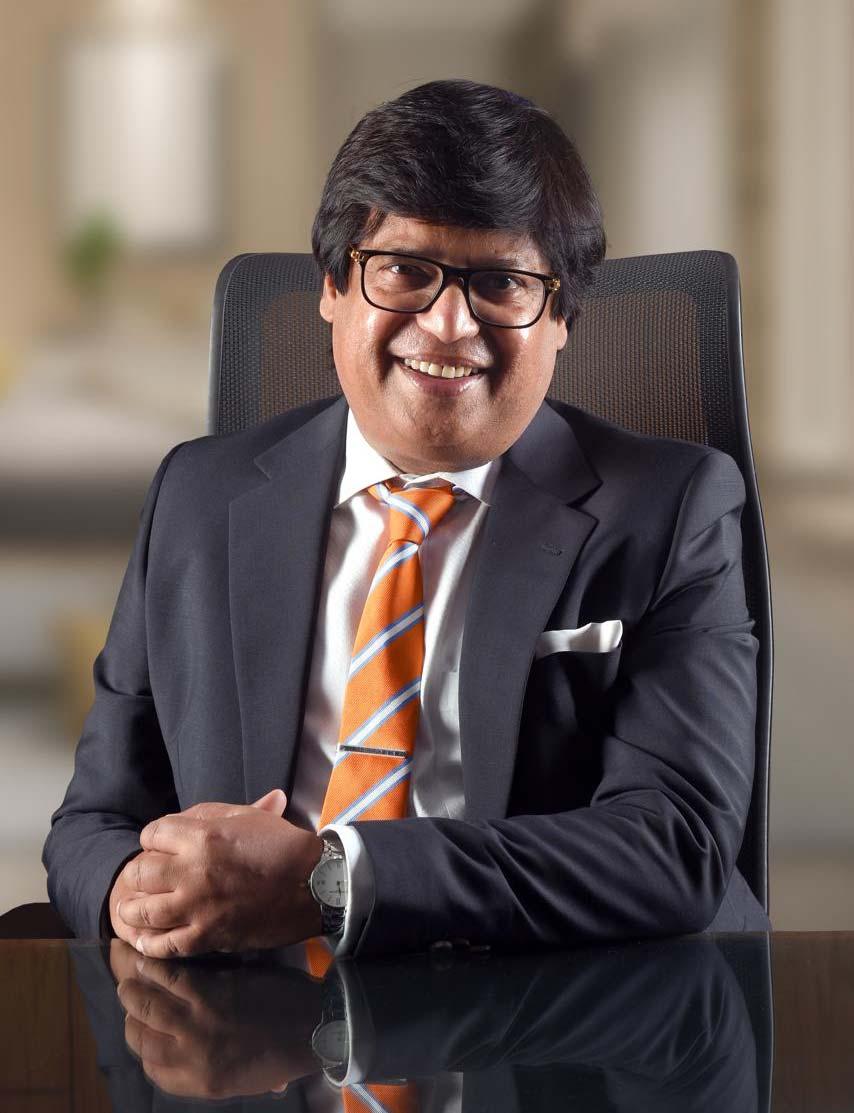
INDIA’S LARGEST IRON ORE MINER, NMDC LTD, HAS BEEN SCRIPTING ONE OF THE MOST COMPELLING TURNAROUND STORIES IN INDIA’S PUBLIC SECTOR DOMAIN. UNDER THE ASTUTE LEADERSHIP OF CHAIRMAN AND MANAGING DIRECTOR AMITAVA MUKHERJEE, THE HYDERABADBASED MINER HAS NOT ONLY FORTIFIED ITS FUNDAMENTALS BUT ALSO REPOSITIONED ITSELF ON THE GLOBAL MAP WITH AMBITIOUS EXPANSION PLANS, AN INTERNATIONAL OFFICE IN DUBAI, SUSTAINABILITY AWARDS, AND THE POTENTIAL REVIVAL OF ITS KEY STEEL SUBSIDIARY.
In Q1 FY26, NMDC registered a recordbreaking 31% jump in iron ore production, touching 11.99 million tonnes (MT), compared to 9.19 MT in the same quarter of the previous year. Sales also saw a 14% increase to 11.51 MT, marking one of the best quarters in the company’s history. June 2025 alone recorded NMDC’s highestever monthly production since inception, with 3.57 MT output and 3.58 MT in sales.
CMD Amitava Mukherjee credited this performance to “resilience, innovation, and a balanced strategy,” adding that NMDC is steadily moving toward its vision of leading India’s mining and steel sectors. These results are particularly significant given the industry’s cyclical nature and underline the company’s operational efficiency and strategic focus.
The last three years have been transformative for NMDC. After facing margin pressures and policy headwinds around 2021-22, the company emerged stronger by refocusing on core operations, enhancing efficiencies, and deploying capital prudently. This revitalization is clearly reflected in its fundamentals, including rising production volumes, improved realisations, and consistently strong EBITDA margins.
On the stock market, NMDC has rewarded investors handsomely. Its share price has more than doubled over the last three years, riding on improved earnings visibility, a high dividend yield of nearly 5% now, and continued government support for infrastructure and steel demand. The company has become a preferred play for both institutional and retail investors seeking value and stability.
In July 2025, NMDC conducted a pig iron auction from its Nagarnar steel plant where bids jumped to Rs 31,450 per tonne - a Rs 350/tonne increase from the last auction held just two weeks prior. Meanwhile, its iron ore auctions in Chhattisgarh fetched premiums of up to 15%, underscoring the strong demand for quality ore and the company’s pricing power in key markets. These improved auction realisations have given NMDC better monetization of its volumes, contributing to higher profitability and returns.
Under Mukherjee’s leadership, NMDC has aggressively stepped onto the global stage. A major milestone was the inauguration of its international office in Dubai, which will act as a strategic hub for monitoring global mining opportunities, acquiring critical mineral assets, and building supply chain resilience for India’s clean energy ambitions.
“Dubai represents a gateway to global opportunity,” said Mukherjee, adding that NMDC is poised to “redefine the mining landscape” with this international expansion. The company is actively evaluating acquisitions in Africa, Australia, and South America,
focusing on lithium, cobalt, copper, and other critical minerals vital to the energy transition.
To facilitate these global ambitions, NMDC is also setting up a wholly-owned subsidiary at Gujarat’s GIFT Citylikely to be named NMDC Global - which will serve as the investment holding company for all overseas ventures. With Rs 70,000 crore earmarked for projects over the next three years, including slurry pipelines and critical mineral ventures, the company is clearly betting big on international diversification.
Sustainability is emerging as a key theme in NMDC’s narrative. In July 2025, four of its mines were awarded the prestigious 5-Star Rating by the Indian Bureau of Mines - placing it among just 95 awardees out of over 1,200 operational mines. The rating recognises excellence in scientific mining, environmental protection, and social responsibility.
Mukherjee called the recognition a testament to NMDC’s “dedication to sustainability, innovation, and responsible mining.” This ESG focus not only boosts the company’s brand but also ensures its alignment with global investor expectations and compliance mandates.
Perhaps the most exciting frontier for NMDC is the turnaround brewing at its key subsidiary, NMDC Steel Ltd. The steel plant in Nagarnar recently achieved a record hot metal output of 3,759 tonnes, operating at an impressive 117% of its blast furnace capacity. While this subsidiary is still in the red, revenue growth has been encouraging, and operational efficiencies are improving rapidly. With robust government support and synergies from its parent company, NMDC Steel appears poised for a full-fledged revival, which could significantly enhance NMDC’s consolidated earnings and investor appeal.
With a production goal of 100 million tonnes per annum by 2030, NMDC is actively seeking reservations for key iron ore blocks across India. These include strategic deposits in Odisha, Chhattisgarh, Karnataka, Maharashtra, and Jharkhand.
The company has cited the economically unviable premium rates of current auctions and has urged state governments to grant preferential leases for strategic mining. This kind of forward-looking resource planning, coupled with a consistent performance record, sets NMDC apart as a cornerstone of India’s mineral selfreliance.
With visionary leadership, robust operational performance, a shareholder-friendly dividend policy, international expansion, and ESG leadership, NMDC is emerging as a national asset shaping India’s resource security and industrial growth. As NMDC Steel gears up for profitability, and critical mineral acquisitions gather steam, investors and stakeholders alike have enough reasons to be optimistic about NMDC’s next decade.
SCIENCE SAYS THESE 2 MINUTES CAN DRAMATICALLY IMPROVE YOUR MEMORY, RECALL, AND KNOWLEDGE. NO EFFORT - MENTAL OR PHYSICAL - REQUIRED.
ant to improve your memory?
Of course you do. Knowledge is great, but success in any pursuit is based on what you do with what you knowso it follows that the more you retain and remember, the more you can do.
Fortunately, there are plenty of simple ways to remember more, like, 1)
Testing: low-stakes self-tests that, oddly enough, help you remember what you initially get wrong. 2) Interleaving: learning or practicing more than one subject or task in succession. 3) Distributed practice: intentionally spacing out learning sessions. 4) (literally) Sleeping on it: harnessing the power of sleepdependent memory consolidation. The list goes on. And they all work, but they all (except for getting a good night’s sleep) require time and effort. But this one doesn’t. A study published in Nature Reviews Psychology found that “… even two minutes of rest with your eyes closed can improve memory, perhaps to the same degree as a full night of sleep.”
Psychologists call it “offline waking rest.” In its purest form, offline waking rest can be closing your eyes and zoning out for a couple of minutes. But offline waking rest can also be daydreaming. Mindwandering. Meditating. Basically turning your mind off for a minute or two.
While mentally disconnecting doesn’t sound productive, when it comes to remembering more, it is: Without those intermittent periods of lack of focus, memory consolidation doesn’t

occur nearly as efficiently.
As the researchers write: From an evolutionary perspective, activities such as daydreaming and zoning out seem to be a colossal waste of time that could instead be spent searching for food or remaining alert to danger from predators.
However, periods of reduced attention to the external world are a universal feature of human (and animal) experience, which suggests that spending a portion of time disengaged from the sensory environment might serve an important function.
Periods of offline rest permit the reactivation of recently formed memory traces. This iterative reactivation of memory could strengthen and stabilize newly formed memories over time, contributing to early stages of memory consolidation during the first few minutes following encoding.
That’s good news for anyone who has ever daydreamed for a few seconds during a meeting. Or lost focus during a presentation. Or lost track, midconversation. Hey, you’re not lazy or inattentive or unproductive: You’re making memories!
As with most things, the better approach is to be intentional. Say you couldn’t take notes during a meeting. Get back to your desk and write down a few bullet points. But then, if you can, close your eyes for a minute or two. Don’t replay the conversation, or try to memorize facts and figures.
Instead, zone out. Engage in a couple of minutes of offline waking rest. While that sounds counterintuitive, according to the researchers, “Moments of unoccupied rest should be recognized as a critical contributor to human waking cognitive functions rather than a waste of time.” Sounds like a great use of two minutes to me.
(Credit: Jeff Haden for Inc.)
ACHIEVEMENT
DISCOVER THE INSPIRING STORY OF DADASAHEB BHAGAT, WHO WENT FROM AN OFFICE BOY AT INFOSYS TO A SUCCESSFUL ENTREPRENEUR. LEARN HOW HE BUILT A DESIGN COMPANY WITH NO DEGREE, STARTING FROM A VILLAGE WITH NO INTERNET.
e often hear that to build a successful business, one needs a substantial amount of money. But some people achieve great things powered by nothing but a big dream.
Dadasaheb Bhagat’s story is a real-life example of going from rags to riches, starting from a point where no one believed he could succeed.
Dadasaheb came from a small village in Maharashtra’s Beed district, an area known for drought, where farming was difficult. In his family, education wasn’t a big priority. He studied only until the 10th standard and later completed a simple ITI course, which typically prepares people for blue-collar factory jobs.
He moved to Pune for work and started a job as an office boy. He soon realized that this wasn’t enough to build a life. An opportunity then arose for a position as an office boy at Infosys, which offered nearly double the salary. For him, that extra amount was a big deal, so he took the job without a second thought.
His job was physically demanding, involving tasks like cleaning and running errands across a large guest house. While doing this hard work, he noticed the Infosys employees who worked on computers, earning comfortably. This was his turning point. He realized that while physical labor was tough, using one’s mind could lead to a better and more prosperous life. He asked people how he could get a job like theirs. When they learned he only had a 10th-grade education, they told him it would be difficult. However, they pointed him towards graphic design and animation, fields where creativity matters more than formal degrees.

This advice sparked a memory. As a child, when his parents went away for work, he stayed in a boarding school. Next to his school, a painter used to work on temple paintings, and Dadasaheb learned drawing from him. He had a natural talent for art.
He decided to pursue this path. While working his night shift as an office boy, he spent his days learning design. Within a year, he became a professional designer, finally earning money by working on a computer.
Instead of trying to get a job at a big company like Infosys (which required degrees), he started his own journey. He began a design company, but the path wasn’t always smooth.
When the COVID-19 lockdown hit, he had to shut down his Pune office and return to his village. Life there was simple and cost very little. He decided to use this as an opportunity. He cut down his expenses and focused all his resources on building his product.
The village had problems with electricity and the internet. So, he and his team went up a hill, set up a workspace near
a cowshed, and started working from there. It was from this remote hillside that his company, ‘Design Template,’ began to take shape. He even started training local kids in design. His work gained attention, and his inspiring story was eventually covered by news channels and even praised by Prime Minister Narendra Modi for his ‘Make in India’ initiative.
Today, Dadasaheb’s company creates design templates, similar to global platforms like Canva. His vision is to reduce India’s dependency on foreign design software and provide worldclass, Indian-centric design assets.
His advice to everyone is to try many different things. You will eventually discover what you are truly passionate about, be it design, technology, or marketing. If you focus on that, you will surely become successful.
Dadasaheb’s journey proves that with passion, hard work and creativity, no dream is too big, and no starting point is too small.
(Credit: Saurav Pandey for Moneycontrol)
SEASONAL MAGAZINE
MIND-BODY
THIS IS HOW TO MAKE YOUR BRAIN ACT 4 YEARS YOUNGER, USING ONLY YOUR BODY.
f you could shave years off your cognitive age with a simple daily habit, would you? According to one study, the key to keeping your brain young isn’t a complicated routine or high-tech treatment - it’s movement.
Researchers found that everyday physical activity, from walking the dog to household chores, can improve cognitive processing speed, making your brain function as if it were four years younger.
A team of researchers from Penn State College of Medicine examined the short-term effects of everyday movement on cognitive function. Unlike previous studies that focused on long-term benefits, this study used real-time assessments to track how physical activity influenced brain performance throughout the day.
Over nine days, 204 middle-aged adults (ages 40–65) checked in via smartphone six times daily, reporting whether they had engaged in physical activity within the previous 3.5 hours. They then completed two cognitive tests: one measuring processing speed and another assessing working memory. The results were striking - whenever participants had been active in the hours before their check-in, their processing speed improved, showing cognitive benefits equivalent to being four years younger.
One of the most exciting aspects of the study is that both light and moderate-tovigorous activities were beneficial. Whether participants were doing light activities, like cleaning or walking, or engaging in higher-intensity exercises, like jogging or fast cycling, the cognitive boost remained consistent.
This reinforces the idea that you don’t need to hit the gym to experience brain

benefits - small movements woven into daily life can contribute to sharper thinking and improved mental agility
The cognitive benefits of movement likely stem from several biological mechanisms like,
1) Increased blood flow: Physical activity enhances circulation, delivering oxygen and nutrients to the brain. 2) Reduced inflammation: Exercise helps lower inflammation, which is linked to cognitive decline. 3) Boosted neurotransmitters: Movement stimulates the release of dopamine and serotonin, improving mood and focus. 4)
Neuroplasticity enhancement: Regular activity supports the growth and connectivity of brain cells, strengthening cognitive function over time.
While this study highlights the immediate effects of movement on brain function, other research has shown that regular physical activity can: Lower the risk of Alzheimer’s and dementia, Improve memory retention, Enhance focus and decision-making, Reduce stress and anxiety, both of which
negatively impact cognition, and more.
The new findings suggest that incorporating movement into daily life doesn’t just have long-term benefits - it can sharpen your thinking almost immediately. If you want to keep your brain sharp, try these simple strategies:
1) Take short walks throughout the day.
2) Stand and stretch during long work sessions. 3) Do household chores like vacuuming or gardening. 4) Choose stairs over elevators. 5) Play with your kids or pets.
The science is clear - movement isn’t just good for your body; it’s a powerful tool for keeping your brain sharp. This study highlights that even small bursts of everyday activity can make a difference, giving you a cognitive edge equivalent to turning back the clock by four years. Whether it’s a quick walk, cleaning the house, or a jog around the block, every bit of movement matters. So, the next time you have a chance to be active, take it - your brain will thank you.
(Credit: Ava Durgin for Mindbodygreen)
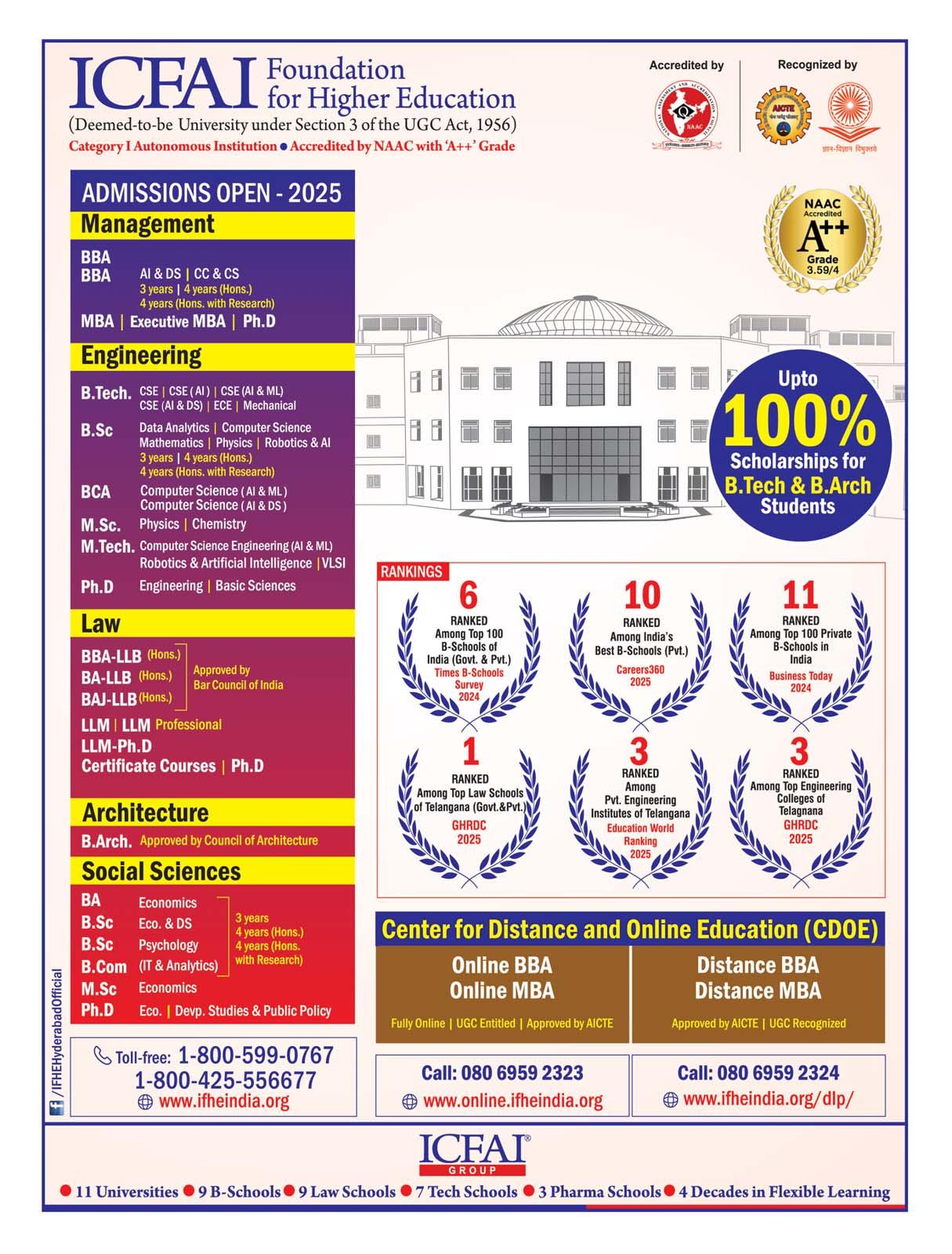
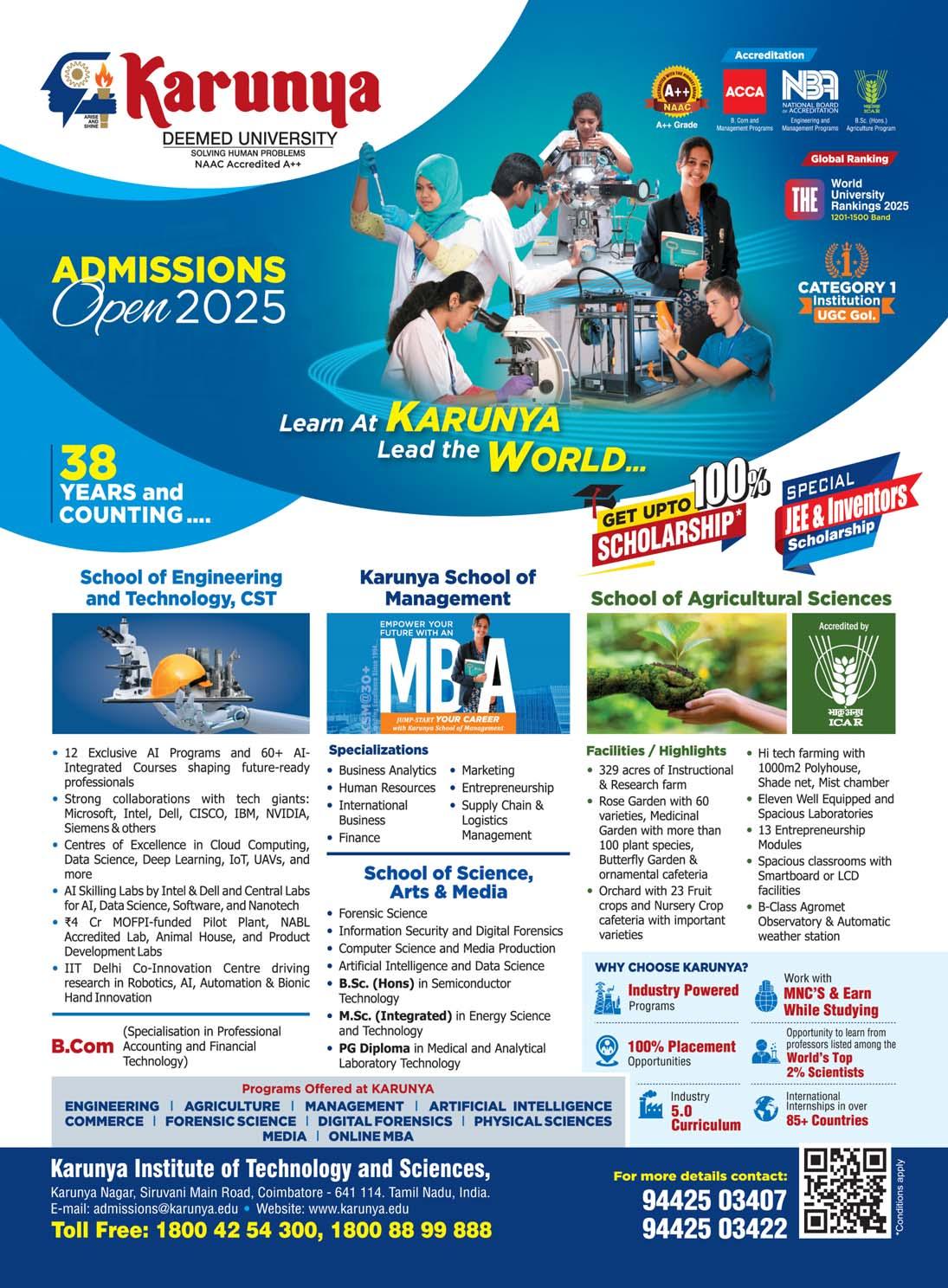
A HARVARD STUDY SUGGESTS THAT BECOMING MORE LIKABLE IN EVERYDAY CONVERSATIONS DOESN’T REQUIRE CHARM OR STORYTELLING SKILLS. INSTEAD, IT COMES DOWN TO A SINGLE, SIMPLE QUESTION THAT SPARKS CONNECTION AND MAKES PEOPLE FEEL HEARD. THIS QUESTION AND ITS FOLLOW-UP QUESTIONS ARE NOT ABOUT YOU, BUT ENTIRELY ABOUT THE OTHER PERSON, OR IN OTHER WORDS, WHAT COUNTS IS YOUR GENUINE INTEREST IN OTHERS’ WELLBEING.
The findings show that this question consistently boosts how others perceive you, whether you’re meeting a new coworker, chatting with friends, or even going on a first date. Yet most people overlook it, missing a surprisingly effective way to leave a better impression.
According to the Harvard research, the key question is “Where are you from?”. While it seems basic, the study found that this opener works as a powerful gateway to connection because it shows immediate interest in the other person’s background and story. Instead of focusing on yourself, you invite your partner to share something personal, which sets the tone for a more engaging exchange.
But the researchers didn’t stop at identifying this opener. They discovered that what truly drives likability is the follow-up. Asking “Where are you from?” and then probing further - like “What was it like growing up there?” or “Do you still visit often?” - signals responsiveness, a quality that makes people feel understood, validated, and cared for.
The study, conducted by Karen Huang and colleagues at Harvard Business School and Harvard University , tested live conversations in different contexts, from online exchanges to face-to-face speed dating. Across the board, people who asked more questions, particularly follow-ups, were rated as more likable and even had higher chances of securing a second date or appointment. While “Where are you from?” is a

strong starting point, the research shows that the real difference comes when the conversation doesn’t stop there. High question-askers use follow-ups to keep the other person talking, showing they are truly listening rather than waiting for their own turn to speak.
For example, if someone says they’re from Chicago, a follow-up like “What’s your favorite part about living there?” instantly deepens the exchange. This creates a sense of responsiveness, which the Harvard team identified as the main driver of likability. People who feel listened to and validated naturally form warmer impressions of their conversation partner.
Interestingly, despite its clear effect, most people underestimate the power of asking questions. Many assume that sharing more about themselvesthrough bragging, stories, humor, or achievements - will make them seem
engaging. But the data show the opposite: turning the spotlight on the other person is what leaves a stronger mark.
Beyond “Where are you from?”, the study points to other simple but effective questions that build rapport. Some examples include: 1) “What do you enjoy most about your work?”This encourages people to talk about passions or achievements. 2) “What do you like to do in your free time?”
- A broad but engaging way to invite someone to share interests. 3) “What was your experience like living there?” - A natural follow-up that adds depth to the opener. 4) “How did you get interested in that?” - A responsive question that highlights genuine curiosity. Each of these, especially when followed by attentive prompts, strengthens the perception of responsiveness and leads to higher likability.
(Credit: Sofia Crotti for Metabolic)
SEASONAL MAGAZINE
Anne-Laure Le Cunff, an award-winning neuroscientist, former Google employee, entrepreneur, and founder of Ness Labs, explains the concept of metacognition to learn faster, deeper and smarter any subject or new domain. It is similar to the much acclaimed Feynman Technique named after Nobel winning physicist Prof. Richard Feynman, that is widely used by many, but goes more deeper in certain aspects.
ant to be a better learner?
Start by noticing how you think. Metacognition - the ability to think about your thinkingcan help you learn faster and make better decisions. This skill helps people improve how they interpret experiences, rather than just collect them.
Self-awareness in your thought process lets you catch errors and misinterpretations in real time, leading to better performance and smarter decision-making. You can train your metacognition by reflecting on mistakes, checking your confidence, and making your reasoning visible through explanation or self-talk.
I remember working on my book and catching myself mid-paragraph. I’d just finished a sentence that felt particularly satisfying to write and paused to ask: Why does this feel so good?
The answer wasn’t flattering. What I’d written sounded smart, but it wasn’t clear. I realized I’d been unconsciously filtering ideas through “does this make me look clever?” instead of “will this help the reader?”
Once I noticed I was optimizing for the wrong outcome, I could change it. I started asking different questions: Is this clear? Will this example actually land? What am I assuming

the reader already knows? That shift - becoming aware of how I was evaluating my own work - changed how I approached the rest of the book.
This kind of self-observation is what researchers call metacognition, and it’s useful far beyond writing. While most people learn by trying things and seeing what happens, metacognition lets you get better at the learning process itself. Instead of just collecting experiences, you improve how you interpret them.
Your brain is constantly making predictions. It expects certain outcomes; you act on those
expectations, see what happens, and then update your mental model. Touch something hot, feel pain, remember that hot things hurt. Message someone, get no response, assume they’re not interested. This cycle runs automatically, usually without conscious thought.
This system is fast and efficient, but it has problems. The biggest issue is that your automatic learning system often focuses on the wrong signals. It’s easily skewed by recent events, your mood, and invisible biases.
Worse, it can’t examine itself. It can’t tell whether it’s actually learning the correct lessons from experience. It’s like trying to see your own face without a mirror.
When you pause to ask, “How confident am I about this?” or “What’s the basis for my reasoning?” you’re doing something qualitatively different from automatic thinking: You’re observing your own mind at work.
Metacognition means “thinking about thinking.” Instead of just learning from what happens, you pay attention to how you’re learning. Research suggests that people who regularly check their confidence become better at distinguishing between what they know and what they only think they know, and as a result develop a
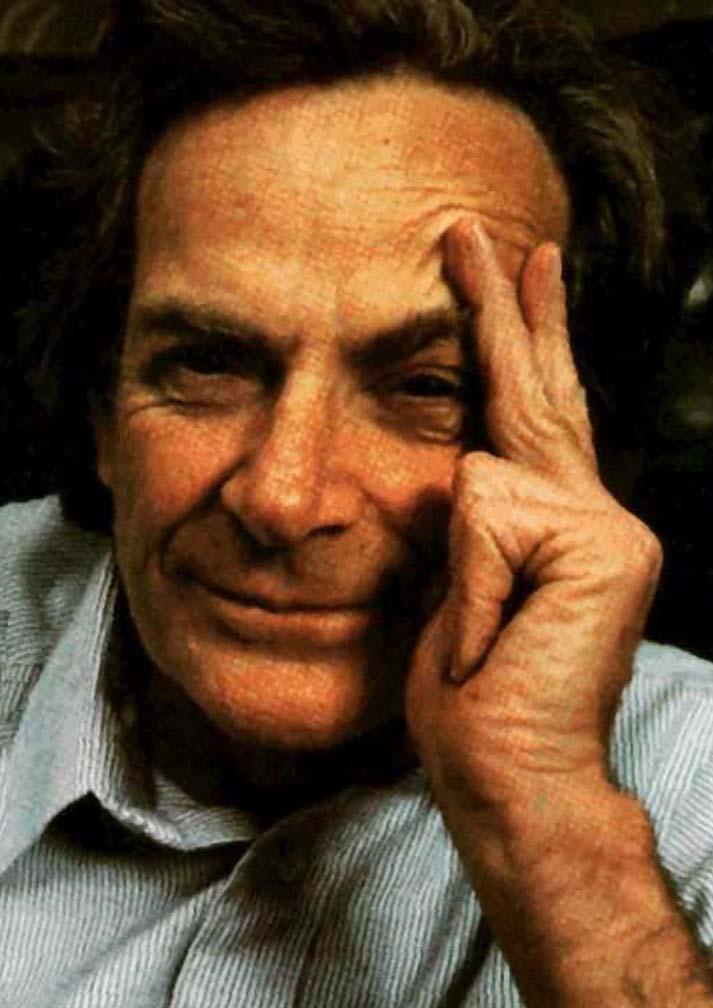
sharper sense of their own understanding.
For instance, a chess master doesn’t just analyze positions - they analyze their analysis. They notice when they’re being drawn to flashy moves or letting emotion cloud their judgment. A surgeon notices when fatigue or overconfidence might affect their decisions.
This self-monitoring helps experts catch problems in real time, rather than waiting for results to show what went wrong, meaning they can adjust
their approach while still in the middle of a task.
Metacognition isn’t just about awareness; it’s about improving how you think. The good news is that you can train it. Practices you can try include: 1) Explain things to yourself. When learning something new, don’t just read or listen. Ask yourself why it makes sense and how it connects to what you already know. 2) Study your mistakes. If something goes wrong, resist moving on too quickly. Instead, dig into what happened:
What was I thinking? Where did my reasoning break down? What was I assuming? What would I do differently?
3) Think out loud. When solving a problem or making a decision, narrate your thought process. Speak (or write) what you’re thinking as you think it. This makes your invisible reasoning visible so you can examine it. 4) Check your confidence. Notice how sure you feel when making a decision. Consider whether your confidence comes from solid evidence or gut feeling, and what information you might be missing.
Notice your thoughts. Just like in mindfulness meditation, simply observe your mental processes without judgment. You don’t need to meditate for hours; even a few minutes of paying attention to your thinking can be helpful. Above all, stay curious about how your mind works. Notice when problems feel easy or hard, when your motivation goes up or down, and when you make the same kinds of mistakes.
And the next time you’re learning something, solving a problem, or making a decision, ask: How am I approaching this? What am I assuming? How confident should I actually be? These metacognitive questions, if asked regularly, can change not just what you think but how you think.
(Credit: Big Think)
INDIA CURRENTLY HOSTS OVER 1,800 GCCS - NEARLY HALF OF THE WORLD’S TOTAL - ACCORDING TO A JULY REPORT PUBLISHED BY THE CONFEDERATION OF INDIAN INDUSTRIES AND DELOITTE. EVERY TWO WEEKS, THREE NEW GCCS ARE SET UP IN INDIA, AND 60% OF EXISTING CENTERS PLAN TO EXPAND.
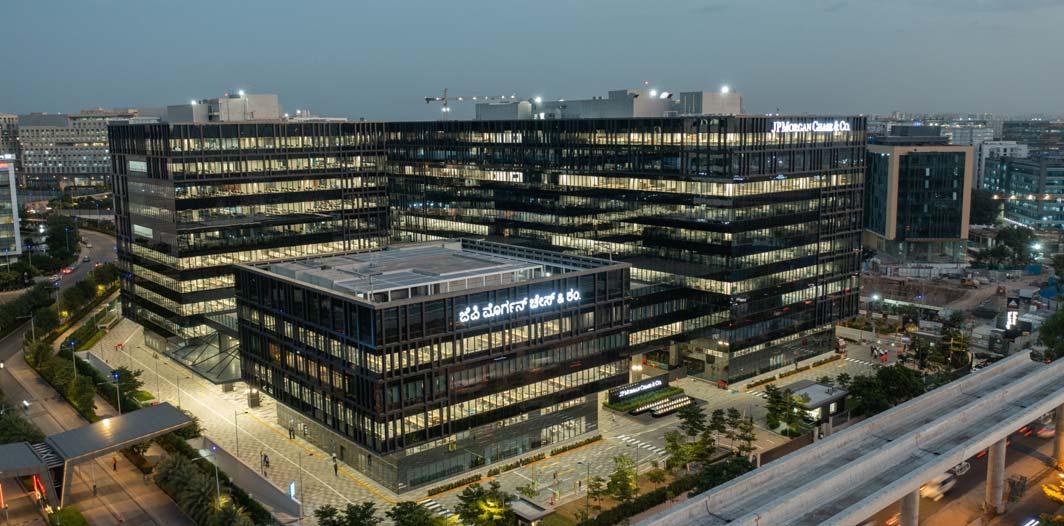
ipping coffee in a café surrounded by Singapore’s skyline, Anshuman Magazine of real estate services firm CBRE told me that global capability centers (GCCs) accounted for 38% of office space demand in India in the third quarter.
“The demand for office space is at a record high in the country,” Magazine, the head of India, South-East Asia and Middle East & Africa markets, said. He added that the demand for GCCs - which are offshore offices where multinational firms run operations ranging from finance or IT - will continue. Three months ago, his firm made a hire in the U.S. dedicated solely to helping clients establish GCCs in India.
Just this week, U.S. mutual fund giant Vanguard inaugurated its new GCC in Hyderabad. Heading the firm’s
operations in India is Venkatesh Natarajan, who relocated to Hyderabad after nearly three decades in the U.S. Before Vanguard, Natarajan served in leadership roles at companies like Walmart, Lowe’s Home Improvement and Qurate Retail.
He isn’t alone. Many global companies are now hiring or relocating leadership roles to their GCC offices in India. Ankur Mittal serves as chief technology officer and managing director of Lowe’s India, while Navneet Kapoor is the executive vice president and chief technology officer at Danish shipping giant A.P. Moller-Maersk. Both are based in Bengaluru.
GCCs, in their earliest form, were remote offices handling finance, procurement and IT services for global firms seeking to cut operational costs.

Today, these “back offices” are driving transformation, not merely supporting it. Increasingly, many of these centers are leading efforts on product engineering, AI model development, and automation strategy - co-owning innovation and intellectual property in the process.
“The key difference between traditional back offices and GCCs is ownership,” said Nitesh Bansal, managing director of R Systems, a U.S.-based consultancy that advises companies on GCC strategy. As firms move their R&D or engineering operations to India, they are looking to hire for leadership roles that come with greater accountability, he added.
Experts say many multinational firms are adopting dual leadership models, where global business unit heads in India co-own strategy and product outcomes with their counterparts at headquarters.
“It’s less about delegation and more about shared accountability,” said Naveen Gattu, head of global growth at GCC consultancy firm Straive. The talent profile within GCCs, he added, is “definitely changing.”
Five years ago, GCC hires were
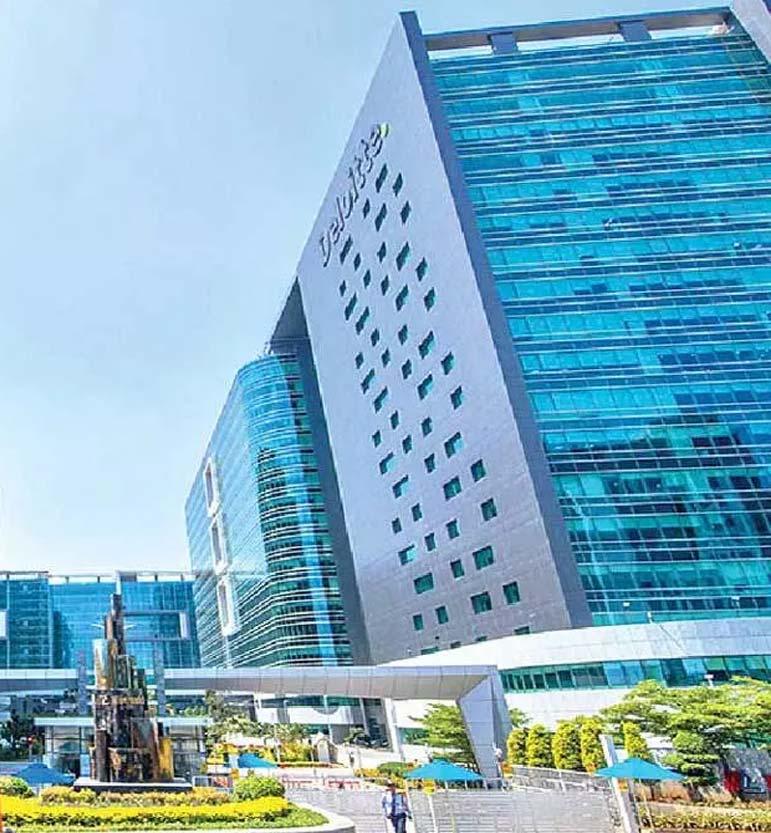


mainly for roles in engineering, analytics, and operations. Now there’s a clear pivot toward senior and strategic roles. “GCCs are now hiring VP-level and even global function heads who are permanently based in India or Southeast Asia, managing enterprise-wide mandates,” Gattu said.
According to GCC consultancy ANSR, leadership roles in Bengaluru more than doubled from 21 in 2024 to 44 so far this year. In Hyderabad, the jump was even sharper, rising from 8 leadership roles in 2024 to 42 year to date. Other Indian cities with GCCs are seeing similar trends.
“GCCs have evolved from delivery centers into leadership hubs that shape enterprise strategy,” said Lalit Ahuja, founder and chief executive officer at ANSR, adding that some
leaders “who grew within their GCCs have gone on to become global [Csuite roles] while continuing to operate from India.”
India currently hosts over 1,800 GCCs - nearly half of the world’s total - according to a July report published by the Confederation of Indian Industries and Deloitte. Every two weeks, three new GCCs are set up in India, and 60% of existing centers plan to expand.
GCCs today manage key functions that directly influence decisions, revenue and customer experience. “To manage this complexity, companies need leaders who can think globally and execute locally, and India’s talent pool is uniquely suited for that,” said Ahuja of ANSR.
(Credit: Priyanka Salve & Arjun Kharpal for CNBC)
UPSKILL TO STAY RELEVANT. WHILE MANY BLUECHIP AND EVEN MIDCAP COMPANIES REIMBURSE FOR UPSKILLING, EMPLOYEES TOO CAN ALLOCATE 5-10 PERCENT OF INCOME FOR CONTINUOUS LEARNING, LEVERAGING GOVERNMENT INCENTIVES AND TRACKING ROI TO TRANSFORM EXPENSE INTO EQUITY AND FUTURE-PROOF YOUR CAREER. KNOW THE FEES FOR YOUR UPSKILLING PROGRAM AND BUDGET FOR IT.
s automation and AI reshape industries, upskilling is a must for survival. The World Economic Forum predicts that by 2027, 44 percent of core skills will evolve, demanding professionals invest in targeted learning to secure promotions, pivots, or raises. Amid rising course fees and economic pressures, the question looms: how much should you spend to stay ahead?
Treat upskilling like insurance for your career trajectory. As Shantanu Rooj, founder and CEO of TeamLease Edtech, said, “In a world where 44 percent of job skills are set to change within five years, upskilling is as essential as insurance — it protects career relevance.” Treating upskilling like a regular expense rather than a one-time splurge can drive long-term career growth and financial stability.
Know the fees for your upskilling programme and budget for it. For instance, Coursera’s Google Data Analytics Professional Certificate costs Rs 3,500 a month (about $42

as of 2025), while edX’s MicroMasters in AI from MIT costs Rs 1.2 lakh for nine months.
“A prudent benchmark is to dedicate 5-10 percent of one’s monthly income toward continuous learning. The key is consistency - small, recurring learning investments often yield better results than one-time big spends,” Rooj said. For instance, a junior developer earning Rs 50,000 a month might allocate Rs 2,500–5,000 for LinkedIn Learning’s.
In India, popular programs reflect this range. UpGrad’s Postgraduate Diploma in Digital Marketing (with Liverpool John Moores University) fees is Rs 2.5 lakh for 12 months and is ideal for mid-career shifts. Online, Simplilearn’s PMP Certification prep costs Rs 25,000, offering a quick return on investment (ROI) through project management roles in IT firms.
High-stakes courses tempt loans but context matters. “If a programme demonstrably improves employability financing, it can be a sound long-term investment,” Rooj said. A finance analyst, for instance, borrowing Rs 3 lakh for IIM-Bangalore’s Executive PGP in FinTech (fees Rs 4.5 lakh as of 2025) might justify it through a 40 percent salary jumps in BFSI, alumni data shows.
Affordable learning with flexible timelines from online edtech platforms offer strong ROI without financial strain. You can also explore courses and skill development

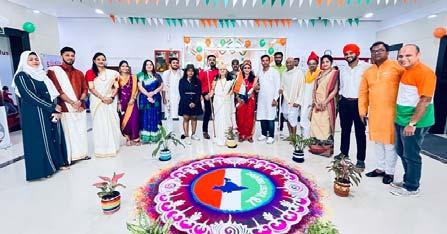
schemes on Skill India Digital Hub of skill development and entrepreneurship ministry across sectors including IT, digital marketing, coding and AI.
Track success through tangible metrics: job offers, hikes, or networks. “ROI here is measured in employability outcomes: promotions, career shifts, or salary progression. Making upskilling a fixed annual budget line ensures learning becomes proactive, not reactive,” Rooj said. Tax deductions under Section 80C cover up to Rs 1.5 lakhs annually for education loans.
The true cost of irrelevance far exceeds upskilling fees - stagnation erodes earnings by 15–20 percent yearly, as per McKinsey. By allocating wisely, leveraging incentives, and prioritizing outcomes, you transform expense into equity. Start with small learning program, audit skills, budget 5-10 per cent for continuous learning, and commit. Relevance isn’t free, but it’s priceless.
(Credit: Hiral Thanawala for Moneycontrol)
PRODUCTIVITY
AT ANY GIVEN MOMENT, THERE’S A GOOD CHANCE YOU’RE RESPONDING TO TEXTS, CHECKING EMAILS, AND STARTING A WORK PROJECT ALL AT THE SAME TIME. MOMENTS LATER, YOU MIGHT ALSO WONDER, “WHY AM I SO DISTRACTED? WHY CAN’T I FOCUS? WHY DON’T I EVER GET ANYTHING DONE?”
On TikTok, creator @ olivia.unplugged called everyone out with a single post shared recently, in which she discussed the downsides of multitasking. As an alternative to the chaos, she offered the 90-minute rule, which aims to boost your focus and productivity. “We’ve talked about the Pomodoro method,” she said in the clip, which has over 155,000 likes. “But I raise you one: The 90-minute rule.”
This hack is all about working for 90minute stretches of time without distractions. It utilizes the brain’s “ultradian” rhythm, which you can think of as a squiggly line that represents your attention. It has high peaks of focus followed by dips in energy. Apparently, 90-minute time slots work well with these natural rhythms - so you can truly lock in.
“You have a built-in timer,” Olivia said. During her work sessions, she’ll set a timer, block her most distracting apps, and focus for a full 90 minutes followed by a 20-minute break. “When you respect your brain, you get more done, in less time, without burning out,” she added. Here’s what else to know.
According to Dr. Sydney Ceruto, an author and founder of MindLAB Neuroscience, the 90-minute focus cycle is all about using your ultradian rhythm to your advantage. “When you work with this rhythm instead of against it, your prefrontal cortex stays engaged, your dopamine stays elevated, and your ability to enter flow state dramatically increases,” she tells. “After 90 minutes, your dopamine and acetylcholine - the focus neurotransmitters - deplete,” making you tired and distracted.
Remember that an hour and a half of

focused work is your friend, and it’s something you can use to lock in at work. It also helps you let go of the idea of working as hard as you possibly can without any breaks. “Your brain isn’t wired for 8-hour focus sprints,” Ceruto says. “It’s wired for 90-minute cycles of high activation followed by 20-minute recovery.” Anything past that isn’t helpful. “You’re fighting your own biology,” she says.
While anyone can benefit from working for that amount of time, it’s especially helpful for those who need to dive into some thoughtful, focused work. It isn’t ideal for customer service or reactive roles, Ceruto says, where interruptions are expected. “Try it when you have a high-stakes project or deadline,” she says.
Regular 90-minute work sessions can also help you learn how to improve focus in the future. “Even two weeks of 90-minute blocks will reset your focus baseline,” she says.
To try the productivity hack, silence your phone, close all tabs except the ones you’re working on, and set a timer for 90 minutes. According to Ceruto, you should also avoid multitasking. “Pick one task to complete,” she says. “Not three. Not two. One.” To play nice with your brain, having a singular focus is best.
Then dive in. “Work intensely for the full 90 without breaks or contextswitching,” she says, meaning you shouldn’t look away from your work for an email or call. “Your amygdala will resist around the 45 to 60 minute mark,
aka the novelty dip,” she adds. “Push through. Then stop.” Once the timer goes off, take a 15- to 20-minute break. Go for a walk outside, drink some water, or stretch.
While some people might want to use this method every day, Ceruto recommends starting slow. “If you’ve been working chaotically for years, your brain needs recalibration,” she says. “Start with two 90-minute blocks and one 60-minute block per week. Your nervous system will resist because it’s addicted to context-switching dopamine hits.” In other words, it’ll be so tempting to read your texts, scroll social media, or even do something different for a while.
After following the method for two weeks, your brain should start to appreciate it. “You’ll notice deeper focus and less mental fog post-work,” Ceruto says. If you like what you see, you can eventually move up to backto-back 90-minute cycles followed by longer breaks.
The 90-minute rule isn’t about working harder, but about working with your neurobiology to lock in on tasks that require your full attention. “It’s restorative, not extractive,” Ceruto says. “This works better when you’re not chronically sleep-deprived or overstimulated. Digital detox and sleep hygiene amplify the effect. Get eight hours, protect your mornings, and these blocks become genuinely transformative.”
(Credit: Carolyn Steber for Bustle)
SEASONAL MAGAZINE
MAXI BECKER, A COGNITIVE NEUROSCIENTIST AT DUKE UNIVERSITY, HELPS EXPLAIN
THE CREATIVE BREAKTHROUGH PROCESS THAT HELPED LEGENDARY SCIENTISTS AND PHILOSOPHERS INCLUDING ARCHIMEDES, NEWTON & EINSTEIN TO COME UP WITH CREATIVE BREAKTHROUGHS THAT CHANGED ENTIRE SECTORS OR THE WHOLE WORLD FOREVER
Here are three words: pine, crab, sauce. There’s a fourth word that combines with each of the others to create another common word. What is it? When the answer finally comes to you, it’ll likely feel instantaneous. You might even say “Aha!” This kind of sudden realization is known as insight, and a research team recently uncovered how the brain produces it, which suggests why insightful ideas tend to stick in our memory.
Maxi Becker, a cognitive neuroscientist at Duke University, first got interested in insight after reading the landmark 1962 book The Structure of Scientific Revolutions by the historian and philosopher of science Thomas Kuhn. “He describes how some ideas are so powerful that they can completely shift the way an entire field thinks,” she said. “That got me wondering: How does the brain come up with those kinds of ideas? How can a single thought change how we see the world?”
Such moments of insight are written across history. According to the Roman architect and engineer Vitruvius, in the third century BCE the Greek mathematician Archimedes suddenly exclaimed “Eureka!” after he slid into a bathtub and saw the water level rise by an amount equal to his submerged volume (although this tale may be apocryphal).
In the 17th century, according to lore, Sir Isaac Newton had a breakthrough

in understanding gravity after an apple fell on his head. In the early 1900s, Einstein came to a sudden realization that “if a man falls freely, he would not feel his weight,” which led him to his theory of relativity, as he later described in a lecture.
Insights are not limited to geniuses: We have these cognitive experiences all the time when solving riddles or dealing with social or intellectual problems. They are distinct from analytical problem-solving, such as the process of doing formulaic algebra, in which you arrive at a solution slowly and gradually as if you’re getting warmer. Instead, insights often follow periods of confusion.
You never feel as if you’re getting warmer; rather, you go from cold to hot, seemingly in an instant. Or, as
the neuropsychologist Donald Hebb, known for his work building neurobiological models of learning, wrote in the 1940s, sometimes “learning occurs as a single jump, an all-or-none affair.”
An abrupt cognitive shift in how the mind understands information is known as a representational change. Although researchers have inferred sudden shifts in understanding from the behavior of subjects, they have not pinned down how the brain supports representational change.
During moments of insight, representational change typically occurs, said John Kounios, a cognitive neuroscientist at Drexel University and co-author of the book The Eureka Factor: Aha Moments, Creative Insight, and the Brain. “The question is: How is it occurring?”
While at Humboldt University of Berlin, Becker set out to uncover this neural signature of insight. Given that it’s nearly impossible to fabricate lifechanging, field-altering insights in the lab, her team needed to identify a simple task that could produce a sudden feeling of understanding rather than a slowly unfolding solution. They turned to abstracted black-andwhite pictures called Mooney images, which are made by cranking up the contrast on a photograph all the way so that the subjects - a dog or a coffee mug, for example - are unrecognizable at first. The pictures pose a challenge

for human brains, which typically identify objects by piecing together their different parts.
But if given enough time with a Mooney image, even a few seconds, the brain can rearrange the contours to recognize the pictured object - and trigger the insightful “aha” feeling, a representational change.
To induce moments of insight in the lab, researchers used Mooney images, which have their contrast turned up to obscure the pictured object. Can you identify the object in this Mooney image? Click on the right square to reveal the answer.
Over the course of two days, Becker had study participants lie in a functional magnetic resonance imaging (fMRI) scanner, which detects blood flow in the brain as a proxy for neural activity, and view a series of 120 Mooney images. After 10 seconds of viewing a single image, the participant would indicate whether they recognized the pictured object.
If they did, they would then answer a series of questions about the suddenness, positive emotion and certainty associated with their experience - three measures that have
been linked to moments of insight.
Becker and her team then used neural networks to parse the fMRI data, looking to identify consistent changes in brain activity shared by participants when they correctly recognized Mooney images. They observed that when a participant noticed a hidden object, brain activity increased in the ventral occipitotemporal cortex (VOTC), a region responsible for recognizing visual patterns in the environment; the amygdala, which processes both positive and negative emotions; and the hippocampus, a deep-brain structure involved in handling memories. This activity was greater for experiences rated more certain and emotionally positive - in other words, more insightful ones.
The hippocampus is sometimes known as the brain’s “mismatch detector,” Becker said, because it reacts when an input doesn’t align with expectations. In this case, insight leads a once-meaningless image to gain meaning, going against the brain’s predictions.
These regions - the hippocampus, amygdala and VOTC - create “a plausible network of brain areas” behind representational change, said Kounios, who was not involved in the
study. These findings finally “connect the psychological theory with the neural mechanism,” said Yuhua Yu, a postdoctoral researcher in neuroscience at the University of Arizona, who was also not involved with the study.
Becker and her team likely found representational change in the VOTC because of the visual nature of their stimuli. If they had chosen another type of stimulus, like words, the change would probably have appeared in language-processing areas of the brain. Once the team had figured out which brain areas support insight, they wanted to probe whether these regions might be working together to create a lasting memory. Since they began investigating insight, researchers have suspected that such experiences might boost memory. In his 1949 book The Organization of Behavior, Hebb wrote that “whatever insight is, we now know that it continually affects the learning of the adult mammal.” Insight not only feels notable or salient in the moment but also helps us retain new information as memory.
This memory boost, which became known as the insight-memory advantage, has since been studied in many types of problem-solving, including the unraveling of magic tricks and puzzles. “When you have an insight, you tend to be better able to remember the solution,” Becker said, compared to when you resolve a problem more gradually. She wanted to understand why.
A few days after the initial experiment, the team tested participants’ memory by having them look at more Mooney images online, including some they had seen before. Participants were better able to remember prior images that they had rated highly on the three aspects of insight. This suggested that the insight-memory advantage was real, but the team wanted to see what was going on under the hood. Did brain activity during insight predict better memory five days later?
The researchers found that the larger
the activity boost in both the VOTC and the hippocampus during the initial insight, the better participants remembered the Mooney images. The big change in brain activity likely makes the experience more salient, Becker said, and salient experiences are known to better encode long-term memories.
While insight creates stronger memories of an idea, it doesn’t mean the idea is correct. Previous work has shown that the quicker, more certain and more pleasurable a solution feels, the more likely it is to be correctbut false insights can and do exist. In Becker’s study, participants wrongly identified the subjects of more than half the Mooney images they saw. Of those incorrect trials (which the researchers excluded from the analysis), the participants reported experiencing insight 40% of the time. In comparison, correct trials were accompanied by feelings of insight 65% of the time.
These kinds of studies of insight in the lab will set researchers up to look at how it functions in the real world. Once we decompose insight into “very simple tasks that we already understand well,” Becker said, we can “move on to more complex, truly creative tasks.”
As a self-described uncreative person, Yu has been particularly fascinated by insight’s role in the creative process. Creativity is “like a magic

power,” she said. “A really big creative idea is often associated with insight because a creative idea is in some way a leap in your cognitive world, and a leap will often elicit an insight or ‘aha’ feeling.”
However, Yu is finding that insight’s role in creativity might depend on the kind of problem a person is solving. In a recent study, she asked participants to come up with metaphors for scientific concepts and asked whether they used insight as they did so. The insight-driven metaphors weren’t more or less creative than those created through analytic thinking, she found - and the participants were more likely to remember the science concepts behind the latter.

This may be because, unlike the task of seeing a hidden object in a Mooney image, creating a metaphor tends to rely on slower cognitive problemsolving rather than sudden moments of insight, Becker suggested. The effects of insight therefore likely depend on the context.
Next, Yu wants to investigate insight in more contexts. “Most of the insight research is looking at insight in the problem-solving context and in the lab setting,” Yu said. She hopes that researchers will begin investigating “insight within many other domains, like in psychotherapy, in meditation, even in psychedelic experiences.”
Beyond offering a better understanding of how the human brain learns, these findings could have applications in classrooms. Kounios believes that applying insight-boosting strategies to teaching could lead to better learning outcomes for students. Insight seems to be a powerful and positive experience that generates accurate solutions, confidence in our answers and strong memories.
“It’s very intensive for a teacher to do this, but a lot of really good teachers try to get the students to have the insights themselves about how something works, and that will burn it into their memories,” Kounios said. “Another aspect of that is, it’s very motivating, too.”
It’s a nice feeling when your brain suddenly comes up with an answer. Perhaps you’ve even experienced that feeling since reading this piece’s first sentence. Maybe it even hit you like an apple on the head.
(Credit: Nora Bradford for Quanta Magazine)
BEAUTIFUL TRAIN STATIONS ARE ARGUABLY A CITY’S MOST TREASURED ARCHITECTURAL LANDMARK. WITH NONSTOP FLIGHTS GOING SEEMINGLY EVERYWHERE, PEOPLE TEND TO PREFER THE SKY OVER THE RAIL. THAT SAID, THERE’S SOMETHING NOSTALGIC – AND EVEN GLAMOROUS – ABOUT BOARDING A TRAIN THAT SIMPLY CANNOT BE REPLICATED IN ANY OTHER FORM OF TRANSPORTATION – ESPECIALLY PLANES, WHICH ARE GETTING MORE MODERN BY THE YEAR. AFTER ALL, TRAINS ARE OFTEN CREDITED WITH COMPLETELY TRANSFORMING THE UNITED STATES IN NEARLY EVERY REGARD (SOCIALLY, POLITICALLY, AND ECONOMICALLY) DURING THE MOST FINANCIALLY LUCRATIVE PERIOD, THE GILDED AGE.
And with the popularity of trains on the rise throughout the latter half of the glittering 19th century, some of the stations are unsurprisingly beautiful works of architectural magic. From the celestialinspired frescoes on the towering ceilings to the glossy red brick floors, the most beautiful train stations are proof of the economic boom such transportation hubs introduced.
Whether it’s on your daily commute or on daring adventures across the globe, you’d be amazed to find that some of the world’s most stunning architecture can be found in train stations. From the spectacular Gothic Revival look of London’s St Pancras International to the Art Deco and Spanish Colonial styles of John and Donald Parkinson’s Union Station in Los Angeles, the dramatic designs featured in these transportation hubs make catching a train an aweinspiring experience. Next time you find yourself booking a worldly adventure, make sure to plan a stop at any one of these renowned stations.
Paris’ Olympic and Paralympic villages, Vienna’s DC Towers, Longchamp Racecourse – the list of Dominique Perrault’s jaw-dropping architectural achievements rolls on. Among them, France’s Villejuif–Gustave Roussy Station, a spectacular metallic train station featuring a cylinder measuring 70 metres in diameter, allows air to circulate and creates a fresh ambience by casting light 50 metres below into the depths of one of the country’s deepest

passenger stations.
Mons’ first station opened in December 1841, although the rapid expansion of the railways has seen several iterations of a central transport hub in this Belgian city. Mid-19th-century rail enthusiasts would be quite taken aback by the contemporary hub that sits here today – a fantastical train station designed by celebrated Spanish architect and structural engineer Santiago Calatrava. The result is a streamlined station made of steel that resembles a futuristic cathedral, featuring enclosed spaces and skylights that allow for year-round temperature regulation.
China doesn’t do modern transport by halves, as Guangzhou’s glittering highspeed rail hub Baiyun Station demonstrates extremely well. Perched on the site of the defunct Tangxi railway station, this new hub boasts 24 highspeed train lines, six subway lines, and three bus terminals, all within a light and airy structure. It’s the work of Nikken Sekkei, the design firm that has previously worked on projects such as The Osaka Station Hotel and Conrad Osaka.
Sydney’s glitziest new metro station opened to commuters and travellers in the city’s central business district in August 2024, named after the Aboriginal people who were the

original custodians of the land around this part of Sydney. From the street-level entrance, the station – part of Australia’s first underground train system – dives 25 metres underground and is described as Prix Versailles as “the epitome of absolute modernity”. See the architecture before ambling a few blocks down towards Hyde Park, the country’s oldest public parkland.
At the turn of the century, there was no public transport infrastructure in Saudi Arabia. Things have come a remarkably long way in such a short amount of time, and KAFD Station, located in Riyadh’s financial district, is a prime example.
Zaha Hadid Architects’ masterpiece is the hub of a network that now spans 176 kilometres of tracks and 85 stations, featuring a façade that echoes the patterns created by desert winds in sand.
Saint-Denis – Pleyel Station is a behemoth of a beautiful train station designed to accommodate around a quarter of a million passengers a day. Platforms are located 27 metres below ground in the City of Light’s northern suburbs, but Japanese architect Kengo Kuma ensured that light reached the platforms with a dramatic draped effect. A wooden atrium brings a warming effect, under which more than 100 sculptures inspired by the earliest
depictions of women in Palaeolithic art are being installed.
The glorious waiting hall of the Antwerp station, completed in 1905, is lavishly adorned with more than 20 kinds of marble and stone, but what keeps this from feeling ponderous is the counterpoint of soaring arched windows and skylights that fill the concourse with light. The upper train platform, too, features a magnificent vaulted iron-andglass roof. Thanks to a careful 2009 restoration, dilapidated pediments and turrets that were removed in the 1950s have been reconstructed, and the integrity of the original terminal has been maintained even as new tunnels have been dug to allow for through traffic and high-speed rail.
Less famous – but no less grand – than Istanbul’s Sirkeci station, Haydarpaºa has the distinction of being built on land reclaimed from the Bosporus Strait, which leaves it surrounded by water on three sides. The imposing neoclassical edifice, designed by German architects Otto Ritter and Helmut Conu, was inaugurated in 1909 on the birthday of the reigning sultan, Mehmed V. The station’s concourse features coffered barrel-vault ceilings and generous
windows. While Haydarpaºa closed in 2012 for restoration and the development of high-speed lines, it’s still an impressive sight from the exterior, best viewed by boat.
Architect Zaha Hadid first made her mark on Austria’s Innsbruck region with the 2002 Bergisel ski-jump tower. She returned with this design for the Nordpark Cable Railway, a four-station funicular line that replaced a 100-year-old tram and

transports passengers up a vertiginous incline for 1.1 miles. Each of Hadid’s stations is capped with swooping glass shapes that suggest ice floes and snowdrifts. Here, a view of Hungerburg Station, the final stop in the funicular’s ascent which was completed in 2007.
When Kanazawa’s circa 1898 station was upgraded in 2005, the initial reactions were mixed. The addition of the ultramodern glass-and-steel dome and giant drum-shaped wood gate struck many as ill-fitting. But visitors continue to flock to the Ishikawa, Japan station’s dramatic add-ons, and the new structures’ allure competes handily with the historic town’s other attractions, including a geisha district and former samurai quarters.
Designed by a British government architect named Arthur Benison Hubback and opened in 1910, the Kuala Lumpur station in Kuala Lumpur, Malaysia is a neo-Moorish delight, a fantastical agglomeration of minarets, dome-capped pavilions, and articulated archways. Now more of a hub for commuters than tourists, the magnificent white-and-cream Anglo-Asian station is still worth a stop.

Spanish architect Santiago Calatrava designed the latest incarnation of the Liège-Guillemins Railway Station using steel, glass, and white concrete. His version, completed in 2009, replaces a 1958 International Style building (which itself replaced an 1842 Beaux Arts structure), and intentionally lacks a single façade in order to unite two neighbourhoods previously separated by the railroad tracks. Calatrava’s interest in the plasticity of concrete is
evident here, and the immense ribbed vault he created flows organically, suggesting a wave breaking over the thousands of passengers that flow under it daily.
Italy’s second-largest station (after Rome’s Stazione Termini) opened in Milan in 1931. It was originally modelled after Union Station in Washington DC, but when Mussolini came into power, he expanded the Beaux Arts design to include elements of Art Nouveau and Art Deco. The stunning results feature 118,000 square


feet of marble flooring, an array of muscular stone sculptures, and five train sheds covered with vast iron-and-glass canopies.
Architect José Marques da Silva turned to 19th-century Paris for inspiration when he designed the stone façade and mansard roof of Porto, Portugal station, which opened in 1916 in Portugal’s second-largest city. The station’s centrepiece was created by the painter and native Jorge Colaço, who covered
the atrium walls with scenes from Portugal’s history. Although Colaço often worked on canvas, the technique used here enlisted 20,000 tin-glazed ceramic tiles. It took the artist 11 years to complete the murals.
As Istanbul’s gateway to Europe, the magnificent Sirkeci station was appropriately a melding of French Art Nouveau and Ottoman aesthetics. When it opened in 1890, it was considered quite modern for its time, boasting 300 gas lanterns and tile stoves
imported from Austria. The station, which stands at the foot of the Bosporus Strait, features bands of bricks across its façade, clock towers, and stained-glass windows. The station served as the terminus for the famed Orient Express, which connected Paris’s Gare de l’Est to Turkey in an 80-hour journey until the line stopped serving Istanbul in 1977.
Stretching an entire city block, Melbourne’s elaborate station features an undulating roof that rests on a series

of Y-shaped columns. The structure was renovated in 2005 (and renamed – it was previously known as Spencer Street Station for its location) and now displays an innovative design by Grimshaw Architects.
Architect Santiago Calatrava’s highly anticipated World Trade Center Transportation Hub finally opened in Lower Manhattan. The centrepiece of the project is the 800,000-square-foot glass-and-steel structure known as the
Oculus. The hub connects 11 subway lines, the PATH train, the Battery Park City Ferry Terminal, and several downtown buildings. The soaring main hall features white marble floors and a 355-foot retractable skylight. The Oculus is also now home to the 365,000-square-foot Westfield World Trade Center mall, which opened in August 2016.
Father-son architects John and Donald Parkinson blended Spanish Colonial and Art Deco styles for Los Angeles’s main railway station, completed in 1939, which is the largest passenger train terminal in the western US Patios line the walls of the station’s waiting room, while travertine marble covers the station’s interior walls on the lower level.
Opened in 1864, this majestic BeauxArts complex in Paris’s 10th arrondissement is one of the oldest rail stations in the world, still one of the busiest, and perhaps the most magnificent. Twenty-three female statues adorn its façade, each personifying a destination served by the rail line. The station’s interior is bathed in natural light thanks to soaring windows, and the train shed’s glass-andcast-iron roof is a triumphant merger of engineering and beauty.
Like many older cities with outmoded train stations, Rotterdam needed its central rail hub to accommodate more passengers as well as high-speed and commuter lines. Rather than preserve a nondescript 1957 terminal, the city commissioned a team of architectural firms to collaborate on a new complex, which opened in March of this year. The centrepiece of the design is the main entrance’s shiny boomerang-like canopy, a stainless-steel projection that is warmed by a partial cladding of wood. A similar melding of cool and warm materials occurs at the train platforms, where a transparent roof is supported by wood beams. Less visible, but no less impressive, is the use of 130,000 solar cells spread across the roof area, making this one of the largest
rooftop solar projects in Europe.
This Beaux Arts wonder, completed in 1907, was the first major structure in the country to be built of Bethel, Vermont, white granite, a stone prized for its strength and brightness. The station brought Washington, DC’s two rail hubs under one roof, allowing the railroads to dismantle central trackwork and create the National Mall. The station itself, designed by architect Daniel H. Burnham, features a stunning coffered plaster ceiling and draws inspiration from classical elements such as Rome’s Arch of Constantine (reflected in the main façade) and Baths of Diocletian (seen in the vaulted interiors). Surface embellishments make liberal use of marble, gold leaf, and mahogany.
The bronze dome of Maputo, Mozambique’s central rail station cuts an impressive silhouette against the uncluttered skyline that surrounds it. A high-water mark of Portuguese colonial architecture – built by Alfredo Augusto Lisboa de Lima, Mário Veiga, and Ferreira da Costa and completed in 1916 – the station overlooks Praça dos Trabalhadores (Workers’ Square). The modestly handsome structure features a mint-green-and-white exterior, wroughtiron latticework, and a display of antique steam locomotives.
The historic section of King’s Cross Station in London was designed by architect Lewis Cubitt and completed in 1852. At the time, its two train sheds’ glass roofs were considered cuttingedge, although their laminated timber beams were replaced with steel girders, and their two platforms and 14 tracks quickly fell short of demand. A new edge has been honed with a 15-year, $650-million renovation project that has as its most prominent feature this new concourse designed by John McAslan. Covering a new ticket hall and pedestrian thoroughfare, the enormous single-span structure, a sweeping steel grid that looks a bit like a bisected funnel, opened in time for the 2012 Olympics.

The original 1851 Atocha station was mostly destroyed by fire and was replaced in 1892 with a shed that features a soaring wrought-iron-andglass inverted-hull roof (almost 90 feet high) connecting two brick flanks. The architect for the project, Alberto de Palacio Elissagne, also built palaces and bridges and on this project collaborated with Alexandre-Gustave Eiffel, who had just finished his eponymous Parisian tower. Atocha continues to serve as Spain’s largest train station, but in 1992 its main hall was transformed into a shopping mall centred by a one-acre tropical garden.
Formerly known as Victoria Terminus Station, the Chhatrapati Shivaji Terminus in Mumbai, India is a mashup of Victorian Italianate Gothic Revival and traditional Indian architecture. Designed to serve the country’s leading mercantile port and completed in 1888, the station took ten years to build, with tremendous labour involved in executing architect F. W. Stevens’s plan for decorative stone carvings and statuary of local flora and fauna, gargoyles, allegorical grotesques, and busts representing the country’s castes and communities.
The original Grand Central was built by transportation magnate Cornelius Vanderbilt in 1871, but that building was demolished in 1903. The current iteration, completed in 1913, continues to be a jewel in New York’s architectural crown. Its vast concourse is distinguished by elegant marble staircases at either end and a four-faced milk-glass-and-brass clock above its central information booth; the painted zodiac constellations on its cavernous domed ceiling, meanwhile, were almost completely obscured by cigarette-smoke damage until a 1998 restoration. Other highlights of the terminal include the Tiffany clock on its 42nd Street façade and the landmark subterranean Oyster Bar restaurant, which features a serpentine lunch counter, a whispering gallery in its entryway arch, and terra-cotta
Amsterdam’s neo-Renaissance station is the largest railway station in the European Union, serving over 260,000 passengers each day, having opened to the public in 1889. Designed by Dutch architect Pierre Cuypers, the Gothicstyle terminal features a cast-iron platform room.
Just over seven miles north of Naples, the Zaha Hadid Architects-Napoli Afragola Station opened in June of 2017 as a solution to the increase in demand for train travel throughout the small European country. The train station boasts the British-Iranian architect’s highly modern – almost futuristic – look, with an enormous elevated concourse comprised of exposed steel bones and a glazed roof. From afar, however, the young train station looks like a bright white abstract wave-like shape among a completely beige landscape. Surely, that was the architect’s intention.
In Hua Hin, Thailand, the Hua Hin train station is one of the country’s oldest railway hubs. Built in a traditional Thai architectural style, perhaps the small station’s most striking space is the Royal Waiting Room, erected in 1911 during the reign of King Rama. However, it’s been knocked down and rebuilt more than a few times. The original station building was erected a year earlier in 1910 and later rebuilt in 1926 by Prince Purachatra Jayakara, who wanted a more Victorian feel for the petite structure. And in 1967, Colonel Saeng Chulacharit planned for a relocation of the Sanam Chandra Palace Railway pavilion to what is currently in Hua Hin.

THE IPHONE 17 SERIES IS OUT, AND AS IMPRESSIVE AS THE IPHONE 17 AND IPHONE 17 PRO MAY BE, THIS YEAR’S HEADTURNER IS THE IPHONE AIR. WITH A SLIM DESIGN THAT MAKES PEOPLE AROUND YOU SAY, “WOW,” IT’S UNLIKE ANY IPHONE WE’VE SEEN BEFORE. BUT THE WIDE WORLD OF ANDROID HAS SOME EXCELLENT IPHONE AIR ALTERNATIVES.
t just 5.6mm thick and weighing 165g, the iPhone Air is a breeze to hold, making it a very comfortable smartphone to use throughout the day. More than anything else, it is an excellent recommendation for people who want to make a style statement, spec sheet be damned. If you’re looking at the other side and thinking the grass is greener, know that Android phones can turn heads too, be it through style or much better tech. Here are some great Android phones you can buy instead if you want to make an iPhone Air-like statement.
The iPhone Air isn’t the only impressively thin phone on the block; Samsung edged out Apple by releasing its own thin phone earlier in the year.
The Samsung Galaxy S25 Edge is just as thin as the iPhone Air (a 0.2mm difference) and just as light (about 2g lighter), so you’ll still be turning heads while also running Android, your favorite OS.
In fact, the Galaxy S25 Edge is better than the iPhone Air. For starters, you get a slightly bigger display, a more versatile rear camera setup with an ultrawide camera, a second speaker at the bottom for stereo output, faster USB speeds, and slightly faster charging. The Galaxy S25 Edge also has a physically larger battery in its svelte body, though iOS optimizations make direct battery capacity comparisons redundant. One UI 8 on the Galaxy S25 Edge runs incredibly, and you get many more AI features right away than Apple intends to deliver in the near future.
While all these physical traits make the

Galaxy S25 Edge a great competitor against the iPhone Air, its pricing clinches it the trophy. While the iPhone Air starts at $999, the Galaxy S25 Edge started at $1,099 at launch, but you can routinely find it discounted to as low as $700. That’s $300 back in your pocket for just as much wow factor, if not more. Yes, the Galaxy S25 Edge is not perfect. The battery life is mediocre, the thermals are poor, there is no telephoto camera, and I would have loved some faster charging. However, all of these limitations stay true for the iPhone Air too. People buying these thin phones know their limits, yet choose style over the spec sheet — and that’s okay. Android is about choice after all.
The Galaxy Z Flip 7 with its cover screen on.
If you are looking for a thin and light phone that can impress people, Samsung has another phone in store for you. The Galaxy Z Flip 7 looks like a regular smartphone, but it flips shut to become a super-compact foldable that easily slides into pockets and purses. When unfolded, the Galaxy Z Flip 7 is just 6.5mm thin (vs 5.6mm on the iPhone Air), and you’ll barely notice the 1.1mm difference. What you will notice is the smaller size when folded shut and the larger screen size when folded open — it’s the best of both portability and usability. The cherry on top is that you don’t have to open the phone to use it, as you can do most phone things on the smaller cover display.
The Galaxy Z Flip 7 also pips the iPhone Air in the camera department. It gets a very capable 50MP primary camera and a 12MP ultrawide camera on the rear. Since the phone can be used when shut, you can use the rear cameras for incredibly detailed selfies. If you’d prefer to open the phone up, there’s another 10MP camera inside. The Galaxy Z Flip 7 also has a significantly larger 4,300mAh battery and slightly faster charging with faster USB speeds.
The Galaxy Z Flip 7 launched at $1,099 for its 256GB variant. However, you can routinely get it for as low as $950, undercutting the iPhone Air’s launch price. This makes the Galaxy Z Flip 7 the overall winner, hands down.
The Galaxy Z Flip 7 offers some of Samsung’s most impressive flip phone hardware ever, featuring a 4.1-inch edge-to-edge cover screen and a thickness of just 13.7mm when closed. It also has a larger 6.9-inch inner display, good general performance, and seven years of Android updates.
Motorola Razr (2025):
The Brilliant Collection
If you want to make an even bolder style statement than the iPhone Air and would love some bling along the way, Motorola recently launched a special edition of the Razr (2025). Called “The Brilliant Collection,” this is a flip phone laden with Swarovski crystals. The phone comes in Pantone’s “Ice Melt” shade, coupled with a leather-like material on the bottom half of its back. Over 30 Swarovski crystals are placed across the lattice on the back, three more on the front for good measure, and one more on the hinge.
For even more bling, the Razr (2025) in The Brilliant Collection comes with the Moto Buds Loop open-style earbuds. The earbuds have the same Ice Melt hue, and there are Swarovski crystals along the loop section.
Much like the Galaxy Z Flip 7, the Motorola Razr (2025) is a flip-style foldable. The specifications aren’t overkill but remain practical enough to serve most needs. The standard variant comes in at $600, but The Brilliant Collection will set you back $1,000, the same as the iPhone Air.
One can argue that the Razr (2025) in its Swarovski avatar is not the best value,
especially since the much better Motorola Razr Plus (2025) can be yours for $850 in a unique Pantone Mocha Mousse color, sans the Swarovski bling and the earbuds. However, Swarovski has its own appeal, and the Moto Buds Loop earbuds help sweeten the deal. Motorola also said that the phone will be available in limited quantities, making it perfect for those who prefer to stand out from the crowd.
The primary theme for the iPhone Air is its thinness, and it’s actually Samsung that doubled down on thinness this year to give us some incredible phones. The Galaxy Z Fold 7 marks its presence as it is even thinner than the iPhone Air, at just 4.2mm when unfolded. When you fold this book-style foldable, you get a more conventional 8.9mm, but most users will still be in awe of the piece of technology in their hands. For context, the iPhone Air is 11.32mm thick when you count its camera island, so the Fold 7 remains the thinner phone if you consider the phone as a whole.
At 215g, the Galaxy Z Fold 7 is a fair bit heavier than the iPhone Air, but not so much heavier than a conventional glass-slab smartphone. When folded shut, the Fold 7’s cover screen can be used as a regular-sized smartphone. When open, you get an expansive 8inch display, akin to a tablet in your pocket.
The Galaxy Z Fold 7 is a proper flagship, so you get all the overkill specifications that you’d expect with the premium price tag. There’s very little to complain about here, even against the top-of-theline Android flagships, and there’s nothing really that the iPhone Air can do better than the Galaxy Z Fold 7. Samsung Galaxy Z Fold 7 in Mint standing on table in a V formation
The Galaxy Z Fold 7 is expensive at its $2,000 starting price, no doubt, and it might even be a bit too expensive for people considering the iPhone Air. But if grabbing attention is your motto and money is no matter, then the Galaxy Z Fold 7 is one of the best pieces of tech you can do so with, at least until Samsung’s tri-fold comes along.
The Samsung Galaxy Z Fold 7 offers an 8-inch OLED screen, a 200MP camera,
the Snapdragon 8 Elite for Galaxy chipset, and a 4,400mAh battery. The Galaxy AI experience is baked in, offering tools across the camera, Circle to Search, and much more. Best of all, Samsung continues to evolve its foldable hinge assembly, promising reduced visibility of the crease.
The iPhone Air’s claim to fame is being impressively thin, while the OnePlus 13‘s is that it packs an impressive spec sheet while still being a very manageable smartphone. It’s not a super slim phone, but it features some of the best spec combinations on Android phones in the US at a great price without feeling like an absolute brick in your hand.
The OnePlus 13 is 8.5mm thin and weighs 210g, which is thinner and lighter than several other flagships of its caliber. It also features a larger 6.82-inch display that is excellent to use. It also packs the best camera setup on this list, featuring three 50MP cameras on the rear and a 32MP front camera. It delivers both quality and versatility, as you have a dedicated ultrawide and telephoto camera.
At 6,000mAh, the OnePlus 13 also features the biggest battery and best battery life among phones on this list, easily lasting a day of heavy use and about one and a half to two days of use on lighter loads. When you run out of battery, you get 100W of wired charging that tops up 50% of the battery in just about 13 minutes. There’s also 50W wireless fast charging with the proprietary wireless charger.
Looks are subjective, but I also like how the OnePlus 13 looks. It isn’t an absolute headturner like the iPhone Air, but it holds enough identity and character of its own, especially in the uniquely blue Midnight Ocean color.
Sealing the deal in OnePlus 13’s favor is its $900 launch price tag, which goes down to $800 frequently on sale, and which can be further sweetened with a $100 trade-in bonus when trading in any device in any condition. If you are okay with a conventional Android flagship that packs a tight punch while still looking great, the OnePlus 13 should be your choice, and that $700 effective price is tough to argue against.
SEASONAL MAGAZINE
SCIENCE SAYS STOP ASKING ‘WILL THIS MAKE ME HAPPY?’ AND START ASKING YOURSELF THIS INSTEAD. PREDICTING WHETHER THE OUTCOME OF A DECISION WILL MAKE YOU HAPPY IS OFTEN IMPOSSIBLE.
PREDICTING A DECISION’S IMPACT ON YOU IS NOT.

appiness is a result. Happiness is also a driver; research shows we work harder when we’re happier.
So when you need to make a major decision - to start a business, change careers, enter into a relationship, try to accomplish a huge goal, etc. - it’s natural to ask yourself a simple question: “Will this make me happy?”
Makes sense, except it doesn’t. Where major personal decisions are concerned, most people are terrible at predicting what will make them happy, if only because there’s no way to really know whether something will make you happy until you do that something.
Take me: I wanted to be a plant manager, and spent nearly 20 years working to achieve that goal only to realize, once I got there, that I didn’t enjoy it. It didn’t make me unhappy, but it also didn’t make me happy.
And we also tend to be terrible at using happiness as a filter for smaller decisions. Cutting a corner on a property renovation project may feel good in the moment, but I feel bad about myself later. Skipping a workout may feel good in the moment, but it doesn’t help me be as fit and healthy as I want.
That’s why asking yourself, “Will this make me happy?” isn’t a great way to make large or small decisions.
Instead, Jungian psychoanalyst James Hollis, the author of What Matters Most: Living a More Considered Life, recommends asking yourself a different question:
Ask yourself of every dilemma, every choice, every relationship, every commitment, or every failure to commit: “Does this choice diminish me, or enlarge me?”
Say you’re trying to decide whether to start a business or a side hustle. It’s impossible to predict whether being an entrepreneur will make you happy; you have to do it to really know.
Whether it will enlarge or diminish you is easy to predict. Start your own business and you’ll naturally gain new skills. You’ll meet new people. You’ll gain new perspectives. You’ll learn things, especially about yourself.
Even if your business isn’t particularly fun, and even if it fails, the journey will absolutely enlarge you.
Or say you’re trying to decide whether to embark on achieving a personal goal. Plenty of people describe feeling empty after achieving a major life goal; crossing
EVEN IF YOUR BUSINESS ISN’T PARTICULARLY FUN, AND EVEN IF IT FAILS, THE JOURNEY WILL ABSOLUTELY ENLARGE YOU.
“finish a triathlon” off your bucket list might not make you happy.
But training to do a triathlon will definitely enlarge you. You’ll build greater self-discipline and perseverance. You’ll improve your health and fitness. You’ll build relationships with people on the same journey. You’ll learn things, especially about yourself.
Even if the happiness you feel from crossing the finish line doesn’t last long, the journey will enlarge you.
As for being diminished? If you’re a leader, choosing to ignore an interpersonal conflict between employees might “feel” good in the moment (avoiding conflict usually brings a sigh of relief), but deciding to ignore the problem reduces your effectiveness as a boss and may diminish how you view yourself as a leader.
Or deciding to take a business shortcut: While the near-term results might make you happy, the prospects for your business could be poorer over the long term. And taking that shortcut might diminish how you view yourself as an entrepreneur. (If I decide to take a shortcut on a renovation project, it definitely diminishes how I feel about myself as a craftsperson.)
Try it. Whenever you have a choice, don’t ask yourself if it will make you happy. Ask yourself, “Does this choice diminish me, or enlarge me?”
Then, whenever possible, choose enlargement. While it might not be fun, especially in the moment, to push past your comfort zone, the only way to grow — the only way to enlarge yourself — is to do things that make you a little uncomfortable.
But oddly enough, since success and fulfillment tend to go hand-in-hand, you’ll likely find the result leaves you feeling happier as well.
Because the closer you get to the person you aspire deep inside to be — the more your self-image matches reality — the happier you will be.
(Credit: Jeff Haden for Inc.)
EXPERTS CAUTION THAT THIS FEES CAN HAVE A SIGNIFICANT IMPACT ON LONG-TERM RETURNS, ESPECIALLY WHEN COMPOUNDED OVER DECADES.
magine two friends, Ramesh and Neha, who each invested Rs 10,00,000 in mutual funds 20 years ago. Ramesh chose a fund with a 2 per cent expense ratio, while Neha opted for one with a 0.5 per cent ratio. Both funds delivered the same gross return of 10 per cent annually. Today, Neha’s portfolio is worth around ~62,00,000, about ~15,00,000 more than Ramesh’s. A huge difference, right. Actually, expense ratio fees nibbled into Ramesh’s wealth over the course of 20 years.
This quiet wealth killer is the expense ratio, the annual fee charged by mutual funds. For most mutual fund investors, expense ratios are an often-overlooked detail. But experts warn that these fees can have a significant impact on longterm returns, especially when compounded over decades.
“Expense ratios are the annual fees that mutual funds charge for managing your money. These may range from 0.2 per cent to around 2 per cent,” says Arjun Guha Thakurta, executive director at Anand Rathi Wealth. While passively managed index funds tend to have lower expense ratios (0.2 per cent-0.7 per cent), actively managed funds can go as high as 2 per cent.
“Over the long term, even a 1 per cent difference in costs can erode wealth substantially. If a fund consistently delivers returns above its benchmark, a higher expense ratio may be justified. Otherwise, that extra 1 per cent is simply a drag on your wealth,” Thakurta explains.
Navy Vijay Ramavat, managing director at Indira Group, agrees. “Expense ratios are deducted daily from fund assets, reducing NAV and lowering returns. For example, a fund generating 10 per cent returns before expenses with a 2 per cent expense ratio delivers only 8 per cent net returns. Over 20 years, that small difference could result in

~267000 less wealth per ~1000000 invested, a 43.6 per cent difference in final accumulation,” he notes.
Should investors prioritise low-cost index funds to minimise expenses? Not always, Thakurta says. “In a developing market like India, small and midcap companies offer significant growth potential. Here, active funds, despite higher costs, may justify their fees if they generate consistent alpha.”
Ramavat suggests a balanced approach. “For core portfolio allocations, low-cost index funds can provide broad market exposure at minimal cost. Active funds can be used selectively in niche segments where managers have a proven ability to outperform.”
As a rule of thumb, expense ratios below 1 per cent for equity funds and 0.5 per cent for debt funds are considered low in India. Ratios above 1.5 per cent for equity and hybrid funds or 0.75 per cent for debt funds are on the higher side, says Thakurta.
SEBI also prescribes upper limits based on fund type and size, providing a
regulatory framework to assess reasonableness.
“Switching from regular to direct plans can shave off 0.3 per cent to 0.7 per cent annually, adding up to meaningful savings over time,” Ramavat points out.
He also recommends using a coresatellite portfolio, combining low-cost index funds for the bulk of investments with carefully chosen active funds in specialised areas. “Regular monitoring is critical. If a fund’s expense ratio increases without an improvement in performance, consider switching,” Ramavat adds. However, he cautions against hasty exits. “For existing holdings, weigh tax implications before making a move.”
Expense ratios may look like a small percentage, but their impact on compounding is huge. By making informed choices and ensuring that every rupee paid in fees delivers value, investors can significantly boost longterm wealth creation.
(Credit: Amit Kumar for Business Standard)
AA VERITABLE AVALANCHE OF INFLUENCERS, NEWS HEADLINES, AND WELL-MEANING FRIENDS AND FAMILY OFFER CONFLICTING ADVICE ON WELLNESS. BUT QUICK FIXES AND FADS MAY DO LITTLE FOR OUR HEALTH, AND SOME EVEN PROVE HARMFUL. INSTEAD, TRY TO WORK THESE HEALTHY HABITS INTO YOUR DAILY ROUTINES. IF YOU’RE A PARENT, SHARING AND MODELING THEM CAN HELP CHILDREN AND TEENS EMBRACE WELLNESS, TOO. SO, IF YOU’RE OVERWHELMED BY FADS AND HYPE AROUND WELLNESS, READ ON.
1) Bring Mindfulness Into Your Day 1) Bring Into Day 1) Bring Mindfulness Into Your Day 1) Bring Into Day 1) Bring Mindfulness Into Your Day
Mindfulness and meditation are overlapping techniques proven to ease stress, improve sleep, and enhance concentration. “Anxiety and stress are very common issues in my practice,” says Dr. Armand. Worrying too often about the past or future is rarely helpful. The too-frequent release of stress hormones affects our heart, brain, and sleep, all of which have downstream consequences for our health.
Practicing mindfulness - whether simply by appreciating birds and plants on a walk in green space, or using suitable apps anchors you in the present moment. This can calm anxiety, improve focus and concentration, and amp up positive feelings. When applied to eating, mindfulness may help with weight loss by encouraging people to slow down to savor meals.
Meditation knits together body and mind by focusing on sensations, such as breathing, images, or a repeated word or phrase. One exercise that works equally well for adults and younger people is box breathing. The rhythmic pattern of breathing helps regulate the nervous system, reining in anxiety and stress, lowering heart rate and blood pressure, and boosting focus.
2) Prioritize Sleep 2) Prioritize Sleep 2) Prioritize Sleep 2) Prioritize Sleep
Sleeping poorly can leave you feeling awful - snappish, foggy-headed, slow
moving - and take a toll on your health over time. By contrast, getting sufficient, restful sleep supports the immune system, helps control weight, and aids physical well-being, mental well-being, memory, judgment, and other cognitive functions. It may even extend longevity. But how much sleep do you need? That varies with age and other factors: most adults need at least seven hours per night, according to the Centers for Disease Control and Prevention. However, sleep quality (a measure of refreshing, uninterrupted sleep versus tossing and turning) may be more important than nailing seven hours. And it’s worth noting that too much sleepnine hours or more in one analysis of multiple studies - is linked to higher risk for early deaths, too.
Be aware that sleep patterns and
circadian rhythms that help rule sleep and wakefulness change over time. Good sleep hygiene can help. Tips include getting regular exercise, setting regular bedtime and wake-up times, avoiding caffeine in the afternoon and evening and large meals and alcohol before bedtime, and turning off screens at least 30 minutes before going to bed. If you have trouble falling asleep, wake repeatedly at night, or often feel tired during the day, talk to your doctor about ways to improve your sleep. In some cases, sleep apnea, which can raise risk for many health issues, or another sleep disorder may be preventing restful sleep.
A wealth of evidence shows that diets rich in vegetables, fruits, legumes and pulses like lentils, peas, and beans, and minimally processed foods support longevity and vitality. Plant-based and plant-forward diets are better for our health: research links them to lower rates of heart disease, certain cancers, and chronic illnesses like diabetes and obesity. They’re better for the planet, too. When foods are processed, their health and nutritional value often decline, partly due to additives. “Industries are adding ingredients like excess salt, sugar, artificial sweeteners, colorings, and other chemicals that may be unhealthy or trigger reactions in the brain to keep us craving more,” says Harvard doctor Dr. Wynne Armand.
The hurry of life often


opportunities to be active. So, swap out the thought “What saves me time?” for a healthier one: “What keeps me mobile, flexible, and functioning well within my world?” Polishing off exercise requirements through a 30-minute block once daily is great, but you may reap even greater health and well-being benefits if you seek out ways to stay active throughout the day.
“Stop thinking about efficiency and think instead about pleasurable or creative ways to keep your body active,” suggests Dr. Armand. Combine exercise with work or pleasure: instead of meeting on Zoom, walk and talk. Instead of sitting with friends for a meal, socialize over coffee followed by a walk.
Of course, many people experience mobility challenges due to age, illness, or accident. Look for opportunities that suit your needs or move beyond your comfort zone, possibly through adaptive sports.
5) Protect your body from everyday 5) Protect body from toxins toxins toxins toxins toxins
Air pollution, microplastics, and forever chemicals known as PFAS (perfluoroalkyl and polyfluoroalkyl substances) are difficult to dodge in modern life. Breathing in tiny particles (called particulate matter, or PM10, PM2.5, PM0.1) or ingesting microplastics and harmful chemicals affects your health in many ways.
For example, notes Dr. Armand, tiny pollutant or wildfire smoke particles travel deep into the lungs and may
escape into the bloodstream, thus reaching tissues and organs throughout the body. This contributes to heart attacks, strokes, lung problems, and other health conditions. The use of gas stoves, which create nitrogen dioxide and release airborne PM2.5s, irritates lungs and is linked with higher risk for childhood asthma. Microplastics have been found in foods, water, cosmetics, and nearly everywhere in the human body. Their health impact is being investigated and may include raising risk for cancer, inflammatory bowel disease, and respiratory and vascular problems. These tips can help you reduce potentially harmful exposures at home: Use a water filter to reduce your exposure to PFAS, microplastics, and other contaminants.
Swap out kitchen plastics with glass (such as inexpensive mason jars or glass food containers), stainless steel water bottles, and lead-free dinnerware.
Run a correctly-sized air purifier with a MERV 13 or higher filter when wildfire smoke or pollution affects air quality near you. Local news reports can help you understand when air quality is in an unhealthy range, particularly for people who are most vulnerable, such as children, older adults, people with lung disease, and people who work outdoors.
Vent gas stoves when cooking. Opening windows can also help. Better still, cook as much as you can using electric or induction appliances.
(Credit: Francesca Coltrera, Editor, Harvard Health Blog)

People with prediabetes can significantly reduce their risk of progressing to diabetes by engaging in at least 150 minutes of moderate-intensity exercise per week, according to a study published online June 25, 2025, by Cardiovascular Diabetology–Endocrinology Reports. Researchers examined the health data of 130 prediabetic adults who participated in a cardiovascular risk reduction program. The program included consultations with specialists in internal medicine, nutrition, psychology, and physiotherapy. People were encouraged to make lifestyle changes, such as reducing their intake of simple carbohydrates, increasing fiber intake, exercising for at least 150 minutes per week, and aiming for weight loss of at least 7% if they were overweight or obese.
Q. I always feel cold even in
Q. I always feel cold even in feel cold in summer and it often interferes summer and often often with my quality of life. What my quality life. What quality life. might cause this? cause this?
A. Many people can feel cold while others around them are comfortable. There is nothing necessarily wrong with that, but I would suggest you visit your doctor. There are many possible reasons for feeling cold. For example: Low body weight. Both fat and muscle mass help keep the body warm. Muscle activity generates heat, and fat acts as insulation. If you have lost significant weight recently or have always been thin, you might be more sensitive to colder temperatures. Skipping meals. Some people get cold when they miss meals or consume too few calories. When this happens, the body naturally conserves energy and thus produces less heat.

In the heart of Mysuru, JSS Academy of Higher Education and Research (JSS AHER) continues to scale new heights as a leader in healthcare education, research, and community service. In 2025, the institution strengthened its national and global standing by climbing to 21st in the NIRF Universities category and 38th overall, while its constituent colleges secured leading ranks in medicine, dental sciences, and pharmacy. On the world stage, JSS AHER also earned the 56th position in the Times Higher Education (THE) Impact Rankings, reflecting its sustained commitment to the United Nations’ Sustainable Development Goals. At the same time, the university has invested in clinical excellence, inaugurating advanced facilities such as the KINEVO 900 robotic neurosurgical
microscope at JSS Hospital. Global academic & industry tieups , research conclaves in India and abroad, and thought leadership on the future of education have added to its vibrancy. During this year itself, it has tied up with Google, L&T Technology Services, Bangalore Bioinnovation Centre, and University of Wolverhampton in the UK. These achievements unfold under the visionary guidance of its Chancellor His Holiness Jagadguru Sri Shivarathri Deshikendra Mahaswamiji, with the strategic leadership of Dr. CG Betsurmath (Executive Secretary, JSS MVP), Pro-Chancellor Dr. B Suresh, Vice Chancellor Dr. H Basavana Gowdappa, and Registrar Dr. B Manjunatha, who together continue to chart a path of growth rooted in innovation, service, and global relevance.
Adefining highlight of 2025 was JSS AHER’s strong performance in the National Institutional Ranking Framework (NIRF). The university secured the 21st position among universities in India, marking a notable rise from the previous year’s 24th rank. It also achieved 38th place in the Overall category, underlining its growing stature across multiple disciplines.
The constituent colleges too recorded impressive results. JSS Medical College was ranked 37th among medical institutions nationwide, while JSS Dental College and Hospital reinforced its reputation with a 10th place finish among dental colleges. In the field of pharmaceutical sciences, JSS AHER’s two colleges continued to lead the way - JSS College of Pharmacy, Ooty, claimed the 4th position, while JSS College of Pharmacy, Mysuru, secured 7th place at the national level.
Together, these achievements present a holistic picture of excellence across streams, like medicine, dentistry, pharmacy & more, and demonstrate how the institution’s integrated model of education, research, and healthcare is translating into measurable recognition. Complementing its NIRF success, JSS AHER also shone in the Times Higher Education (THE) Impact Rankings 2025, where it achieved an impressive 56th position globally for its contributions to the United Nations’ Sustainable Development Goals.
Its presence elevates the training and clinical capabilities of neurosurgeons and gives students exposure to advanced surgical modalities. When such equipment is powered by a hospital that also functions as a teaching site, an additional benefit is that students learn in the latest real-world contexts. This alignment of healthcare and education is central to JSS AHER’s institutional model.
At JSS AHER, leadership sets the tone
for progress. The Chancellor His Holiness Jagadguru Sri Shivarathri Deshikendra Mahaswamiji provides spiritual direction and a value-based foundation, ensuring that the institution’s growth remains anchored in compassion, inclusivity, and sustainability. His presence at academic ceremonies and strategic events reflects his deep commitment to education as a transformative force in society.
Executive Secretary of JSS Mahavidyapeetha, Dr. CG Betsurmath, continues to be the administrative leader, ensuring that the university’s academic excellence is complemented by social impact. His leadership in change management and strategic planning has been crucial in the steady rise of JSS AHER across national and international rankings.
Pro-Chancellor Dr. B. Suresh, a towering figure in pharmaceutical sciences, has guided research-driven programs and international collaborations that strengthen the institution’s global footprint. His long-term vision for the upcoming Varuna Global Campus shows a keen ambition to align JSS AHER with the world’s most forward-looking universities.
Vice Chancellor Dr. H. Basavana Gowdappa, with decades of experience in medical education, leads the academic and research initiatives with a focus on interdisciplinary learning and employability. He is supported by Registrar Dr. B. Manjunatha, whose stewardship ensures efficiency and compliance in the university’s wideranging academic operations. Together, this leadership team blends spiritual ethos with pragmatic administration to drive JSS AHER forward.
Under Pro Chancellor Dr. B Suresh’s leadership, JSS AHER is continuing to upgrade its hospital infrastructure, even while being tightly integrated with academic aims. The JSS Hospital now houses the KINEVO 900
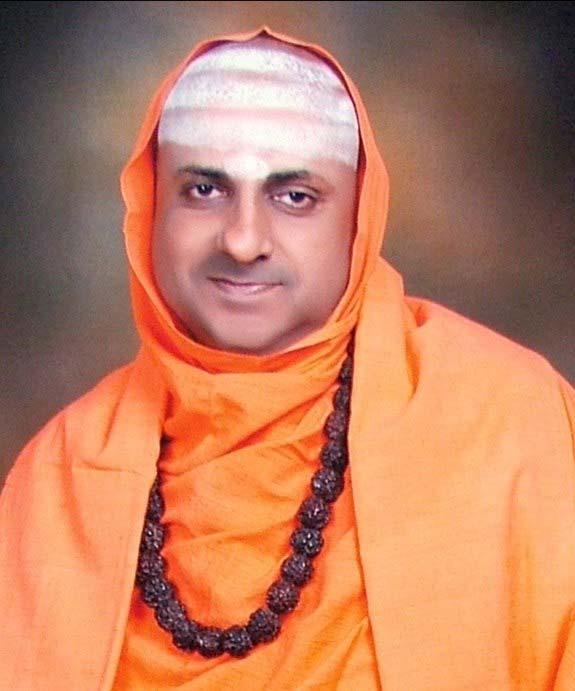
neurosurgical microscope, a state-ofthe-art robotic imaging system. This tool supports minimally invasive neurosurgery with improved visualization, greater safety margins, and shorter operative times.
JSS Academy of Higher Education and Research (JSSAHER), Mysuru, has recently strengthened its global and industry collaborations through a series of high-impact partnerships aimed at fostering innovation and research excellence. Its new strategic tie-up with L&T Technology Services focuses on developing advanced engineering and digital solutions, offering students real-world exposure to industry challenges. In the healthcare domain, JSSAHER’s recent partnership with Google is pioneering AI-driven healthcare initiatives, combining data science with clinical expertise to enhance diagnostics and patient care.
Another collaboration with the Bangalore Bioinnovation Centre of the Government of Karnataka further expands opportunities in biotechnology and life sciences, promoting startup incubation and translational research. Adding to its international reach, JSSAHER has joined hands with the University of Wolverhampton, UK, to facilitate academic exchange, joint research, and dual-degree programs. Together, these alliances underscore JSSAHER’s commitment to blending academia, industry, and global innovation for
impactful learning and societal progress.
Events at JSS AHER are more than ceremonies, they are occasions that reflect institutional culture, values, and aspirations. The ceremonies also highlight inclusivity, with women consistently among leading achievers. These events provide emotional resonance, reinforcement of identity, and motivation for future students, reminding everyone that JSS AHER is not just about degrees, but legacy and impact.
JSS AHER’s academic heartbeat can be felt strongly in its research culture. The institution regularly hosts Research Conclaves, one of the most
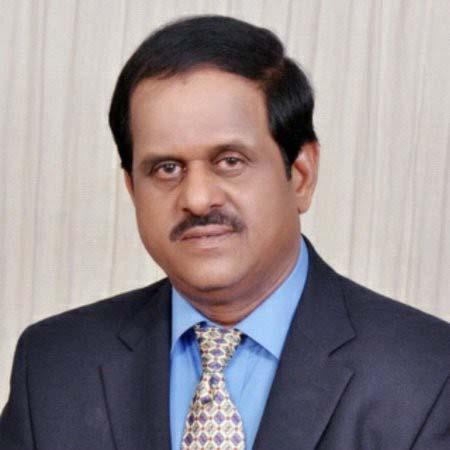

prominent and recent ones being held in Ooty, bringing together faculty, students, and external scholars for

interdisciplinary exchange. Presentations, panel discussions, poster sessions, and collaborative networking fostered cross-pollination of ideas.
These conclaves are complemented by departmental symposia, guest lectures, and workshops in life sciences, public health, biotechnology, and clinical disciplines. Support from national funding agencies such as the DBT, CSIR, and ICMR, along with international partnerships, accelerates research momentum.
Beyond infrastructure and funding, thought leadership is also visible in public discourse. Senior leaders from JSS AHER have participated in forums on the future of education, the role of artificial intelligence, and societal needs. In one widely noted discussion, Dr. CG Betsurmath, with
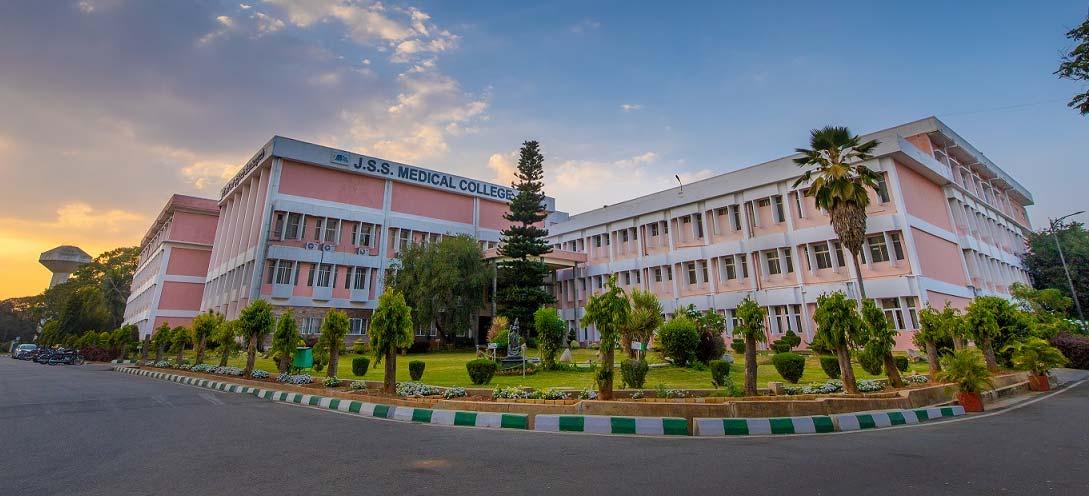
Vice Chancellor Dr. H Basavana Gowdappa and Registrar Dr. B Manjunatha, emphasized that AI will not replace human roles but demand adaptability and continuous upskilling. This messaging underscores the institution’s positioning as forward-looking yet human-centric.
True to its ethos, JSS AHER continues to ground itself in social missions. Community health camps, rural outreach programmes, and awareness initiatives in public health, noncommunicable disease screening, and health education continue to expand. For instance, its departments like Community Medicine regularly organize wellness campaigns that bridge academic learning with social service.
These efforts do more than serve communities, as they also enrich student learning, inform policyrelevant research, and strengthen institutional legitimacy. They also help JSS AHER’s performance in ‘outreach and inclusivity’ metrics used by national and global ranking frameworks. Its strong showing in THE Impact Rankings, especially in SDG 7 (Affordable and Clean Energy) where it achieved global 2nd rank, reflects a sustained alignment between academic output and realworld impact.

Looking forward, the underconstruction Varuna Global Campus is among JSS AHER’s boldest ventures. Envisioned to span over 100 acres, this campus is expected to host thousands of students, research scholars, incubation units, and advanced academic programs in digital health, biomedical engineering, hospital management, and allied sciences.
By situating education, research, innovation, and healthcare delivery in one integrated ecosystem, the Varuna campus aims to transcend the traditional boundaries of academia. Start-ups and incubators in healthtech, translational medicine, and regulatory policy labs are expected to coexist alongside classrooms and hospitals.
This expansion is not just
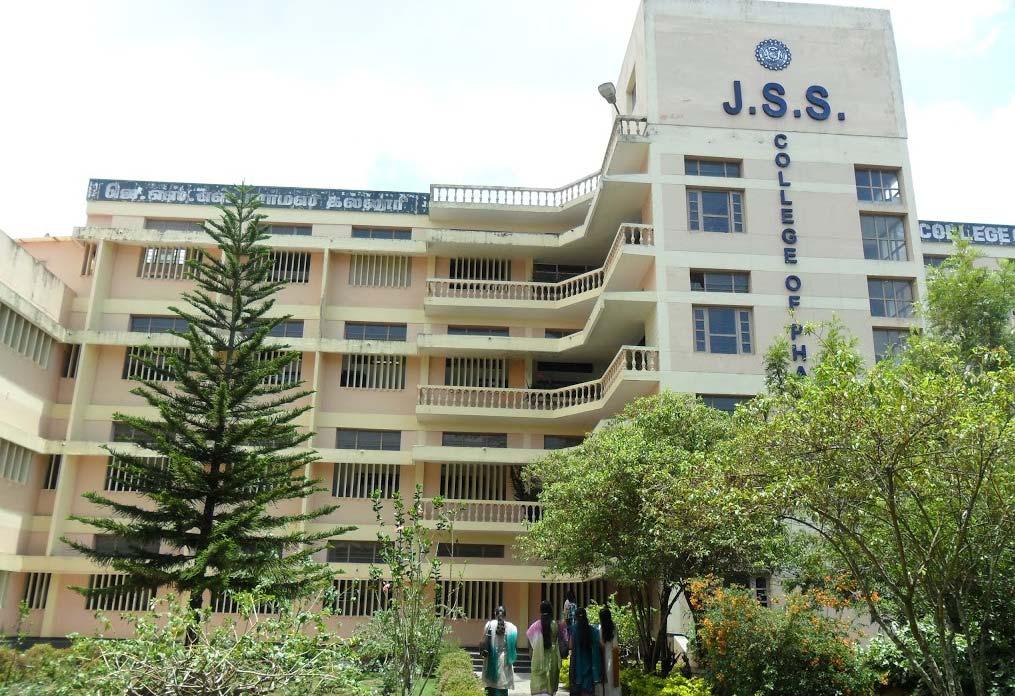
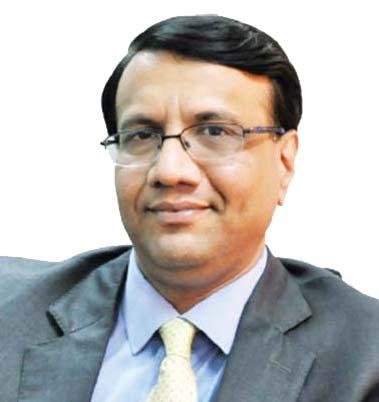
infrastructural, but strategic. It underscores JSS AHER’s intention to become a global node of excellence, attracting top talent, forging international collaborations, and influencing healthcare education norms, not just regionally, but globally.
JSS AHER today stands as a multidimensional institution: university, hospital, research hub, and social engine. The steps it has taken, like achieving higher national rankings, upgrading clinical infrastructure, fostering research ecosystems, and planning ambitious expansions, are not isolated moves, but highly calibrated patterns of growth.
Under the spiritual vision of Chancellor His Holiness Jagadguru Sri Shivarathri Deshikendra Mahaswamiji and the innovative vision of Pro Chancellor Dr. B Suresh, the university has combined continuity and innovation. Its 2025 NIRF performance, especially in specialty colleges such as medicine, dental sciences, and pharmacy, is a public affirmation of that vision.
As JSS AHER readies the Varuna campus, deepens global partnerships, and continues to invest in both infrastructure and human capital, it carries forward a legacy of healing, inquiry, and social commitment. The institution is not merely preparing graduates but shaping ethical professionals, responsive researchers, and leaders who will carry forward not just the name of JSS, but its mission of transforming communities through knowledge and service.
WITH COURAGE, PASSION, AND CONFIDENCE, A PERSON CAN ACHIEVE ANYTHING. IAS OFFICER VARUN BARANWAL IS A LIVING EXAMPLE OF THIS. HAILING FROM THE SMALL TOWN OF BOISAR IN MAHARASHTRA, BARANWAL ONCE RAN A PUNCTURE SHOP TO EARN A LIVING FOR HIMSELF AND HIS FAMILY. BUT THROUGH HIS HARD WORK AND PASSION, HE HAS BECOME AN IAS OFFICER.
Varun Baranwal’s father repaired bicycles, which provided for their daily bread and butter. However, his untimely death in 2006 left the family facing a financial crisis. This responsibility fell on Baranwal’s shoulders and he had to take over his father’s bicycle repair shop for a living. He passed the 10th grade, securing second place in the city. However, instead of enrolling in Intermediate for further studies, Baranwal spent his days and nights repairing bicycle punctures. Although he wanted to continue his education after the 10th grade, financial constraints prevented him from pursuing Intermediate.
However, seeing his dedication, an acquaintance, Dr. Kampli, secured his college admission. Thus, Baranwal was able to resume his studies. “I never spent a single rupee on my studies. Someone or the other paid for my books, forms, and fees. My doctor paid my initial fees, but after that, I was worried about how I would pay the monthly school fees,” he said.
Baranwal initially sought admission to medical college after completing his 12th grade. However, due to the high fees, he decided to switch to engineering. He was accepted into MIT College in Pune. Struggling to pay his college fees, he attended classes during the day, and repaired bicycles in the evenings, as well as provided tuition. Remarkably, he topped his first semester of engineering. Following this achievement, the college awarded him a scholarship.

After completing his engineering studies, he secured a job with a multinational company. While his family wanted him to stay with the MNC, he aspired to take the Civil Services exam. Eventually, an NGO came to his aid, providing him with the necessary books. In 2016, he successfully qualified for the IAS, achieving an all-India rank of 32.
Varun Baranwal’s inspiring journey from modest beginnings to becoming an IAS officer highlights the transformative power of perseverance, passion, and unwavering belief. Despite financial challenges and personal sacrifices, his indomitable spirit and commitment to education have made him a shining example for aspiring civil servants and those facing adversity.
(Credit: News18)
However, seeing his dedication, an acquaintance, Dr. Kampli, secured his college admission. Thus, Baranwal was able to resume his studies. “I never spent a single rupee on my studies. Someone or the other paid for my books, forms, and fees. My doctor paid my initial fees, but after that, I was worried about how I would pay the monthly school fees.

TURNING 50 IS OFTEN A TIME FOR REFLECTION, AND FOR PURAVANKARA LTD., ONE OF INDIA’S LEADING LISTED REAL ESTATE DEVELOPERS, IT’S ALSO A MOMENT OF REITERATING ITS FOREVER COMMITMENTS. PRESENT NOW ACROSS 9 CITIES, WITH 51 MILLION SQ FT DELIVERED, AND WITH 80,000+ HAPPY FAMILIES AS CUSTOMERS, PURVA HAS COME A LONG WAY FROM 1975. AS THE COMPANY MARKS ITS GOLDEN JUBILEE IN 2025, PURAVANKARA IS NOT JUST BASKING IN HALF A CENTURY OF BUILDING DREAMS, BUT LAUNCHING BOLD PROJECTS WORTH TENS OF THOUSANDS OF CRORES, DRIVING INNOVATION IN JOINT DEVELOPMENTS ACROSS MAJOR METROS, AND LEVERAGING A 15 MILLION SQ FT LAUNCH PIPELINE TO KEEP RIVALS ON THEIR TOES. AMIDST MAJOR REDEVELOPMENTS IN MUMBAI, BLOCKBUSTER LAUNCHES IN KOCHI, AND ROBUST SALES MOMENTUM IN BENGALURU, THE LEADERSHIP TEAM LED BY FOUNDER & CHAIRMAN RAVI PURAVANKARA AND MD ASHISH PURAVANKARA, IS STEERING THIS MOST ENDURING REAL ESTATE BRAND INTO AN ERA BRIMMING WITH AMBITION AND PROMISE.


It has been a season of celebration for Puravankara Ltd. - the company traces its roots back to 1975 - as its golden jubilee year coincides with some of the most defining moments in its storied journey. Marking 50 years isn’t merely a retrospective exercise for this Bengaluru headquartered realty giant; it’s about showcasing how a legacy of
upcoming Mumbai and Pune projects now spanning 14 million sq ft and expected to deliver a staggering Rs 18,000 crore in gross development value, with Rs 7,700 crore from redevelopment alone.
In Bengaluru, Puravankara has cemented its leadership with strategic land deals and joint ventures, headlined by the recent Rs 1,000 crore joint


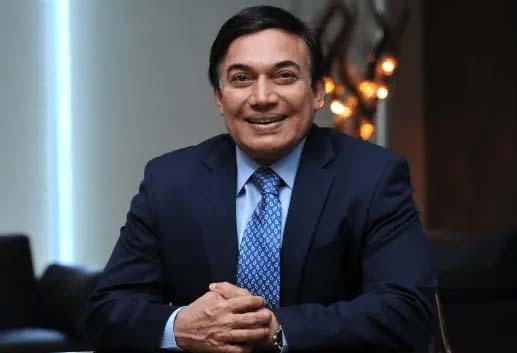


These deals add fresh muscle to Puravankara’s expanding 15 million sq ft launch pipeline, around two-thirds of which are slated for the country’s maximal growth markets and premium locations.
trust can be translated into bold expansion and relentless ambition. Alongside nostalgic commemorations, Puravankara has electrified the real estate sector with a trailblazing Rs 2,100 crore redevelopment of eight housing societies in Mumbai’s Chembur, a project that will unlock over 1.2 million sq ft of premium residential real estate on a coveted four-acre plot. The Chembur initiative is emblematic of Puravankara’s determined push into Western India redevelopment - the company has recently secured marquee sites at Breach Candy, Lokhandwala, and Pali Hill, with ongoing and
development agreement in East Bengaluru’s Balagere. This 5.5-acre project will bring to market 0.83 million sq ft of high-end residences within the next few months, an unmistakable signal of Puravankara’s confidence in the region’s highpowered IT-linked housing demand.
The company’s futuristic approach is further seen in its Rs 3,300 crore joint venture with KVN Property Holdings LLP for a 24.59-acre site in North Bengaluru’s Hardware Park, expected to offer 3.48 million sq ft of saleable space, tapping into a major planned infrastructure and the airport corridor.
Apart from its megaprojects in Mumbai and Bengaluru, Puravankara has also made waves with a striking new launch in Kochi. Coming up along Marine Drive, the Kochi project boasts swish amenities, spacious layouts, and a prestigious address - setting new standards for Kerala’s luxury housing segment. With the Kochi launch feeding directly into Puravankara’s 15 million sq ft pipeline, the company is determinedly positioning itself for leadership in tier-1 and emerging metros alike.
Amid this expansion, Puravankara’s Q1 FY26 business update offers a snapshot

of solid financial health. The company notched a 6% year-on-year growth in pre-sales, raking in Rs 1,124 crore for the quarter. Even without new launches, average price realization climbed an impressive 9%, reflecting robust demand and successful premiumization strategies. Customer collections hit Rs 857 crore, ensuring liquidity and execution momentum even as market headwinds persisted.
This reilience comes after a challenging period spanning Q3, Q4 and much of FY25, as Puravankara faced sectoral volatility, input cost surges, and selective project delays. Despite these setbacks, FY25’s overall tally told a story of recovery and resurgence. Presales had surged to Rs 5,006 crore on a record 5.67 million sq ft of sales volume, with quarterly pre-sales in Q4 reaching Rs 1,282 crore and annual revenue crossing Rs 2,090 crore. The company attributes this rebound to disciplined land acquisition, an unwavering focus on Western markets, and deft capital allocation.
Key subsidiaries have also played a significant role in this resurgence. Starworth Infrastructure &
Puravankara’s construction arm, recently bagged a Rs 272 crore order for a major Bengaluru project, a proof to the group’s integrated infrastructure capabilities and its growing appeal as an end-to-end urban solutions provider.
Provident Housing, its affordable housing vertical under the stewardship of Executive Director Amanda Joy Puravankara, continues to turn heads with strong pre-sales and a slew of value-focused launches. Amanda’s strategic direction at Provident highlights Puravankara’s seriousness about affordable and mid-income segments, which are critical levers for both growth and social impact as urbanization accelerates.
Brand Purva directly is also present in the affordable segment, with a recent proof being the high-profile pre-launch of Lakevista at Purva Windmere in Chennai, aimed at the aspirational middle class.
The engine driving these audacious moves is Puravankara’s robust leadership matrix. Founder & Chairman Ravi Puravankara’s vision has been complemented by the strategic agility
of Managing Director Ashish Puravankara. The company’s Twin CEO approach - dividing leadership responsibilities across West and South India as well as residential and commercial sectors - has helped create regional and sectoral specializations, faster execution, and sharper focus on micro-market nuances.
As Puravankara looks ahead to the remainder of its jubilee year and beyond, the path appears lined with promise and challenges. The company’s outsized project pipeline, new joint ventures, and sector-defining launches point to a group with the scale and intent to reshape Indian residential real estate.
If Puravankara continues to execute effectively despite a complex regulatory framework, input cost pressures, and rapidly evolving buyer preferences, Puravankara’s golden narrative will keep shining bright. As it celebrates 50 years, the company stands as both a symbol of heritage and innovation possible in India’s realty future, which is ever-evolving, ever-ambitious, and in no mood to slow down.
GOOGLE LLC’S DEEPMIND RESEARCH UNIT TODAY ANNOUNCED A MAJOR UPDATE TO A COUPLE OF ITS ARTIFICIAL INTELLIGENCE MODELS, WHICH ARE DESIGNED TO MAKE ROBOTS MORE INTELLIGENT. WITH THE UPDATE, INTELLIGENT ROBOTS CAN NOW PERFORM MORE COMPLEX, MULTISTEP TASKS AND EVEN SEARCH THE WEB FOR INFORMATION TO AID IN THEIR ENDEAVORS.

The newly released models include Gemini Robotics 1.5, which drives the robots, and Gemini Robotics-ER 1.5, which is an embodied reasoning model that helps them to think.
DeepMind originally released these models in March, but at the time they were only capable of performing singular tasks, such as unzipping a bag or folding a piece of paper. But now they can do a lot more. For instance, they can separate clothes in a laundry basket by light and dark colors, and they can pack a suitcase for someone, choosing clothes that are suitable for the predicted weather conditions in London or New York, DeepMind said. For the latter task they’ll need to search the web for the latest weather forecast. They can also search the web for information they need to perform other tasks, such as sorting out the recyclables in a trash basket, based on the guidelines of whatever location they’re in.
In a blog post, DeepMind Head of
Robotics Carolina Parada said the models will help developers to build “more capable and versatile robots” that actively understand their environments.
In a press briefing, Parada added that the two models work in tandem with each other, giving robots the ability to think multiple steps ahead before they start taking actions. “The models up to now were able to do really well at doing one instruction at a time in a way that is very general,” she said. “With this update, we’re now moving from one instruction to actually genuine understanding and problem-solving for physical tasks.”
Gemini Robotics 1.5 and Gemini Robotics-ER 1.5 are known as “visionlanguage-action” or VLA models, but they’re designed to do different things. The former transforms visual information and instructions into motor commands that enable robots to perform tasks. It thinks before it takes actions, and shows this thinking
process, which helps robots to assess and complete complex tasks in the most efficient way.
As for Gemini Robotics-ER 1.5, this is designed to reason about the physical environment it’s operating in. It has the ability to use digital tools such as a web browser, and then create detailed, multi-step plans on how to fulfill a specific task or mission. Once it has a plan ready, it passes it on to Gemini Robotics 1.5 to carry it out.
Parada said the models can also “learn” from each other, even if they’re configured to run on different robots. In tests, DeepMind found that tasks only assigned to the ALOHA2 robot, which has two mechanical arms, could later be performed just as well by the bi-arm Franka robot and Apptronik’s humanoid robot Apollo.
“This enables two things for us,” Parada said. “One is to control very different robots, including a humanoid, with a single model. And secondly, skills that are learned on one robot can now be transferred to another robot.”
Google said Gemini Robotics-ER 1.5 is being made available to any developer that wants to experiment with it through the Gemini application programming interface in Google AI Studio, which is a platform for building and fine-tuning AI models and integrating them with applications. Developers can read this resource to get started with building robotic AI applications.
Gemini Robotics 1.5 is more exclusive, and is only being made available to “select partners” at this time, Parada said.
SEASONAL MAGAZINE
As India aspires to become a major maritime hub, Cochin Shipyard Limited (CSL) stands at the center of that ambition. A PSU under the Ministry of Ports, Shipping, and Waterways, CSL is India’s largest shipbuilding and ship-repair facility. But as with any large public-sector enterprise navigating high-growth waters, the journey of CSL is anything but a straight sail. However, Cochin Shipyard is overcoming all its challenges, one by one, under the visionary leadership of its Chairman & Managing Director Madhu S Nair, one among India’s most qualified and most experienced ship building engineers.

CSL’s recent performance and strategic tie-ups reveal a complex picture of promise, pressure, and potential challenges. With strong topline growth, high-profile international collaborations, and a robust order book, the fundamentals are impressive. However, profitability stress, valuation concerns, and an overdependence on geopolitical uncertainty for outperformance pose challenges on the horizon.
Cochin Shipyard Limited (CSL), under the dynamic leadership of Chairman & Managing Director Madhu S. Nair, kicked off FY26 with a standout Q1 performance, further cementing its stature as India’s premier shipbuilding and ship-repair enterprise. Revenue for the quarter surged 38.5% year-on-year to Rs 1,068 crore, powered by robust execution of shipbuilding and ship repair contracts as well as deliveries of technologically advanced vessels.
Operating efficiency continued, reflected in a healthy EBITDA performance.The EBITDA for June 2025 quarter was Rs. 296 crores and EBIDTA margin was 28%. EBITDA for the June 2024 quarter was 261 crores and EBITDA Margin was 34%.
Net profit for Q1 stood at Rs 188 crore, up a modest 8% year-on-year despite the cost escalations, showing margin restraint but resilient bottom-line
delivery. Segmental revenues detail strong contributions from ship repairs at Rs 630 crore and shipbuilding at Rs 439 crore, highlighting the benefits of a diversified business model.
CSL’s balance sheet remains robust with low net debt, and its order book stands at an impressive Rs 21,100 crore, backed by a forward pipeline nearing Rs 2.85 lakh crore. Strategic partnerships inked this quarter with global industry leaders, capacity upgrades at dry dock and repair facilities, and expansion into advanced ship types are expected to unlock new growth horizons. Madhu S. Nair’s strageic leadership continues driving technology upgrades, international forays, and operational excellence. With a robust order book and projects in the pipelinee, CSL has secured revenue visibility for years ahead. This includes defence mega-projects like next-generation corvettes, frigates, and civilian orders like bollard pull tugs and luxury cruise ships for the Brahmaputra River. The newly signed order with Polestar Maritime for two high-powered tugs alone is worth Rs 250 crore. Earlier, for the full fiscal of FY25, Cochin Shipyard’s revenue had climbed 26% to Rs 4,820 crore. This is a significant jump for a capital-intensive business and reaffirms CSL’s execution capability amidst a recovering global maritime ecosystem.
Cochin Shipyard, which shot into limelight by building India’s first indigenous aircraft carrier INS Vikrant, continues to pursue such unique projects. Around 40% work is complete on what is billed to be India’s largest and most advanced dredger, being built in collaboration with the Netherlandsbased Royal IHC.
However, CSL is part of the broader defence index, which can be volatile especially in face of geopolitical deescalation. Defence stocks, including CSL, tend to rally in times of global conflict or rising tensions and correct sharply when peace prospects emerge. This dependency creates a cyclical narrative, where investor sentiment is
often influenced more by global news headlines.
Perhaps the biggest feather in CSL’s cap is its July 2025 MoU with South Korea’s HD Korea Shipbuilding & Offshore Engineering (KSOE), a Hyundai group company. This partnership includes joint shipbuilding initiatives, technology transfer, workforce upskilling, and infrastructure upgrades, which make this a strategic collaboration that could dramatically elevate CSL’s global competitiveness.
Although CSL has aggressive expansion plans, execution remains key. PSU enterprises often grapple with slower decision-making, labour issues, and tender-based bureaucracies that can delay project timelines.
CSL’s R&D investments are forwardlooking, from battery-electric “green tugs” to hydrogen-fuel-cell ferries and autonomous surface vessels. The company has also floated a tender for connecting a 500 kWp solar plant to support sustainable operations. In an era where ESG compliance matters,
these initiatives bolster CSL’s positioning as a modern, responsible shipbuilder.
The shipyard has also entered into multiple MoUs, notably with Dubai’s Drydocks World, to build world-class ship repair and fabrication hubs. These moves are expected to enhance CSL’s topline and diversify its clientele beyond Indian defence forces.
For long-term investors betting on India’s maritime rise, CSL offers a compelling narrative, with strong government support, world-class collaborations, and a diversified order book. Its past work on India’s first aircraft carrier INS Vikrant lends it credibility in complex defence builds.
Madhu S Nair Chairman & Managing Director
Cochin Shipyard is going through a pivotal phase. It has the orders, partners, and political support to become a global force in shipbuilding. Under CMD Madhu S Nair’s guidance, CSL is turning this promise into performance, step by step, by tightening margins, executing better, and broadening its vision beyond defence. If the global growth momentum remains in its favor, CSL and its investors are destined to reach greater shores.
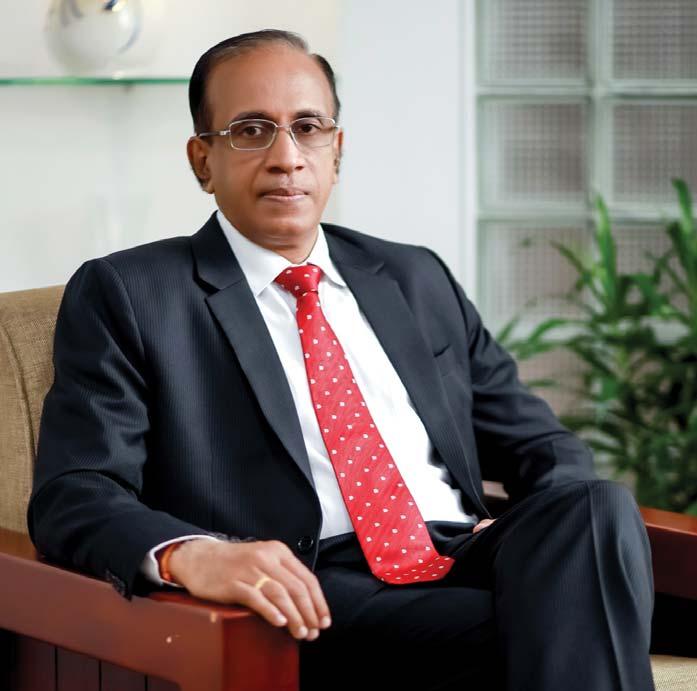
IN THE VIBRANT HEART OF HYDERABAD STANDS THE ICFAI FOUNDATION FOR HIGHER EDUCATION (IFHE), A DEEMED-TO-BE-UNIVERSITY THAT IS REDEFINING THE CONTOURS OF MODERN HIGHER EDUCATION IN INDIA. RECOGNIZED BY THE UNIVERSITY GRANTS COMMISSION (UGC) AS A CATEGORY-I INSTITUTION AND ACCREDITED WITH AN A++ GRADE BY NAAC, IFHE HAS EMERGED AS A POWERHOUSE OF INNOVATION, ACADEMIC EXCELLENCE, AND INDUSTRY-READY EDUCATION. WITH A SPECTRUM OF CONSTITUENT SCHOOLS, INCLUDING THE RENOWNED ICFAI BUSINESS SCHOOL (IBS), ICFAITECH, ICFAI LAW SCHOOL, ICFAI SCHOOL OF ARCHITECTURE (ISARCH), AND THE ICFAI SCHOOL OF SOCIAL SCIENCES (ISOSS), THE UNIVERSITY IS SCULPTING FUTURE-READY PROFESSIONALS WHO ARE GLOBALLY COMPETENT AND SOCIALLY CONSCIOUS.
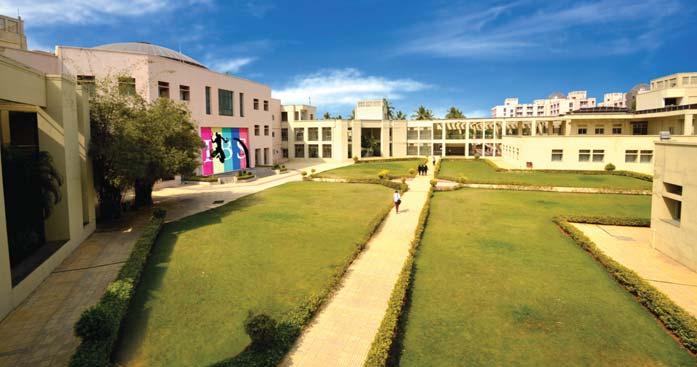
t the helm of this academic renaissance is Dr. C. Rangarajan, one of India’s most distinguished economists, serving as the Chancellor of The ICFAI Foundation for Higher Education. His intellectual legacy and governance philosophy continue to shape IFHE’s policies and vision. Under Vice Chancellor Prof. LS Ganesh, IFHE has diversified its offerings, digitized delivery systems, and strengthened its research capabilities.
The leadership team also includes, Prof. K S Venu Gopal Rao, Director of ICFAI Business School (IBS), who steered the school to renewed AACSB reaccreditation in 2025, and Prof. KL Narayana, Director of IcfaiTech, who promotes innovation-driven technical education.
Other key leaders at IFHE include Prof.
Law School, who leads the blending of legal theory with practice; Prof. Ar. Munavar Pasha Mohammad, leading ISArch with global design thinking; and Prof. Dr. C. S. Shylajan, directing ISoSS into new realms of social science research.
Few metrics are as telling of an institution’s success as its placement record. IFHE’s 2024 placement season turned out to be a resounding success across its schools, showcasing its strong industry connect and the relevance of its curriculum.
At IBS Hyderabad, 94% of the MBA students have secured placements. Over 170 top corporates - including Deloitte, Google, EY, Amazon, KPMG, PwC, and TCS – regularly participate in the campus selections.
IcfaiTech, the Faculty of Science and
Technology, also recorded strong numbers, with engineering graduates placed in top firms like Cognizant, HCL, Accenture, Capgemini, Mahindra, and Amazon, illustrating the School’s effectiveness in preparing students for real-world challenges.
Admissions at IFHE are rigorous, transparent, and inclusive. For ICFAI Business School, the national-level IBSAT entrance test forms the gateway to admission, recently updated to replace traditional group discussions with micro presentations, reflecting a forward-thinking shift towards evaluating holistic communication and thought clarity.
At the undergraduate level, IcfaiTech and ISArch admit students through various national and institutional entrance tests. The Law and Social Sciences Schools also attract diverse talent from across the country, maintaining academic diversity and interdisciplinary engagement at their core.
In line with global trends and the digital transformation of education, IFHE offers fully online MBA and BBA programsideal for working professionals and students seeking flexibility without compromising on quality. These programs provide 24/7 access through a mobile-friendly Learning Management System (LMS), offer practical components like entrepreneurship practicums and internships, and cover a comprehensive curriculum that balances academic theory with industry relevance.
The online MBA, in particular, caters to graduates looking to upskill and transition into leadership roles. Meanwhile, the online BBA acts as a foundation for younger aspirants targeting careers in business, finance, and marketing.
Innovation thrives at IFHE - not just within labs and classrooms, but as a vibrant entrepreneurial culture. The ICFAI Incubator’s recent MoU with THub Foundation is a case in point. The partnership aims to support tech-driven
student startups through mentorship, infrastructure sharing, and investor networks.
Importantly, startups can now be part of students’ mandatory internships, allowing academic research to be transformed into viable commercial ventures. T-Hub, which stands for Technology Hub, is promoted by Telangana Government and several key institutions, and is home to over 2000 startups that have raised nearly $2 billion so far.
This approach helps students gain credit while building real-world solutions, fulfilling IFHE’s mission to bridge the gap between academia and industry and nurture a new generation of socially responsible entrepreneurs.
Research and policy dialogue are key pillars at IFHE. A two-day international conference recently hosted by ICFAI Law School, titled ‘Navigating the Future of Environmental Governance’, drew participation from legal experts, academics, and sustainability leaders. Emphasizing the integration of legal frameworks and finance in environmental policy, the conference illustrated IFHE’s commitment to shaping future-ready public leaders and legal scholars.
One of the standout additions to IFHE’s academic portfolio is its interdisciplinary PhD in Development Studies and Public Policy, a unique offering in India. Designed for working professionals, this program emphasizes empirical research, data analytics, and qualitative methodologies. It aims to create thought leaders capable of designing and implementing development policies based on realworld data.
“This program is a game-changer in how we train public policy professionals,” says Dr. Sushanta Kumar Mahapatra, Associate Professor at ISoSS and a recipient of the NJ Yasaswy Best Teacher Award. His expertise and accolades underscore the caliber of faculty spearheading this new academic frontier.
A university’s true strength lies in its faculty, and IFHE boasts some of the most respected academic minds in the country. While Dr. Sushanta Kumar Mahapatra received the NJ Yasaswy Best Teacher Award for excellence in teaching, research, and industry engagement, IFHE’s administrative
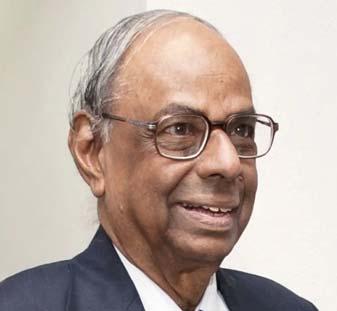
Dr. C. Rangarajan, Chancellor
leaders too have won accolades. Accreditation is the benchmark of quality, and IFHE stands tall with an ‘A++’ grade from NAAC and recognition as a Category-I institution by the UGC. IBS Hyderabad is among the select 24 institutions in India accredited by AACSB (Association to Advance Collegiate Schools of Business International) - placing it in elite global company with fewer than 6% of business schools worldwide holding this distinction.
Across 68 countries and territories, AACSB has accredited only 1,051 institutions with only 24 b-schools in India being accredited. by the AACSB. Recently, ICFAI Business School (IBS), Hyderabad, secured re-accreditation from AACSB in May 2025. IBS had received the first accreditation from AACSB in March 2020, when the peer review team, which visited IBS Hyderabad, assessed the school on nine distinct standards and granted the initial accreditation.
On the remarkable achievement of reaccreditation, IBS Director Prof. KS Venu Gopal Rao said the School successfully received an extension of its AACSB accreditation for a period of six years after a positive recommendation from the peer review team and ratification by the AACSB Board of Directors.
This accreditation extension is strong proof of the strength of IBS across the academic processes, quality

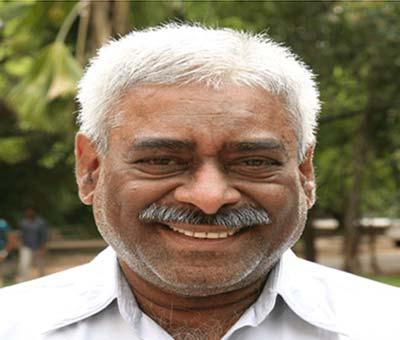
management programmes, societal impact, sustainability principles, faculty research and community engagement.
In the 2024 NIRF Rankings, IFHE’s flagship ICFAI Business School was ranked 39 in the Management category. These achievements are not just badges of honor - they validate IFHE’s holistic academic model that combines teaching excellence, research output, and industry relevance.
Education is not just about degrees - it’s about nurturing responsible, aware, and healthy young citizens. IFHE’s ‘Niramaya Tarang’ anti-narcotics initiative, launched in January 2025, is an inspiring example. With a powerful logo symbolizing wellness and positive ripple effects, this initiative includes awareness campaigns, street plays, workshops, and collaborative programs to combat drug abuse on campus.
“The initiative is part of our broader mission to provide a safe and healthy educational ecosystem,” says Dr. S. Vijayalakshmi, IFHE’s Registrar. The student-led Nukkad Natak performances have become particularly impactful, creating awareness through art and storytelling.
With its commitment to academic excellence, inclusive access, and nation-building, IFHE is more than just a university, but a mission to secure the futures of its students. It is creating a diverse community of future business leaders, engineers, lawyers, architects, policymakers, and researchers who are ready to take on the world.
As the education sector in India undergoes seismic shifts driven by AI, global mobility, and digital transformation, IFHE stands at the vanguard, by innovating, evolving, and inspiring. With a growing alumni worldwide, strong industry linkages, and a growing global reputation, IFHE is poised to play a pivotal role in shaping India’s knowledge economy.
WITH REVENUES AROUND RS 7,000 CRORE AND PROFIT AROUND RS 1,500 CRORE, MICRO LABS IS AMONG THE LARGEST PRIVATELY HELD INDIAN PHARMA FIRMS. UNDER THE VISIONARY LEADERSHIP OF CMD DILIP SURANA AND DIRECTOR ANAND SURANA, THE DOLO-650 MAKER IS EXTENDING THIS FLAGSHIP BRAND TO OTC WELLNESS, EVEN WHILE TAKING OVER PROMISING PHARMA FIRMS OVERSEAS, STRENGTHENING ITS PRESENCE ACROSS 50 COUNTRIES, AND FORTIFYING ITS LEADERSHIP IN RESPIRATORY, DIABETIC, PAIN MANAGEMENT & OPHTHALMOLOGY.
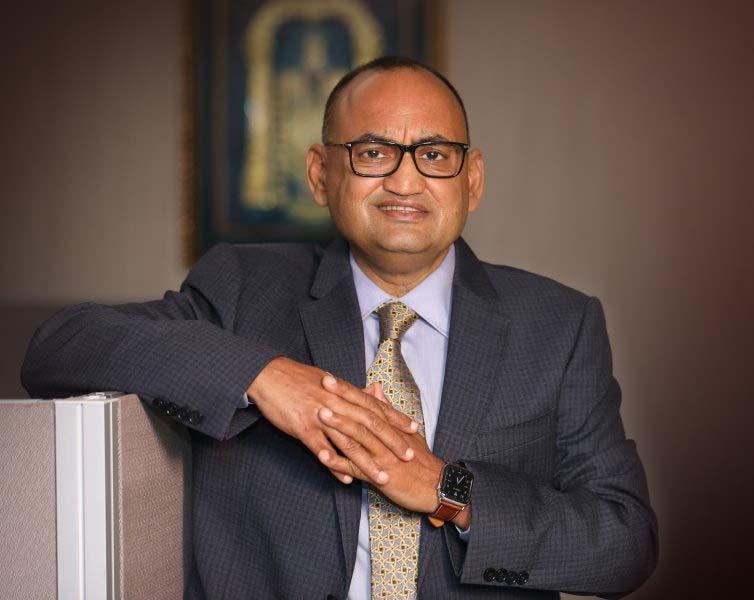
Micro Labs is already present in over 50 countries with on-theground operations in 25, exporting a wide range of products across various therapeutic areas. Their presence in countries like the USA, UK, Russia, Ukraine, and various Asian and African nations further solidifies their global ambitions.
Micro Labs’ success story is intertwined with the vision and strategic direction of its apex leadership. CMD Dilip Surana, a driving force since joining the family business in 1983, has steered the

Dilip Surana

company toward both domestic market leadership and a growing international presence. His commitment to instilling stringent quality standards has earned Micro Labs international regulatory approvals from bodies like US FDA, UK MHRA, and Australian TGA.
This dedication to excellence was recently recognized when Tumkur University conferred upon him an Honorary Doctorate, as an acknowledgment of his unwavering commitment to professional excellence, community upliftment and societal impact. This prestigious recognition, awarded during the university’s 18th Convocation on July 8, 2025, reflects his contributions beyond the realm of business. He is joined in leadership by Director Anand Surana and Head of Strategy Diya Surana, who, through initiatives like Micro Wellness, are actively shaping the company’s future, balancing growth with innovation and social responsibility.
One of the most notable recent shifts is Micro Labs’ expanded focus on its
wellness segment, leveraging the trust earned through the Dolo brand. This initiative, named ‘Micro Wellness,’ sees the company launching a range of OTC products under the Dolo name, such as Dolo pain relief spray, Dolosils Cough Lozenges, and Dolo Fevometer.
According to Diya Surana, Head of Strategy, Digital Transformation, and OTC Wellness at Micro Labs, this is a strategic move to meet the growing demand for lifestyle solutions, complementing the company’s existing focus on chronic disease therapies. This expansion into wellness underscores a broader trend in the pharmaceutical industry, of addressing not just illness but also preventative care and holistic well-being.
Micro Labs is not content to dominate only the domestic market. Their recent acquisition of Swiss Pharma Nigeria Limited (Swipha) highlights a clear strategy to deepen their presence on the African continent. Swipha, founded in 1976, specializes in branded generics across key therapeutic areas, including central nervous system, anti-malaria,
SEASONAL MAGAZINE

anti-infectives, cardiovascular, antidiabetic, and nutraceuticals. This acquisition, along with their existing subsidiary Micro Nova Pharmaceutical Ind. Ltd in Nigeria, demonstrates Micro Labs’ long-term vision to expand its global footprint.
Innovation remains a cornerstone of Micro Labs’ operations. The introduction of Trisopt, the world’s first triple drug fixed-dose combination for glaucoma management, showcases their commitment to developing novel solutions for unmet medical needs. This indigenous development, manufactured at their Sikkim facility, underscores their investment in research and development and ability to deliver cutting-edge treatments.

Earlier, in September 2024, Micro Labs had launched Linapride DM, an affordable treatment for diabetes in India. Given the staggering number of individuals affected by diabetes in India, this launch reflects their commitment to making essential medications accessible, particularly for those who may need multiple medications to manage the disease.
A cornerstone of Micro Labs’ enduring success has been its focus on quality Active Pharmaceutical Ingredients (APIs). The company has consistently invested in backward integration and world-class API manufacturing facilities, ensuring reliable supply chains and uncompromised product quality. Reflecting on this, CMD Dilip Surana said: “For us, quality is not negotiable. Our investment in building strong API capabilities has been central to our growth story—helping us maintain global standards, win the trust of healthcare professionals, and deliver affordable, effective medicines to millions of patients.”
Micro Labs has demonstrated consistent financial performance, with revenues growing steadily and operating margins remaining stable. Their strong financial risk profile, including low gearing and healthy cash accrual, positions them well for future growth. The firm is also investing in expanding their manufacturing capabilities, with plans
for expanded annual capex and evaluation of inorganic growth opportunities.
Predominantly a prescription drug company, Micro Labs is also aggressively pursuing the marketing route for its OTC segment, committing to a 360-degree marketing approach that combines traditional, digital, and consumer engagement strategies. Diya Surana explained: “The Dolo brand has built immense trust among consumers. With Micro Wellness, we are taking this trust forward through a 360-degree marketing strategy that reaches people across touchpoints—whether it’s doctors, pharmacies, or directly through consumers. We believe wellness is not just about treatment but about building a healthier lifestyle, and we want our communication to reflect that vision.”
Micro Labs is proving that it is a dynamic pharmaceutical company that is actively evolving to meet the demands of a changing healthcare landscape. By expanding its product offerings into wellness, strategically acquiring companies to bolster its global presence, investing in research and development, and maintaining a strong financial position while engaging in social responsibility, Micro Labs appears poised for continued growth and innovation in the years to come, under Dilip Surana’s entrepreneurial acumen.
Once upon a time, Dolo nce upon a Dolo nce upon a time, Dolo nce upon a Dolo nce upon a time, Dolo broke into the most broke into the most broke into the most broke into the most most overcrowded paracetamol overcrowded paracetamol overcrowded paracetamol overcrowded paracetamol overcrowded paracetamol market on a simple market on a market on a simple market on a premise - superior effectiveness. premise - effectiveness. premise - superior effectiveness. premise - effectiveness. While everyone else including MNC giants were content offering giants were content a 500 mg dosage, which was a 500 which was which clearly ineffective for the new clearly ineffective for the ineffective for generation of viral fevers, Dilip generation of fevers, Surana delivered 150 mg more mg more Surana delivered 150 mg more mg more which made all the difference - made all thefor patients as well as the patients as well as the for patients as well as the patients as well as the for patients as well as the prescribing doctors. In hindsight, prescribing doctors. In hindsight, prescribing doctors. In hindsight, prescribing doctors. In hindsight, any brand could have done it, brand any brand could have done it, brand any brand could have done it, but no one did it in time. Can the no one in time. Can but no one did it in time. Can the no one in time. Can but no one did it in time. Can the Suranas do such a unique do such a unique do strategy again, this time in again, time Wellness?
The house of Dolo has quietly built a second growth engine in consumer wellness, and 2025 is the year it starts to hum. Under a newly structured Micro Wellness umbrella, the company is extending its trusted Rx equities into an over-the-counter (OTC) portfolio aimed at everyday ailments: sore throats, acidity, aches and pains, and habit support.
The logic is simple - leverage a household name like Dolo, meet a widening demand for self-care, and win the pharmacy counter with familiar branding and fast relief. As Diya Surana, Head of Strategy, Digital Transformation and OTC Wellness, put it, the wellness push “aligns with the growing demand for lifestyle solutions,” complementing Micro Labs’ chronic-care base.
The Micro Wellness Division already has three aces up its sleeve. Dolosils


Lozenges targets the cough-and-throat segment with a classic antiseptic duoamylmetacresol and dichlorobenzyl alcohol - positioned for quick sootheand-go relief - in an accessible bridge from prescription cough brands to an OTC offering.
The next ace, Gastrium Suspension extends the company into the highvelocity gastro aisle, treating acidity, reflux and indigestion, which is one of India’s most shopped OTC subcategories. Rounding out pain and mobility, Dolo Ultra pain-relief gel taps the mother brand’s equity to address muscle and joint discomfort with a quick-absorbing, non-greasy topical cream. These products are already available on major e-pharmacies, marking a national rollout.
Strategically, Micro Labs is executing a de-risked house-of-brands approach anchored in Dolo’s recognition. The playbook is to migrate select legacy Rx equities to consumer formats like sprays,

gels, lozenges, suspensions etc, keeping a pricing aimed for the mass-premium segment, and building fast moving brands that pharmacists can recommend on autopilot.
Micro Wellness is likely to have a phased pipeline - Dolosils, Gastrium and Dolo Ultra among the near-term rollouts, followed by extensions such as Dolo pain-relief spray and a consumer thermometer, Dolo Fevometer. Expect pharmacies to have a cohesive OTC aisle block under the Dolo banner soon.
The Suranas’ strategy is to add lifestyleled categories that grow faster than the prescription market. Beyond the initial trio of products, Micro Wellness has signaled a nicotine-replacement gum (Nicobyt) and other self-care lines, pointing to a broader everyday-health franchise strategy with shopper marketing and behavior-change campaigns like “Quitting is Winning.”
The commercial upside is promising to say the least. India’s OTC consumerhealth market in vitamins/supplements and gastro is among the country’s largest and most impulse-driven pharmacy baskets. Micro Labs’ own commentary and media coverage reveal a calculated move to capture that velocity. The company benefits from a formidable distribution backbone and prescriber trust built over decades, advantages that can mean the difference between a market leader and the also-rans.
But the categories Micro Labs is entering now are overcrowded, dominated by advertising-heavy players. Winning will require distinctive claims grounded in speed of relief, clinician credibility, and precise retail execution or in other words visibility at the chemist counter. Still, the brand math is compelling; if Dolosils becomes the go-to sore-throat lozenge, Gastrium the everyday antacid, and Dolo Ultra the first choice pain gel, Micro Labs can convert Dolo’s prescription fame into a sticky consumer habit. With Diya Surana helming Overall Strategy as well as OTC Wellness, the company’s foray looks less like a detour and more like an inevitable twin engine of growth.
In a strategic move blending In a strategic blending In a strategic move blending In a strategic blending sports and wellness, Micro sports wellness, sports wellness, Wellness, the over-the-counter Wellness, the over-the-counter Wellness, the over-the-counter Wellness, the over-the-counter over-the-counter division of Micro Labs, has division of Micro Labs, has partnered with the UP Yoddhas partnered the UP Yoddhas UP as the team’s official pain relief as team’s official pain relief as the team’s official pain relief as team’s official pain relief team’s pain partner for Pro Kabaddi League partner Pro Kabaddi League partner for Pro Kabaddi League partner Pro Kabaddi League partner for Pro Kabaddi League Season 12. This collaboration Season 12. This Season 12. highlights Micro Labs’ dedication highlights Micro Labs’ dedication Labs’ to connecting with consumers to to connecting with consumers to to connecting with consumers through popular sporting through popular sporting through popular sporting through popular sporting sporting platforms. The decision reflects platforms. The decision reflects reflects the vision of its CMD Dilip the vision its CMD the vision of its CMD Dilip the vision its CMD vision its Surana, who sees the partnership Surana, who sees Surana, who sees the partnership Surana, who sees as a way to build consumer trust as a to build consumer build in the brand’s wellness products. in brand’s wellness products. in the brand’s wellness products. in brand’s wellness products. According to Diya Surana, Head According Diya Surana, Head According to Diya Surana, Head According Diya Surana, Head According to Diya Surana, Head of Strategy and Digital Initiatives, of and this partnership is also a natural this is also a extension of the company’s long- extension of the company’s extension of the company’s long- extension of the company’s extension of the company’s longstanding support for Indian standing support for Indian standing support for Indian standing support for Indian for sports, aligning with their goal to sports, aligning with their goal to engage with today’s health- engage today’s health- engage with today’s health- engage today’s healthhealthconscious audiences. conscious audiences.
Micro Wellness, the over-the-counter (OTC) division of Micro Labs, announced its partnership with UP Yoddhas for Season 12 of the Pro Kabaddi League (PKL), during the team’s jersey launch event in Visakhapatnam, and marked a significant step in Micro Wellness’ strategy to connect with consumers through India’s most popular sporting platforms. The new season of PKL kicked off on National Sports Day,


August 29, 2025, in Visakhapatnam, with a grand opening ceremony graced by icons such as Pullela Gopichand, Dhanraj Pillay, Pardeep Narwal, and Vaibhav Suryavanshi. The UP Yoddhas, under new captain Sumit Sangwan, began their campaign on a high note with a victory against Telugu Titans on August 30, 2025.
As part of this association, DOLO from Micro Labs has been named the official pain relief partner of UP Yoddhas. Leveraging the high-energy and physically demanding nature of kabaddi, this partnership reinforces the brand’s positioning as a trusted solution for quick and effective pain relief - both on and off the mat.
UP Yoddhas have had an impressive start to the Pro Kabaddi League Season 12, showcasing a blend of brilliant attack and defensive solidity. They started the season on a high, securing an impressive victory against Patna Pirates after they trounced Telugu Titans. The team’s raiding unit, led by the dynamic Gagan Gowda, has been a major positive, with Gowda consistently delivering Super 10s and leading the league in bonus points. On the defensive front, captain Sumit Sangwan has been a rock, leading the team’s tackle points. As they enter the next leg of the season, the Yoddhas will be thirsting to display more balance and consistency to climb the ranks and make a strong push for the playoffs.
Speaking on the partnership, Diya Surana, Head of Strategy and Digital Initiatives at Micro Labs, said: “Micro has been a big supporter of sports in India. Through our CSR programs, we have consistently extended sponsorships to budding sportspersons, especially those from rural areas, schools, and colleges, who go on to represent India at national and international levels. This association with UP Yoddhas was a natural extension of our commitment to Indian sports, while also helping us connect with today’s health-conscious consumers through a dynamic platform like kabaddi.”
The wellness segment in India represents a substantial multi-billion-dollar opportunity. The India health and wellness market is estimated at USD 156.0 billion in 2024 and is projected to reach USD 256.9 billion by 2033, growing at a compound annual growth rate (CAGR) of approximately 5.3% between 2025 and 2033.
Commenting on this, Dilip Surana, CMD, Micro Labs, said: “The OTC and wellness market in India is on a strong growth trajectory, with demand accelerating in both metros and smaller towns. Our strategy is to build trusted brands that consumers can rely on for everyday wellness needs, and partnerships like this create meaningful visibility and engagement. Kabaddi, with its pan-India appeal, provided the perfect stage to take our wellness message forward.”

n Q1 FY26, Avanti Feeds Limited, led by its Chairman & MD Indra Kumar, showcased significant resilience and growth despite persistent margin pressures in its core feed business. Revenue for the quarter climbed to Rs 1,606 crore, up 6.64% year-on-year, buoyed largely by booming processed shrimp exports which offset weaker domestic sales in the feed segment. EBITDA improvement stemmed from operational efficiency and cost rationalisation, which helped contain the impact of rising input prices. Net profit surged to over Rs 185 crore, marking a 34.8% rise as gains in export volumes and prices outpaced the challenges in feed segment margins and currency fluctuations. No significant debt-related concerns were disclosed, with the business model relying primarily on manufacturing and exports, based on a traditionally strong and clean balance sheet. Key issues during the quarter were volatility in raw material costs and heightened competition from international suppliers, but Indra Kumar’s leadership ensured strategic procurement, expansion into higher-margin export markets, and ongoing quality innovations. By strengthening farmer relationships and focusing on technologydriven supply chains, Avanti Feeds has weathered industry pressures efficiently. The company remains committed to sustainable aquaculture growth, product diversification, and market expansion, with a positive outlook for leveraging its leadership and capabilities in a fluctuating global environment.
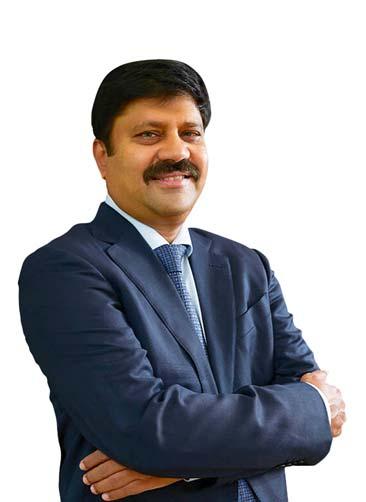

U Small Finance Bank, under the steady leadership of its Founder, MD & CEO Sanjay Agarwal, delivered a robust revenue growth in Q1 FY26 despite some challenges in its asset quality metrics. The bank’s revenue expanded by 21% year-on-year to Rs 5,189 crore, illustrating continued traction in retail lending and deposits as branch expansions and enhanced product mix gathered pace. EBITDA growth remained strong, supported by ongoing digitalisation and efficient cost management that buffered against increased operational expenditures. Net profit for the period rose by 15.6% to INR 580.9 crore, outpacing market forecasts and demonstrating the sustainable earnings power of AU’s expanding portfolio. The quarter did, however, reveal a sequential rise in gross nonperforming assets to Rs 2,751.3 crore, nudging the GNPA ratio up to 2.47%, a sign that some customer segments continue to feel macro pressures. Debt ratios were contained through prudent risk management, though the bank faces persistent challenges from tightening margins and elevated credit costs. Facing these hurdles head-on, Sanjay Agarwal and his team have doubled down on digital banking initiatives, customer engagement, and product innovation. The bank’s resilience flows from a leadership team focused on risk mitigation, operational discipline, and nurturing customer trust, ensuring AU Small Finance Bank stays agile in turbulent markets. Looking forward, the bank intends to strengthen its retail and MSME portfolios and ramp up technology investments, all of which are expected to deliver sustainable growth and profitability in the coming quarters. AU SFB has also obtained an inprinciple approval for universal banking licence, which also bodes well for the lender.

Bank of Baroda, led by its MD & CEO Dr. Debadatta Chand, reported a resilient Q1 FY26 performance marked by revenue growth and operational stability, even as profit headwinds persisted. The bank registered a consolidated revenue of Rs 38,404 crore, representing a 7.27% increase year-on-year, as domestic and international deposits saw singledigit expansion reflecting continued customer trust. EBITDA remained steady, with operational efficiency initiatives offsetting much of the cost pressures from inflation and network expansion. However, consolidated profit after tax slipped by 26.62% to Rs 3,469 crore due to rising interest costs and a 1.4% decline in net interest income, primarily attributable to exceptional items involving tax refunds. Asset quality was kept in check, with GNPAs contained and effective risk management cushioning against macroeconomic uncertainty. Debt ratios improved slightly, underpinned by disciplined capital allocation. The bank’s challenges included softer loan demand, competitive pressures, and ongoing regulatory changes that weighed on profitability. Dr. Debadatta Chand’s leadership focused on digital innovation, strategic branch rationalisation, and renewed attention to MSME and retail segments, helping the bank adapt to shifting market conditions and regulatory landscapes. Moving ahead, Bank of Baroda is poised to benefit from its strategic pivots, technology investment, and sector expertise, signalling an optimistic outlook for its growth journey in FY26.
Bank of Maharashtra, under MD & CEO AS Nidhu Saxena, reported another quarter of robust growth in Q1 FY26, with profit after tax rising 22.3% year-on-year to Rs 1,593 crore. Revenue reached Rs 7,879 crore, marking a 16.4% uptick as steady growth in advances and deposits continued. EBITDA for the quarter stood at Rs 5,465 crore, reflecting healthy operating performance and efficient cost management. EPS improved to Rs 2.00, up from Rs 1.80 in the same quarter last year, signifying resource optimization and improved profitability. The bank maintained strong asset quality, with its gross NPA ratio improving to 1.74% and net NPA declining slightly to 0.18%, both among the lowest in the sector. Credit risk and potential bad debts have been managed effectively, as evidenced by reduced provisions and contingencies year-over-year. Elevated costs remain a challenge, with total expenses growing by nearly 19% compared to last year, primarily due to expansion and operational activity. Despite these pressures, MD & CEO Nidhu Saxena has focused on digital initiatives, process automation, and branch network expansion, positioning the bank for strong future growth. The leadership’s direction toward expanding the retail and agricultural portfolio, coupled with prudent risk containment, continues to drive Bank of Maharashtra’s success. The outlook remains positive with steady earnings momentum and innovation, creating confidence that the bank will continue to outperform its peers.

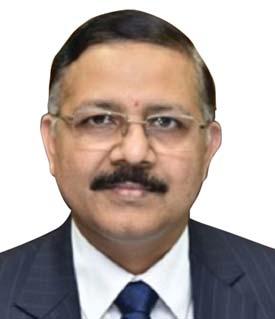
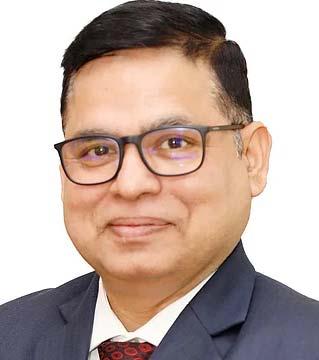
Central Bank of India, under the leadership of its outgoing MD & CEO MV Rao, posted a robust Q1 FY26 with strong profit growth and enhanced asset quality. Net profit surged 32.84% year-on-year to Rs 1,169 crore, driven by solid advances, deposit gains, and effective cost controls. The bank’s total business expanded 10.84% to Rs 7,04,485 crore, with total deposits increasing 11.41% to Rs 4,28,890 crore, supported by a rising CASA ratio of 46.88% indicating cheaper funds. Gross advances grew by 9.97% to Rs 2,75,595 crore, reflecting Central Bank’s strengthened retail, agricultural, and MSME lending focus. EBITDA and operating profits improved alongside treasury gains and operational efficiencies. The bank made noteworthy progress on asset quality, with gross NPA ratio improving marginally to 3.13% from previous quarters and net NPA dipping to 0.49%, reflecting the management’s commitment to rigorous risk assessment and recoveries. Capital adequacy ratio stood solid at 17.66%, signifying a strong capital position. MV Rao attributed these results to the bank’s diversified loan portfolio combined with digitization and customer-centric initiatives, which helped navigate economic volatility. Challenges remain in sustaining growth momentum amid competitive pressures and macro uncertainties, but with a strategic focus on retail expansion and balanced assetliability management, Central Bank is poised for continued performance improvement under its incoming MD & CEO Kalyan Kumar. The leadership, currently led by its Executive Directors, maintains an optimistic outlook for FY26 with a disciplined approach to risk, technology adoption, and market expansion underpinning the bank’s future trajectory.

Federal Bank, led by MD & CEO KVS Manian, delivered healthy results in Q1 FY26 as profitability felt the impact of rising provisions while core business continued to grow steadily. The bank posted a standalone net profit of Rs 861.75 crore, down 14.6% year-onyear, largely due to a sharp increase in provisions for bad loans concentrated in the agri microfinance segment. Net interest income rose 2% to Rs 2,337 crore, supported by growth in retail and commercial lending, with total advances growing over 9% and deposits up 8% over the year prior. The bank’s CASA base expanded 12% year-on-year, showing improving deposit quality and funding cost management. Gross non-performing assets (GNPA) rose slightly to 1.91%, mainly influenced by the stressed agricultural microfinance portfolio; net NPA edged up to 0.48%, reflecting controlled deterioration amid provisioning efforts. Operating income increased 7.6%, buoyed by the highestever other income at Rs 1,113 crore driven by fee income and treasury gains. KVS Manian emphasized the diversified business model, strong recovery in fee income, and strategic focus on maintaining asset quality as key to overcoming the current sectoral stress. Despite margin pressures and provisions, ongoing investments in technology and customer service, particularly in gold loans, credit cards, and commercial banking, position Federal Bank for gradual recovery and sustainable long-term growth. The outlook remains cautiously optimistic with management targeting normalizing slippages and continued business expansion in FY26.
ven while news has surfaced recently that Deutsche Bank’s India Unit is up for sale, Swadeshi Banking remains strong as ever, and the best example is Tamil Nadu headquartered traditional private sector bank, City Union Bank. It recently celebrated its 120th anniversary, which is also a matchless tribute to Swadeshi Banking. The event was attended by Smt. Droupadi Murmu, Honorable President of India, Sri RN Ravi, Honorable Governor of Tamil Nadu, Smt. Nirmala Sitharaman, Honorable Union Minister of Finance & Corporate Affairs, and Smt. P Geetha Jeevan, Honorable Minister for Social Welfare & Women Empowerment of Tamil Nadu, among other dignitaries. Despite its traditional roots, CUB as it is often called, has been an innovator in tech-led banking. Under MD & CEO Dr N Kamakodi’s leadership, the bank recently posted a strong Q1 FY26 performance marked by 16% growth in net profit to Rs 305 crore from Rs 264 crore in the previous year. Interest income climbed 16% to Rs 1,605 crore, supported by 20% growth in deposits to Rs 65,734 crore and 16% rise in advances to Rs 54,020 crore, showing healthy business expansion across retail and SME segments. Net interest income grew accordingly by 15%, with the net interest margin stable at 3.54%, reflecting balanced deposit
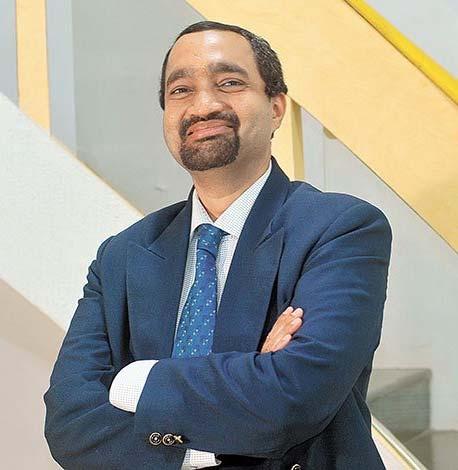
pricing and credit yields. Operating expenses increased 15% to Rs 418 crore, in line with business growth and investments in infrastructure and technology. Operating profit rose 21% to Rs 451 crore, bolstered by higher fee income and treasury gains. Asset quality remained stable; gross NPA decreased to Rs 1,617 crore, with the gross NPA ratio improving to 2.99% from 3.88%, while net NPA ratios fell to 1.20%, reflecting tight credit control and recovery efforts. Dr Kamakodi’s leadership emphasized digital banking expansion, process optimization, and deepening of customer relationships, which contributed to improved operational efficiency and resilience. Despite macroeconomic uncertainties, City Union Bank is optimistic about maintaining solid growth, enhancing profitability, and further improving asset quality over the coming quarters, backed by strategic initiatives and prudent risk management.

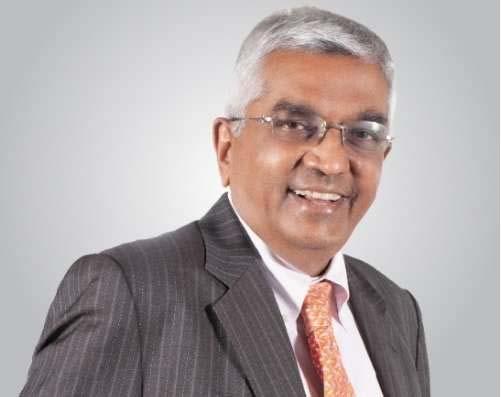
Brigade Enterprises, led by its Executive Chairman MR Jaishankar, began FY26 on a strong note, with its residential business driving a robust 18.9% year-on-year revenue increase to Rs 1,281 crore in Q1. Net profit surged 95% versus last year to Rs 158 crore, buoyed by new launches and strong sales across Bengaluru, Chennai, and Hyderabad. EBITDA for the quarter reached Rs 103 crore, a 10% year-on-year improvement, supported by expansion in the office segment and higher sales realization per square foot. Sales bookings rose to Rs 1,118 crore, despite a drop in sales volumes, as realisation per square foot climbed 24% to Rs 11,782, reflecting resilient demand in the housing market. However, there were headwinds, like the quarter-over-quarter revenue and profit declines due to seasonal factors and delayed launches. Shankar’s leadership has focused on pipeline expansion and land bank growth, enabling Brigade to capitalize on strategic opportunities and offset market fluctuations. Other challenges included rising costs and competition from new entrants, but the firm’s diversified project portfolio and strong foothold in South India continue to bolster its performance. The future outlook remains optimistic as Brigade Enterprises ramps up launches in residential and commercial segments, further leveraging its expertise and market reputation to sustain momentum through FY26.
CSB Bank, steered by its MD & CEO Pralay Mondal, logged a steady Q1 FY26 despite headwinds from technology migration costs and margin pressure. The Thrissur-based bank saw net profit rise of 5% year-on-year to Rs 118 crore, reflecting solid growth in advances and deposits amid a challenging macroeconomic environment. Total deposits surged 20% to Rs 35,935 crore, while net advances expanded robustly by 31% to Rs 32,552 crore, largely boosted by a 36% jump in gold loans. Net interest income demonstrated a modest 5% increase to Rs 379 crore, although net interest margin compressed to 3.54% from last year’s 4.36%, impacted by elevated deposit costs and competitive pressures. The quarter featured a major transformational milestone with the bank successfully completing its Core Banking System (CBS) migration and rollout of more than 50 surround systems, aimed at enhancing operational capabilities and customer experience. Gross NPAs were slightly higher at 1.84%, with net NPAs marginally lower at 0.66%, reflecting prudent risk management despite sectorwide asset quality concerns. Costs rose due to the tech overhaul and increased operational efforts, but prioritizing stabilization and performance enhancement remains paramount for the leadership. Pralay Mondal emphasized the bank’s cautious yet scalable growth strategy, particularly in gold loans, SME, and wholesale segments, ensuring resilience in an evolving financial landscape. The outlook for CSB Bank is positive, with ambitions to restore margins to around 4% by fiscal year-end while consolidating advances and deposits growth. Focused investments in tech and customer-centric initiatives position CSB Bank well to capitalize on opportunities ahead.

Garden Reach Shipbuilders & Engineers (GRSE), under Chairman & MD Commander PR Hari, IN (Retd), kicked off FY26 with impressive financial results reflecting sharp growth in revenues and profitability. The Kolkatabased defence shipbuilder reported total income of Rs 1,382 crore for Q1 FY26, a 28% increase yearon-year, driven by heightened execution of naval and coast guard projects. Revenue from operations rose 30% to Rs 1,310 crore, supported by the maturing stages of several production programs and expedited deliveries. EBITDA improved strongly by 42% to Rs 184 crore, underpinning enhanced operational efficiencies and effective cost control. Profit before tax surged 45% to Rs 167 crore, while profit after tax grew 38% to Rs 120 crore, highlighting the company’s improving bottom-line health and sustained financial discipline. EPS rose to Rs 10.49 versus Rs 7.61 in the prior year period. CMDE Hari noted that the strong start to FY26 lends confidence toward maintaining growth momentum, with a robust project pipeline and strategic investments in R&D and capacity expansion. While challenges remain in raw material sourcing and project timelines, GRSE’s leadership has effectively navigated these through prioritizing advanced manufacturing techniques and closer client collaboration. This positions GRSE well for continued scale-up in defence shipbuilding, tapping into both domestic and export opportunities in the coming years.
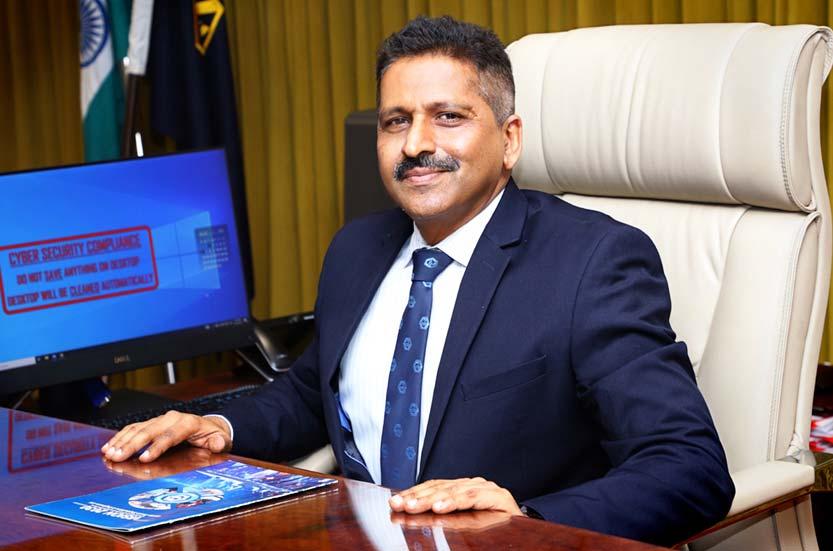
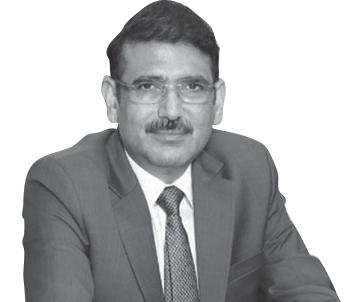
Indian Railway Finance Corporation (IRFC), led by Chairman and MD Manoj Kumar Dubey, delivered its strongest-ever Q1 FY26 results, solidifying its crucial role as India’s premier railway financier. Total revenue rose 2.2% year-onyear to Rs 6,918 crore, reflecting continued growth in loan disbursements to the Indian Railways and an expanding funding portfolio. Net profit for the quarter jumped 11% to Rs 1,746 crore, up from Rs 1,577 crore last year, driven by robust operational efficiency and a steady rise in interest income. IRFC’s Net Interest Margin improved to 1.51%, marking progress in capital allocation and cost control despite a challenging interest rate environment. The company sanctioned new projects worth Rs 25,000 crore and disbursed Rs 3,000 crore, with an ambitious target to sanction Rs 60,000 crore and disburse Rs 30,000 crore for the full fiscal year. IRFC is now pursuing a strategy dubbed ‘IRFC 2.0’ focused on expanding its client base beyond Indian Railways to related ecosystem entities and aiming to cross Rs 5 lakh crore in assets under management by FY27. The balance sheet remains robust, with no reported NPAs, and IRFC continues to maintain strong investment-grade ratings. CMD Dubey’s leadership has prioritized diversification into higher-margin segments and cautious risk management, ensuring IRFC sustains profitability while supporting India’s massive infrastructure expansion goals. The company’s ability to navigate interest rate volatility and inflation pressures highlights its systems and financial discipline. With its strategic growth framework, IRFC is well-positioned to remain a cornerstone in national railway financing, capitalizing on increased capex and government support in the coming years.
Embassy Developments Ltd (EDL) has reported a mixed performance in its Q1 FY26 results, with strong revenue momentum tempered by profit pressures. Consolidated revenue rose by 39% year-on-year to Rs 680.92 crore, reflecting the scaling up of residential and commercial projects after the company’s merger with Indiabulls Real Estate. Chairman Jitu Virwani, who took charge of the unified entity earlier this year, has set a decisive tone for the business, steering it with a blend of long-term vision and pragmatic expansion. The company has also laid out ambitious targets for FY26, aiming to deliver Rs 22,000 crore in Gross Development Value, of which a large portion will come from the residential segment. This forward-looking strategy suggests confidence in India’s real estate growth story and in Embassy’s ability to capture market share. However, profitability remains an area of concern. Operating profit for the quarter stood at Rs 173.55 crore, down nearly 60% compared with the previous quarter and modestly lower than the same period last year. Profit Before Tax came in at a negative Rs 164.80 crore, despite improving by more than 100% year-on-year, highlighting the volatility inherent in the post-merger transition. And bottomline slipped to a loss of Rs 165.85 crore, largely attributed to integration costs and front-loaded investments in new projects. Despite these challenges, the overall narrative is one of cautious optimism. Embassy’s sharp revenue growth and bold expansion targets provide a strong foundation, while its leadership under realty veteran Jitu Virwani signals steady guidance through a period of transition.
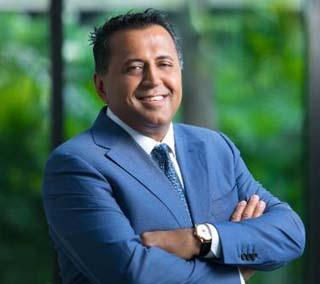
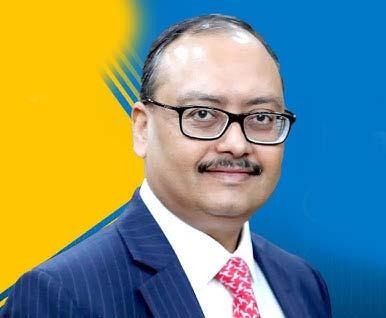
Bank of India, helmed by MD & CEO Rajneesh Karnatak, posted a solid performance in Q1 FY26, highlighted by a 32% year-on-year jump in net profit to Rs 2,252 crore. The quarter showcased strong growth in global advances, which rose by 12%, driven by a 20% surge in retail loans and 17% growth in MSME lending. Deposits kept pace, rising 9.07% year-on-year, as the bank’s strategies in the retail and MSME spaces showed results. EBITDA and operating profit climbed 9% to Rs 4,009 crore, buoyed by broad-based improvement in business volumes and healthy non-interest income. However, net interest income contracted by 3.3%, reflecting margin pressures amid rising deposit costs and slower credit repricing. The bank made significant strides in asset quality, with its gross NPA ratio declining to 2.92%, indicative of enhanced credit discipline and targeted recoveries. The capital adequacy ratio improved, standing strong at 17.39%. Despite a softer NII, the overall profitability was supported by treasury gains, improved asset quality, and cost discipline. Major challenges remain around sustaining margins and driving consistent deposit growth in a competitive banking landscape. Rajneesh Karnatak’s hands-on leadership is evident in the bank’s investments in digitization, recovery initiatives, and sharper focus on retail and MSME segments, helping Bank of India overcome regulatory and market headwinds. With a strategic outlook, Bank of India aims to increase advances by 12–13% and deposits by 10–11% in FY26, showcasing confidence in its ability to deliver on growth targets despite short-term pressures.
Keystone Realtors, led by its Chairman & MD Boman R Irani, faced a challenging Q1 FY26 with net profit down 36.3% year-on-year to Rs 16.33 crore from Rs 25.65 crore in Q1 FY25. Revenue slipped 34% to Rs 288.64 crore due to lower project completions and deferred revenue recognition, even as operational expenses decreased 32% year-onyear to Rs 270.73 crore. EBITDA for the quarter dipped to Rs 29 crore from Rs 58.2 crore last year, reflecting reduced throughput and high upfront costs for new launches. Despite this, the business showed resilience in sales performance with pre-sales jumping 75% yearon-year to Rs 1,068 crore, and collections rising to Rs 575 crore, a 19% increase year-on-year. Three new projects launched in Q1 FY26 brought a gross development value (GDV) of Rs 3,967 crore, achieving 57% of full-year guidance and surpassing last year’s launch value by over 2x. Additionally, the company added cluster redevelopment and luxury projects in the high-value Mumbai Metropolitan Region, pushing total business development for the quarter to a GDV of Rs 7,727 crore, which is over 1.25 times its annual guidance. CMD Boman R Irani Irani attributes the profit dip mainly to deferred revenue from ongoing projects; with income recognition occuring only upon delivery under prevailing accounting norms. Gross debt stood at Rs 304 crore with a debt-to-equity ratio of 0.11, while net debt remains nil, underscoring continued financial discipline. With a healthy balance sheet, asset-light model, and strong new pipeline, Keystone expects a rebound in earnings as new projects begin generating revenue in H2 FY26, sustaining an optimistic mediumterm outlook.
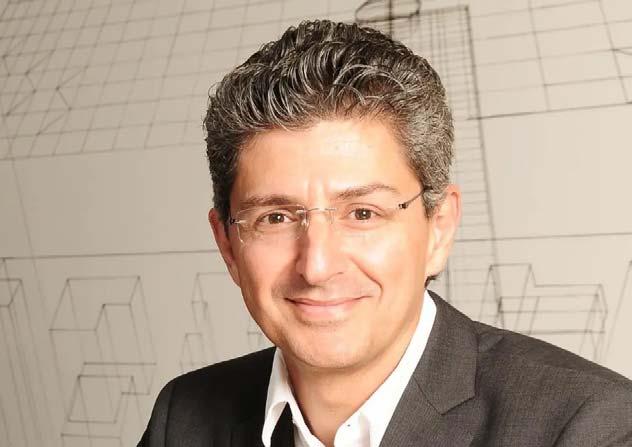

Jyothy Labs, led by MD & CEO MR Jyothy, reported a subdued Q1 FY26 with modest revenue growth balanced by margin compression and profit decline. The company posted revenue from operations of Rs 751 crore, a 1.35% increase year-on-year, supported by stable performance across its core categories of fabric care, dishwashing, and personal care. Profit after tax for the quarter fell 4.95% to Rs 96.8 crore, reflecting pressure from higher raw material costs and elevated advertising expenditure as the company sought to maintain its market presence. EBITDA was impacted by inflationary input prices, and total expenses rose alongside expanded marketing investments aimed at boosting volume growth and defending market share. Segment-level performance remained mixed, with fabric care showing resilience but home care and dishwashing battling subdued demand in some regions. Share price volatility persisted, with Jyothy Labs’ stock declining over the past twelve months as broader consumer sector sentiment softened. MR Jyothy’s leadership continues to emphasize brand-building, operational efficiencies, and product innovation to offset commodity cost headwinds. The sale of the company’s stake in Jyothy Kallol Bangladesh Limited resulted in a onetime loss, adding to quarterly profit pressures. With no critical debt issues, the business retains flexibility to pursue long-term growth investments and expansion of distribution. The outlook remains cautiously optimistic, as Jyothy Labs invests in new product launches and supply chain enhancements to drive future shareholder value in a competitive FMCG landscape.
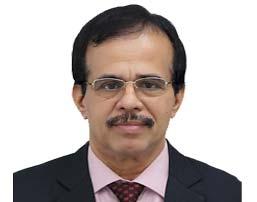
Karnataka Bank’s Q1 FY26 reflected a mixed performance, with profitability down but operational resilience improving. The bank has a new MD & CEO in Raghavendra S Bhat, who joined post Q1, and is a former veteran of Karnataka Bank itself who had retired as its Chief Operating Officer earlier. Net profit for the quarter fell 27% year-on-year to Rs 292 crore, primarily due to lower treasury earnings and higher provisions. Aggregate deposits increased 3% to Rs 1,03,242 crore, while aggregate business grew marginally to Rs 1,77,509 crore. Gross advances stood at Rs 74,267 crore, representing a slight dip versus last year, as cautious lending and risk containment took precedence. Net interest income was Rs 756 crore, supported by stable core margins and prudent credit deployment. Gross NPAs improved to 3.46% from 3.54% last year, and net NPAs declined to 1.44% from 1.66%, marking progress in asset quality and recovery initiatives. EBITDA and operating profit remained steady despite inflation and cost pressures.
Raghavendra S Bhat highlighted investments in infrastructure and digital processes made last fiscal year as foundational for future growth and efficiency, promising improved results as these investments mature. Major challenges remain around achieving higher loan growth and expanding low-cost deposits in a competitive market. Under its new MD & CEO Raghavendra S Bhat’s guidance, Karnataka Bank continues to prioritize retail, agriculture, and MSME lending while driving process innovation. With disciplined risk management and enhanced digital capability, the bank is confident of a stronger operational showing over the next few quarters, with a renewed focus on profitability and growth.
EI Industries, led by Chairman and Managing Director Anil Gupta, registered robust results in Q1 FY26, reflecting its ongoing expansion and leadership in the cables and wires sector. The company posted a stellar 25.44% year-on-year revenue growth, reaching Rs 2,590.32 crore, benefiting from 32% growth in the core cables and wires segment and solid export momentum, with export revenue advancing by 61% for the quarter. EBITDA rose 28% to Rs 297.63 crore, with EBITDA margin improving to 11.49% compared to 11.25% last year, driven by operational efficiencies and higher sales volumes. Net profit jumped 30.28% year-on-year to Rs 195.75 crore, and PAT margin expanded to 7.56%, demonstrating healthy conversion of sales into bottomline. KEI’s domestic institutional cable sales grew 24%, while distribution network of B2C sales increased 22% yearon-year, reflecting robust demand from both industrial projects and retail markets. Operating expenses, however, tracked higher in line with revenue growth as material and employee costs were up, while the EPC projects segment saw a significant decline of 56% amid the company’s increased strategic focus on core product lines. CMD Anil Gupta highlighted the commissioning of Phase 1 of its major Sanand manufacturing facility, which is set to boost capacity and address anticipated demand surges, especially in EHV cables and exports by FY27. KEI countered competitive pressure by expanding its dealer base to over 2,094 active channels and streamlined supply chain operations. KEI maintains a strong order book of Rs 3,921 crore and projects a revenue CAGR of 20% over the next two to three years post the Sanand expansion. With its diversified order book, strategic investments, and broadening market footprint, KEI Industries remains well-positioned to capitalize on India’s infrastructure and industrial growth story.
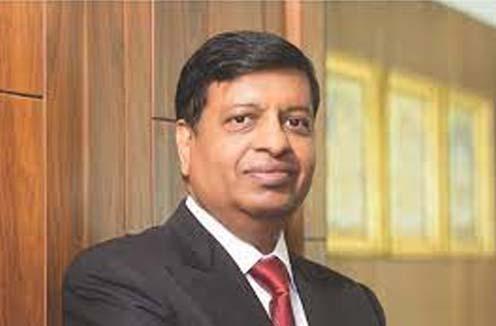
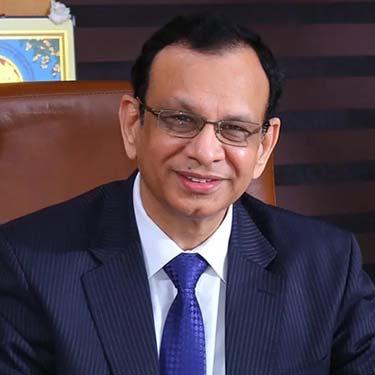
arur Vysya Bank, under MD & CEO
B Ramesh Babu, delivered a robust Q1 FY26 with all-round improvements in profit, asset quality, and business size. Net profit increased 13.5% year-on-year to Rs 521 crore, compared to Rs 459 crore in Q1 FY25. Total income rose 12.8% yearon-year, reaching Rs 3,016 crore as of June 30, 2025, underpinned by strong growth in advances and healthy interest earnings. Net interest income (NII) expanded 5.1% to Rs 1,080 crore, while net interest margin (NIM) for the quarter stood at 3.86%, slightly lower than last year’s 4.14% due to increased deposit costs. Karur Vysya’s total business volume reached Rs 1,96,024 crore, marking a 15.27% increase from Q1 last year, with total deposits crossing the Rs 1 lakh crore milestone at Rs 1,06,650 crore, which was up by 15.49% YoY. Advances grew 15.01% YoY to Rs 89,374 crore, showing solid credit growth across retail, MSME, and corporate segments. Commission and fee-based income also climbed 5% to Rs 251 crore, supporting the bank’s revenue streams. Operating expenses increased to Rs 721 crore, with the cost-to-income ratio stable at 47.24%. Asset quality metrics improved distinctly, as gross NPA fell to 0.66% from 1.32% last year, while net NPA declined to 0.19%. The provision coverage ratio edged up to 96.76%. Capital adequacy ratio under Basel III rose to a robust 17.36%, supporting future growth plans. CEO Ramesh Babu’s leadership continues to drive digital innovation, operational discipline, and customer base expansion to build long-term resilience and sustained profitability. The outlook remains positive as Karur Vysya Bank leverages its improved financial position to pursue prudent growth and sector leadership in FY26.
Life Insurance Corporation of India (LIC), under the guidance of CEO & MD R. Doraiswamy, delivered a resilient Q1 FY26 with steady growth across all metrics despite a challenging macro environment. Net profit rose 5% year-on-year to Rs 10,986 crore, up from Rs 10,461 crore in Q1 FY25, as improved product mix and greater efficiency drove profitability. Total income for the quarter expanded to Rs 2,22,864 crore from Rs 2,10,910 crore a year ago, on the back of stable growth in new business premiums and strong renewal collections. Net premium income rose 4.8% year-on-year to Rs 1,19,200 crore, underlining LIC’s dominance with a 63.5% market share by first-year premium income. The Value of New Business (VNB), a key profitability metric, surged 20.7% to Rs 1,944 crore. Assets Under Management (AUM) also increased 6.5% from Rs 53.6 lakh crore to Rs 57.05 lakh crore, affirming LIC’s industry-leading scale. Despite the positive top-line and bottom-line growth, individual policy sales in Q1 declined by 15% YoY, suggesting some pressure on volume as the product mix shifted toward more profitable segments. LIC continued to optimize its balance sheet and boost bancassurance channel performance, with bancassurance and non-par product business reaching new highs. CEO R. Doraiswamy emphasized continued digital initiatives, channel partner expansion, and new product launches tailored to shifting customer preferences. With a strategy targeting double-digit profit growth for the full year, LIC remains confident in its ability to further cement its dominance in the Indian life insurance sector and deliver long-term value.
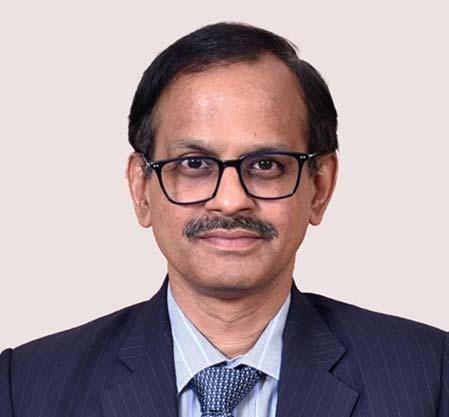
anappuram Finance, led by Chairman & MD VP Nandakumar and its new CEO Deepak Reddy who took charge post Q1 on August 1st, achieved a 10% YoY revenue raise in its mainstay of gold loans to Rs 1,904 crore. The gold loan segment remained profitable too with profit before tax in gold loans coming in at Rs 539 crore, but was down from Rs 619 crore last year. But reflecting the nationwide and sectorwide slump in microfinance, Manappuram’s microfinance revenue dropped over 53% to Rs 361 crore, sharply impacting profit. The microfinance segment swung to a PBT loss of Rs 437 crore versus a profit of Rs 775 crore a year ago. This resulted in a steep setback in Q1 FY26 as consolidated net profit slumped 75% year-on-year to Rs 138 crore from Rs 555 crore a year ago. Total revenue declined 9% to Rs 2,262 crore, with solid gains in the gold loan segment cushioning a significant contraction in microfinance and vehicle lending. While this dramatic reversal might seem to be a reflection of heightened delinquencies and provisioning in the microfinance book, it is more likely to be an impact of an accelerated one-off cleaning up of the microfinance book post the coming in of Bain Capital Asia as a co-promoter. Bain had invested Rs 4385 crore for acquiring an 18% stake in Manappuram Finance, earlier this year. Asset quality pressure led to higher credit costs and a compressed bottom line. However, the Manappuram Board has responded by announcing an interim dividend of Rs 0.50 per share, affirming confidence in the company’s underlying financial resilience. CMD VP Nandakumar’s leadership is now focused on recalibrating credit processes in microfinance, expanding the gold loan network, and restoring overall profitability. Manappuram’s balance sheet remains adequately capitalized, and the group continues to diversify funding and digitize its distribution model. Management expects a gradual improvement in profitability as the company stabilizes the microfinance vertical and leverages robust gold loan demand through FY26.
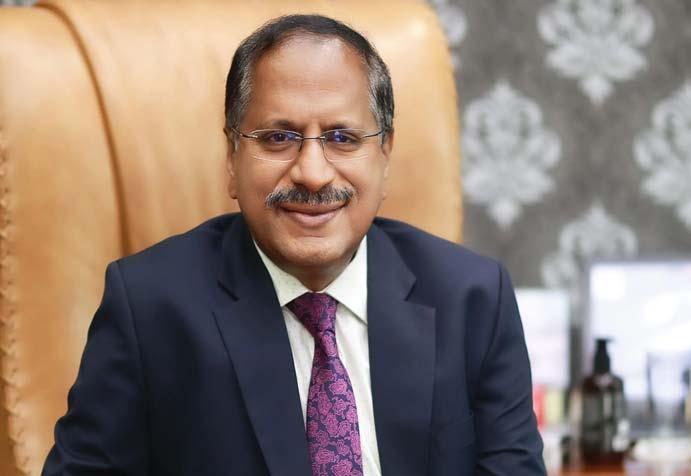
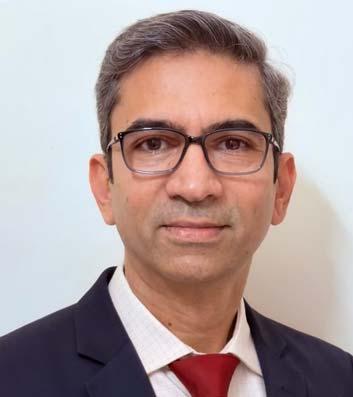
azagon Dock Shipbuilders, under the stewardship of its Chairman & MD Capt. Jagmohan, IN (Retd.), reported Q1 FY26 results marked by strong revenue but a sharp profitability decline. Total revenue grew 11.4% year-on-year to Rs 2,626 crore, up from Rs 2,357 crore in the corresponding quarter last year, thanks to solid execution of defence contracts and forward movement in shipbuilding orders. However, profit after tax dropped 35% YoY to Rs 452 crore, compared to Rs 696 crore in Q1 FY25, which is a steeper contraction than what most analysts had forecast. This steep fall in profit could be attributed to negative operating leverage and increased input costs, as EBITDA plunged 53% to Rs 302 crore and margins fell from 27.2% to 11.5% quarter-on-quarter. This reflects cost escalation in key projects, timing mismatches in project deliveries, and possible absorption of fixed costs over a larger base. Despite the margin squeeze, Mazagon Dock’s order book and revenue growth underline longterm demand from Indian Navy and Coast Guard contracts. CMD Capt. Jagmohan has prioritized ramping up supply chain efficiency, cost optimization, and timely execution. Looking ahead, Mazagon Dock’s leadership remains focused on enhancing operational efficiencies, executing a robust order pipeline, and regaining profitability as raw material costs and project cycles normalize in coming quarters. The ongoing Q2 would be the first full quarter under the new CMD.

